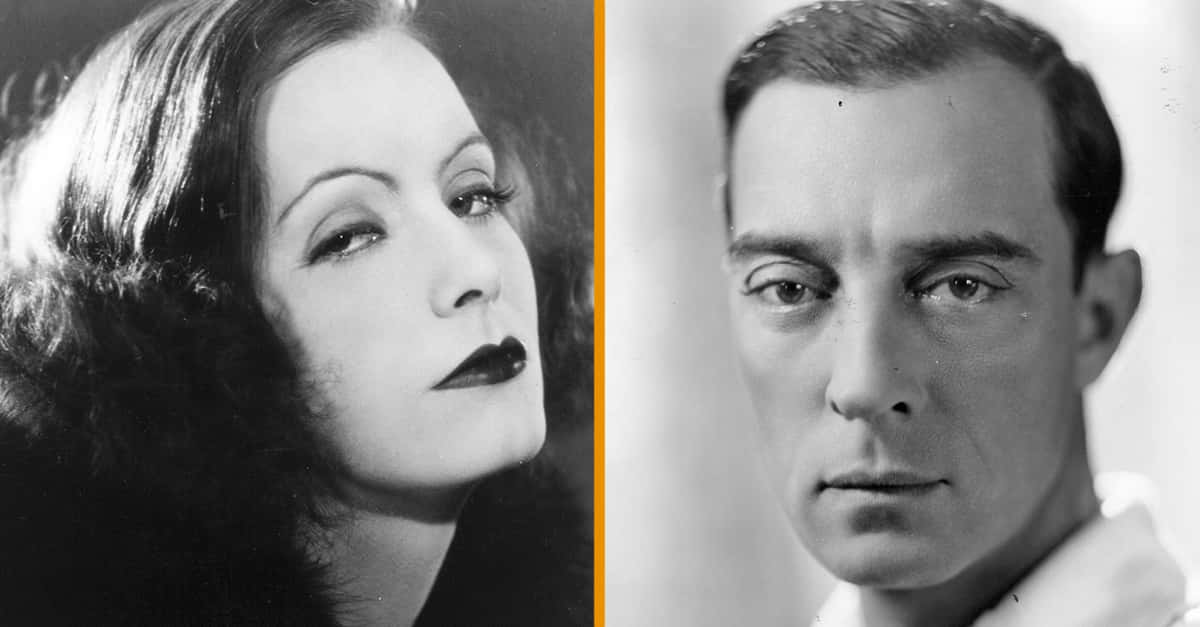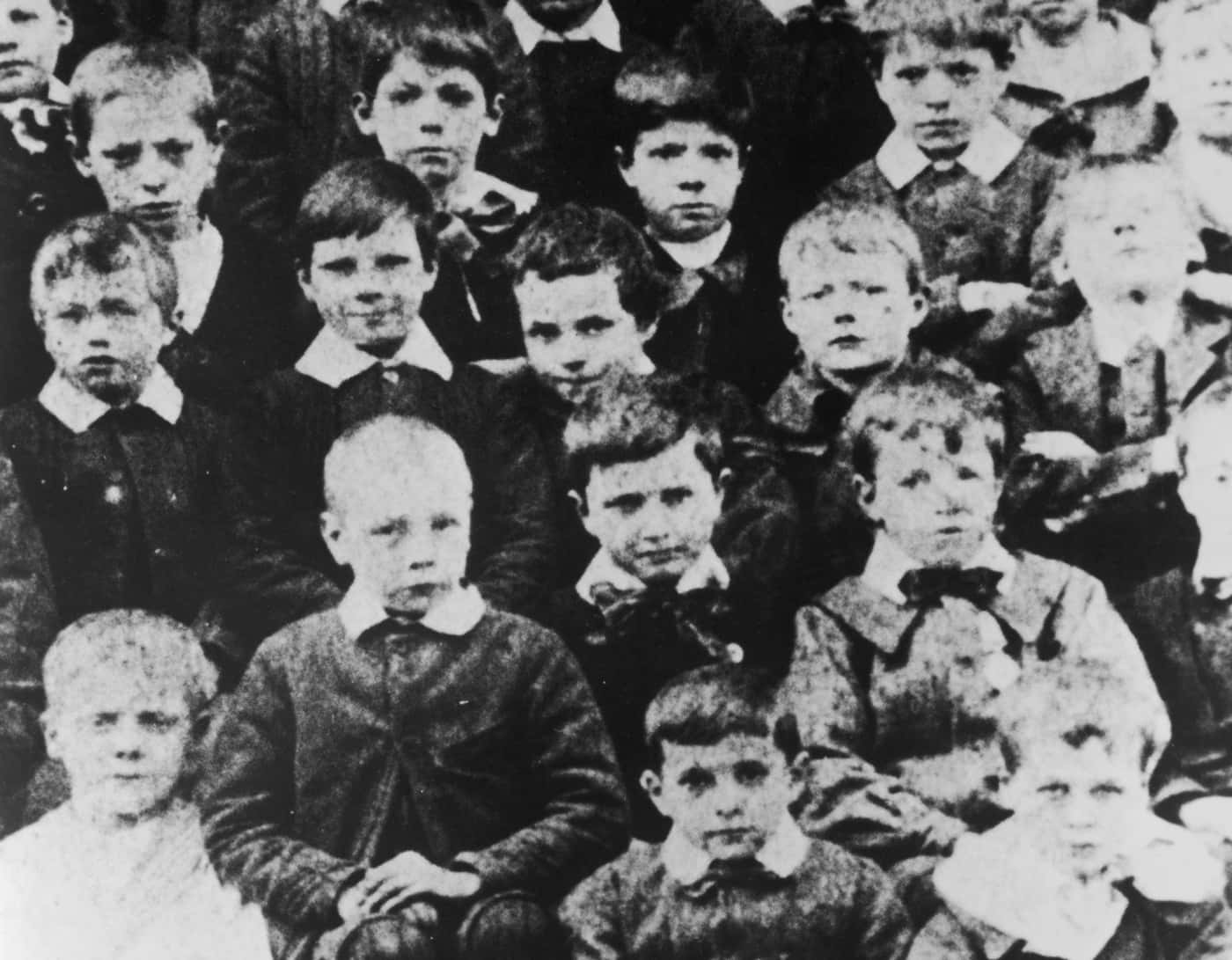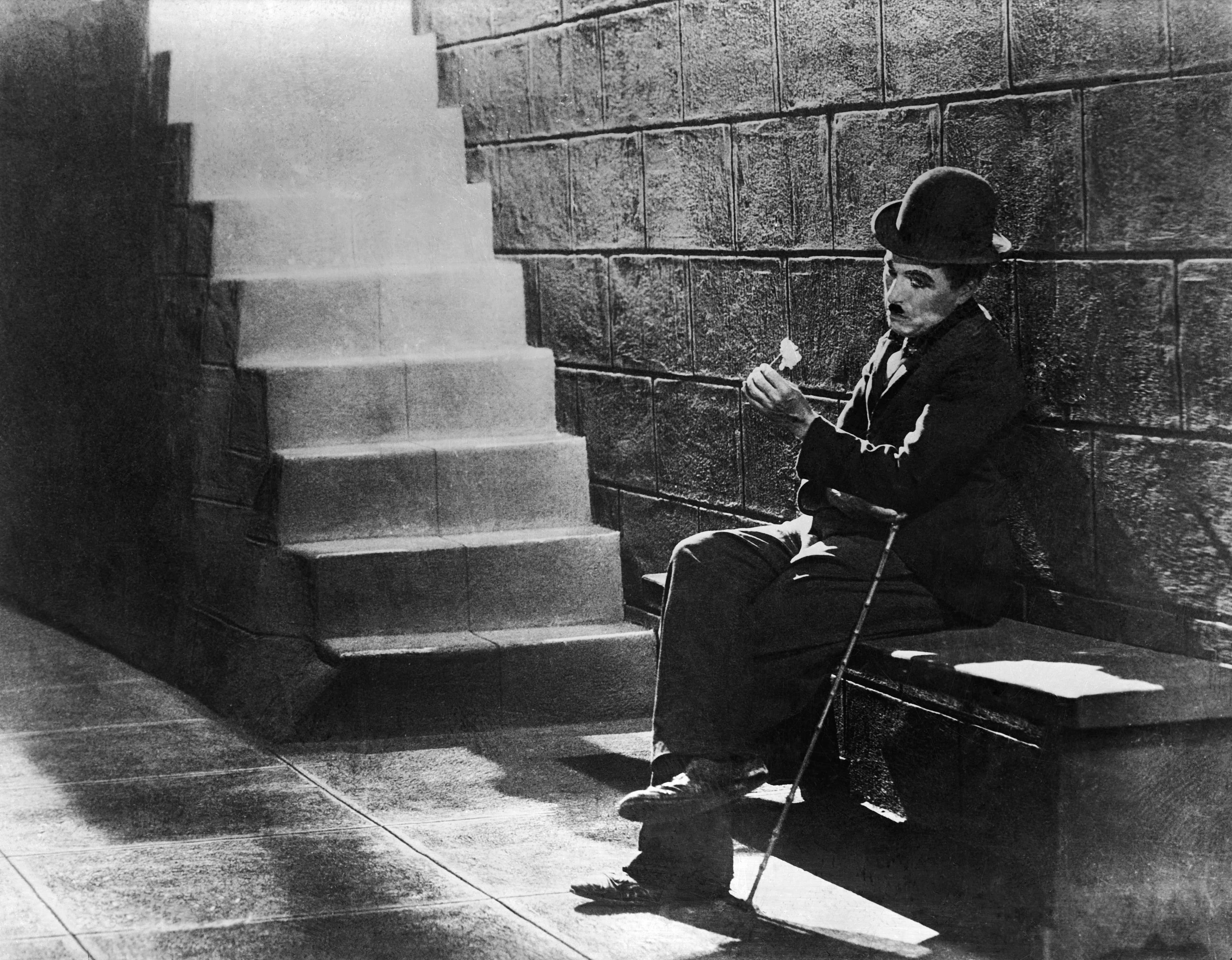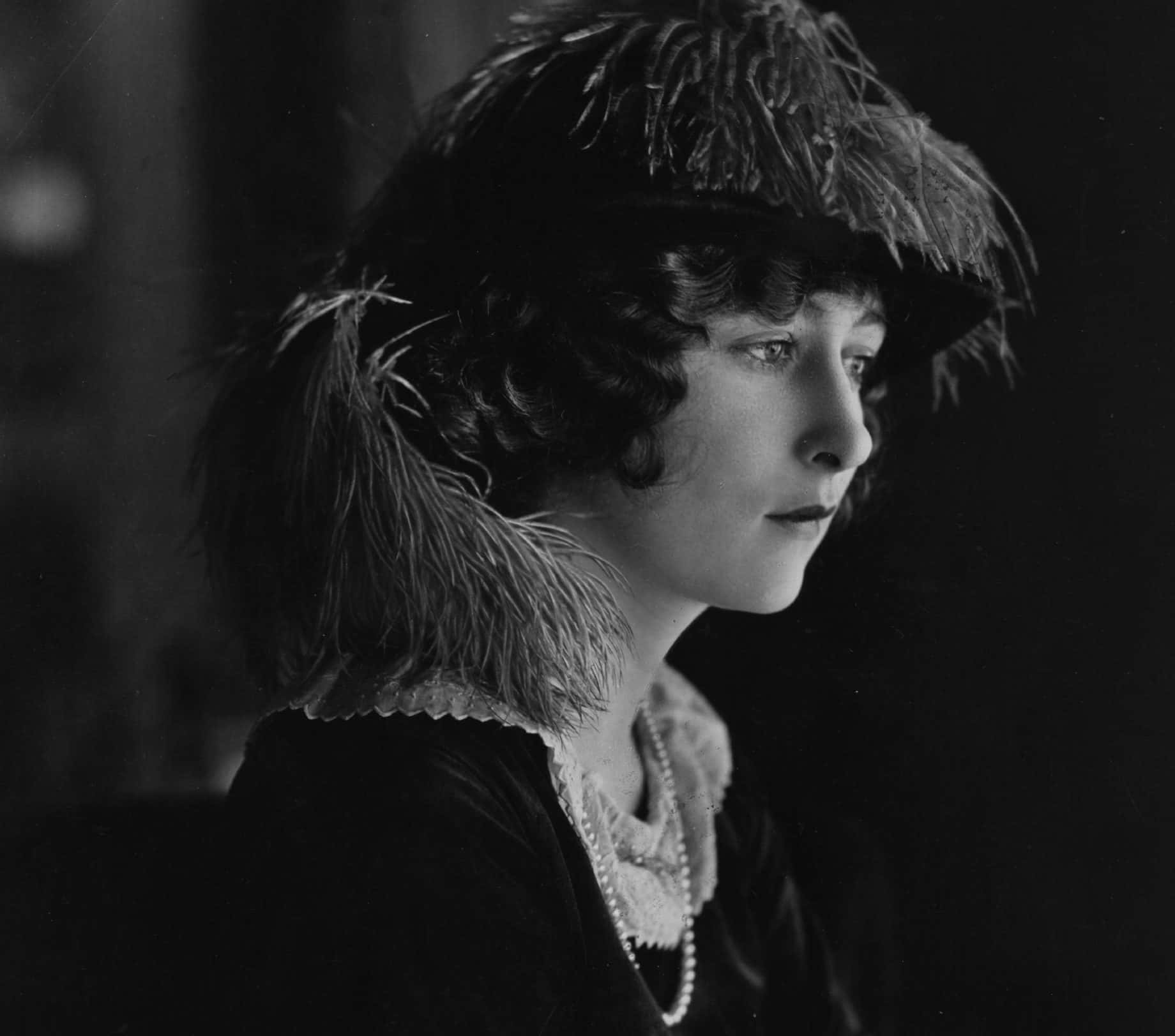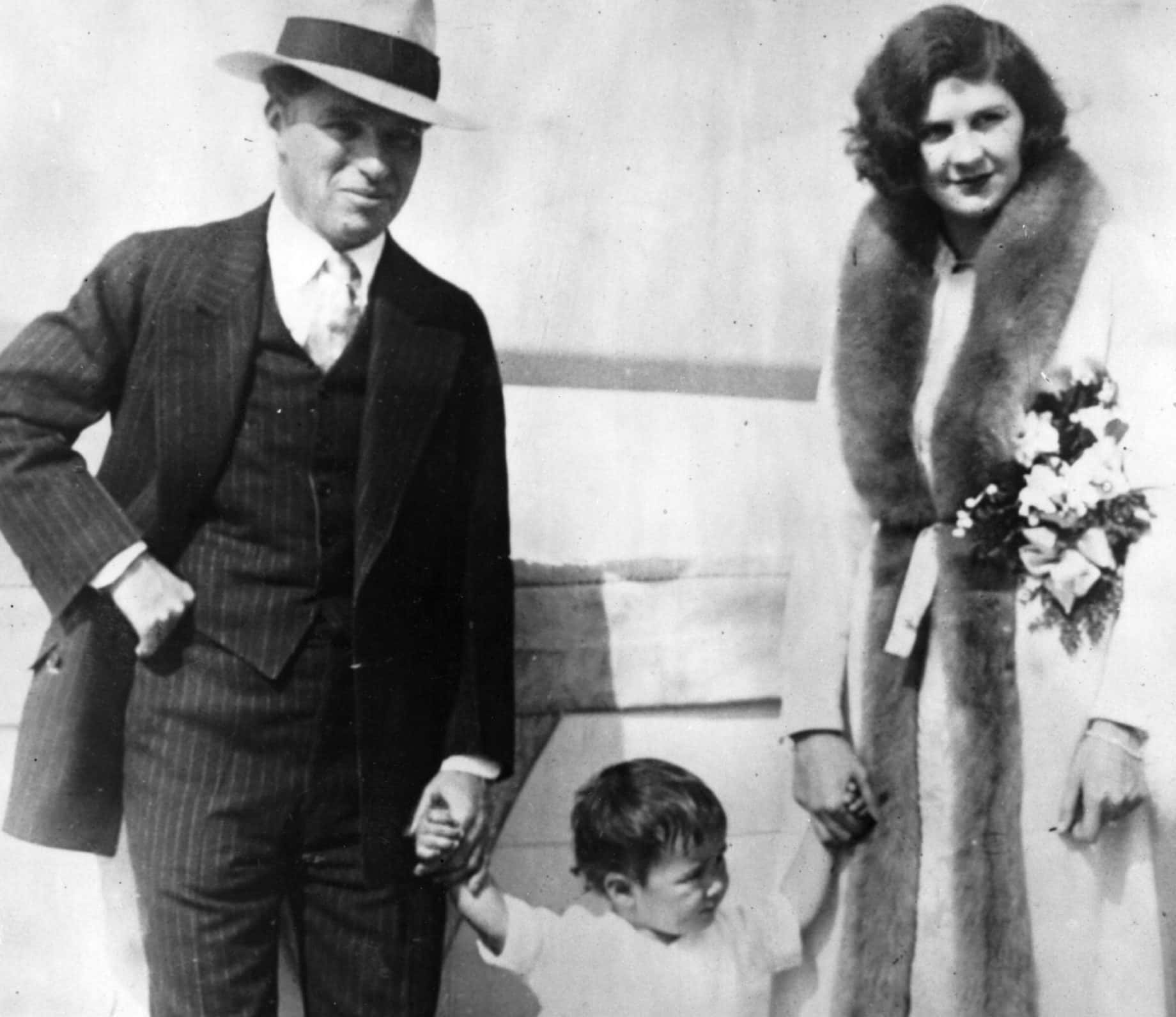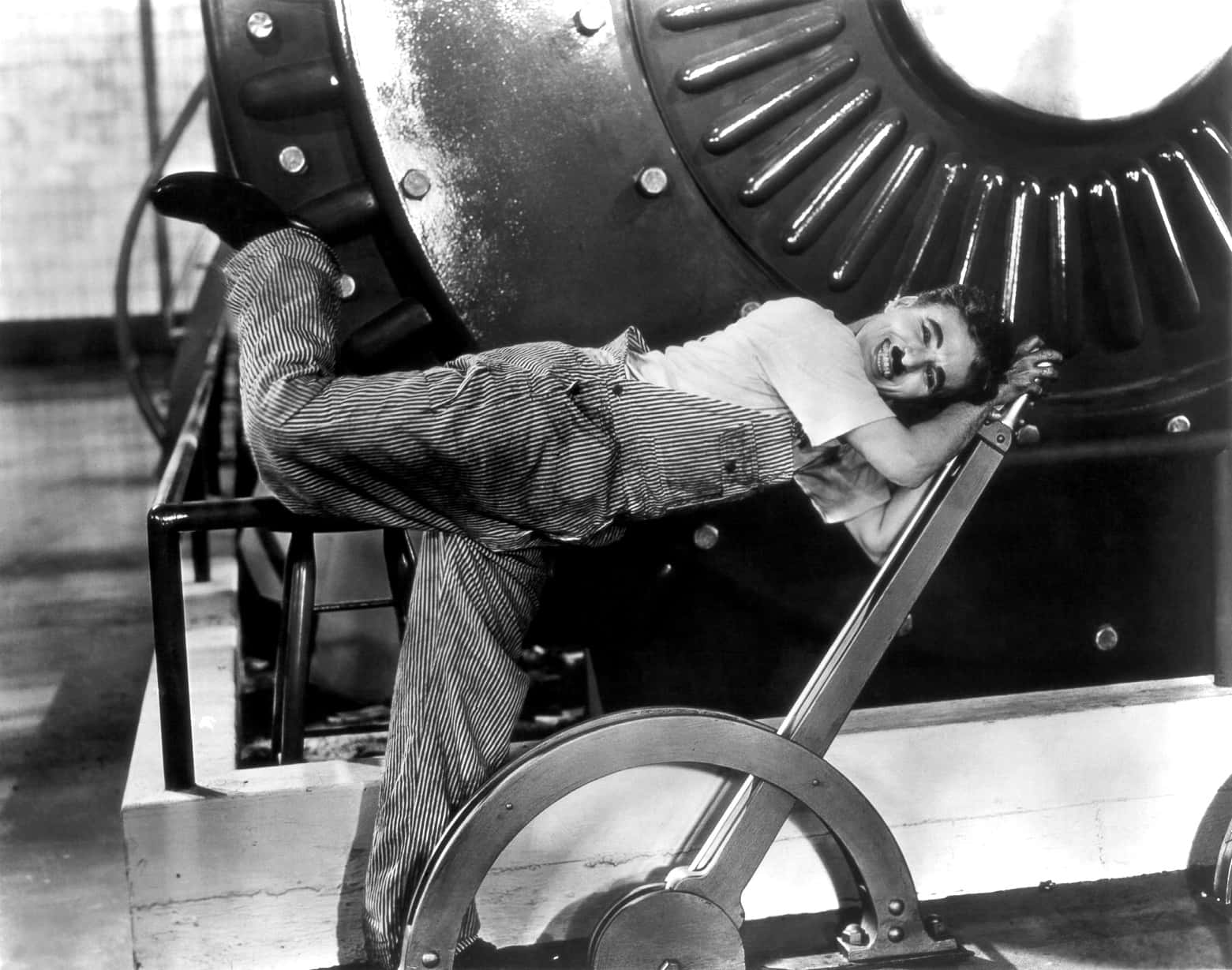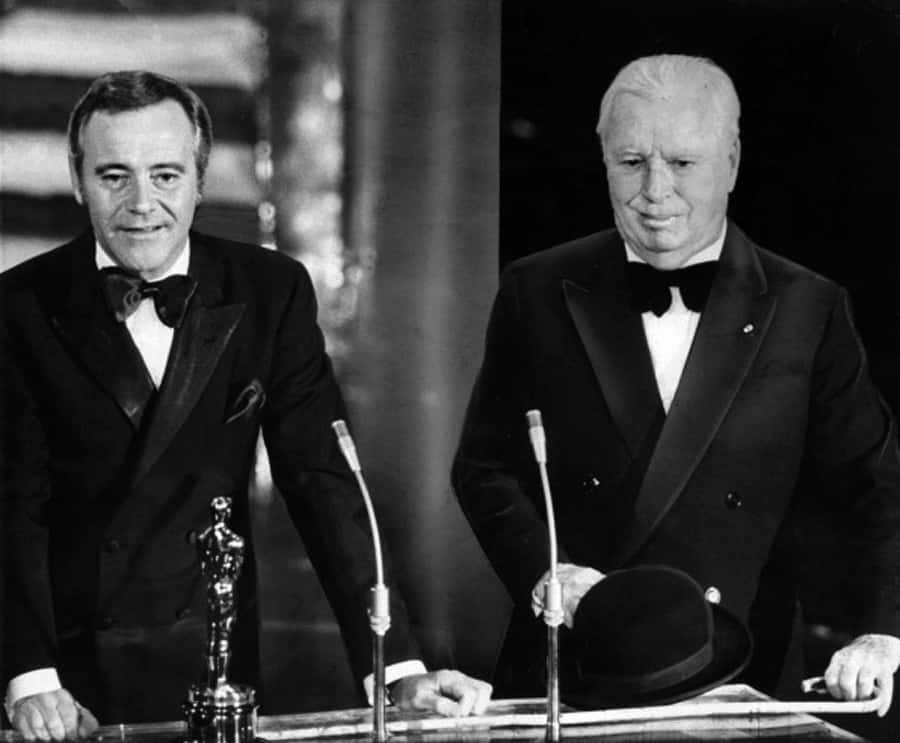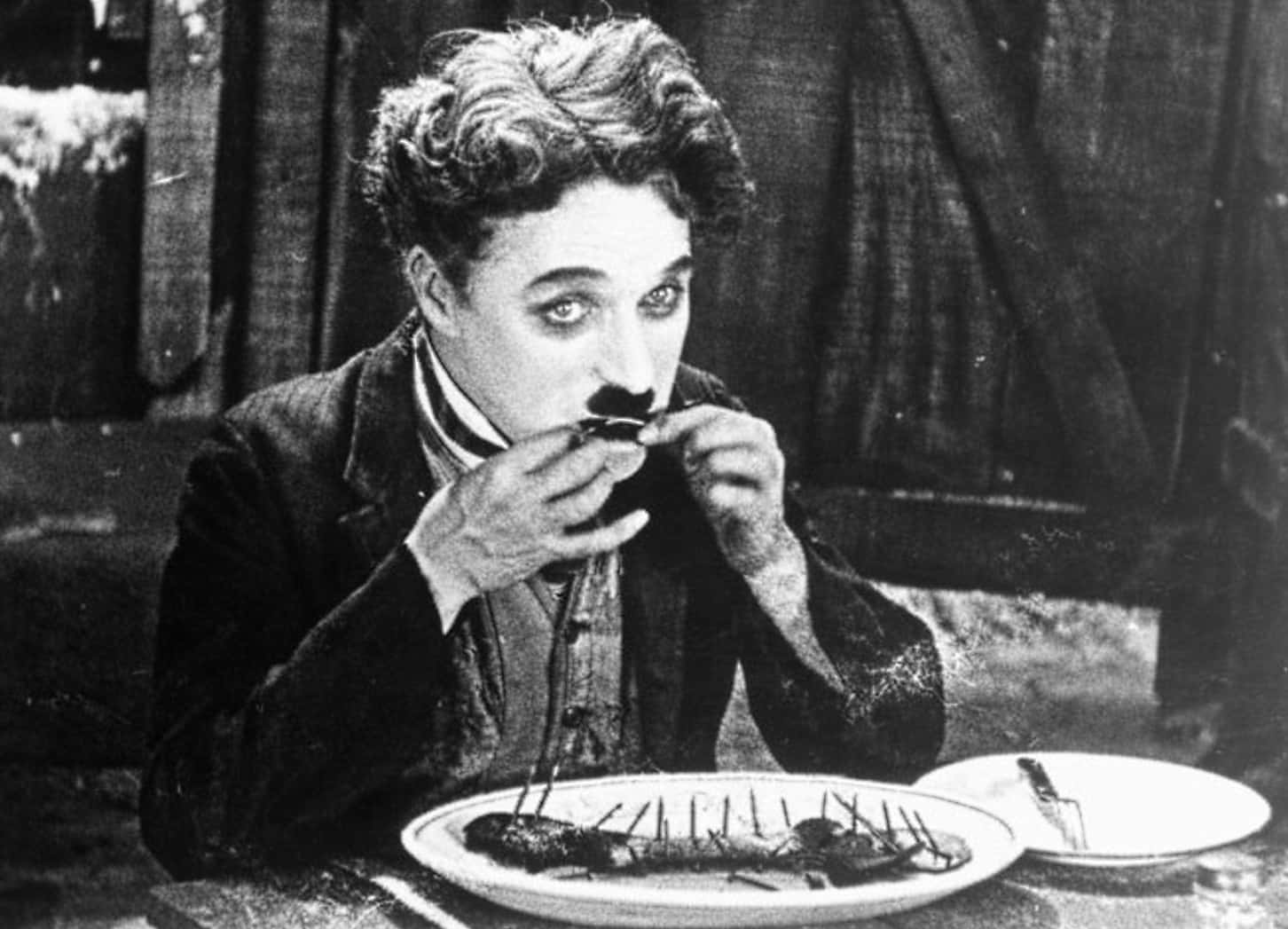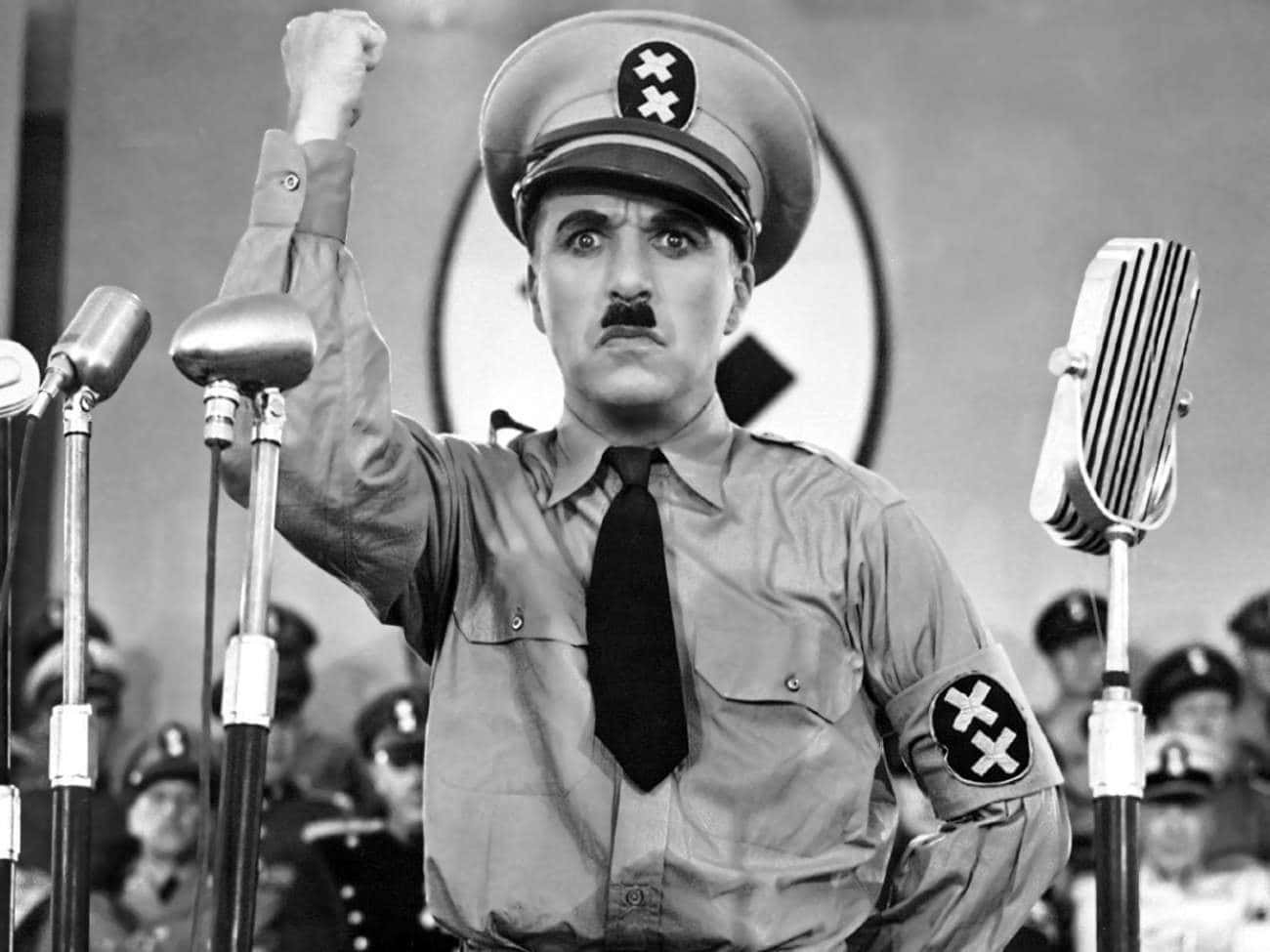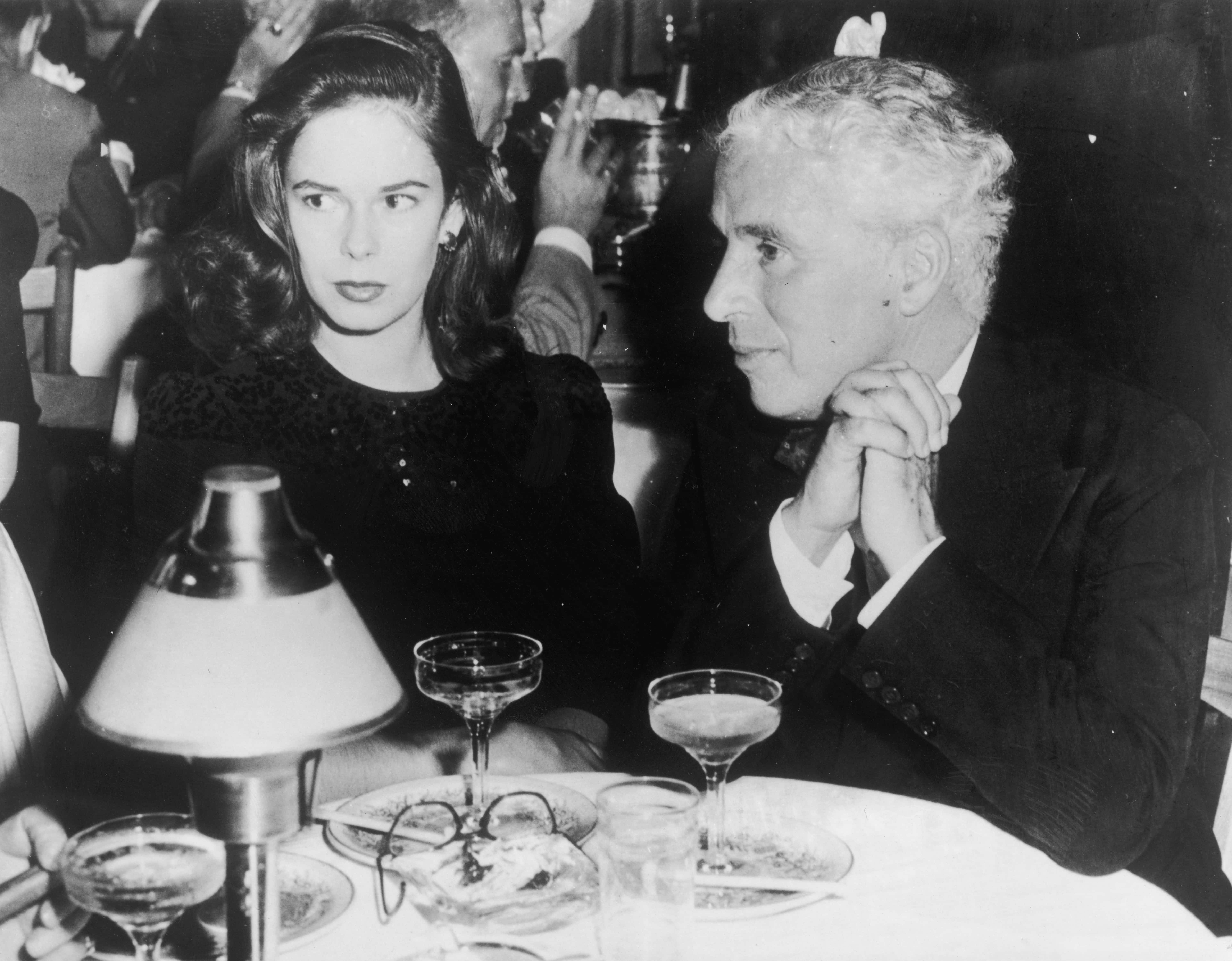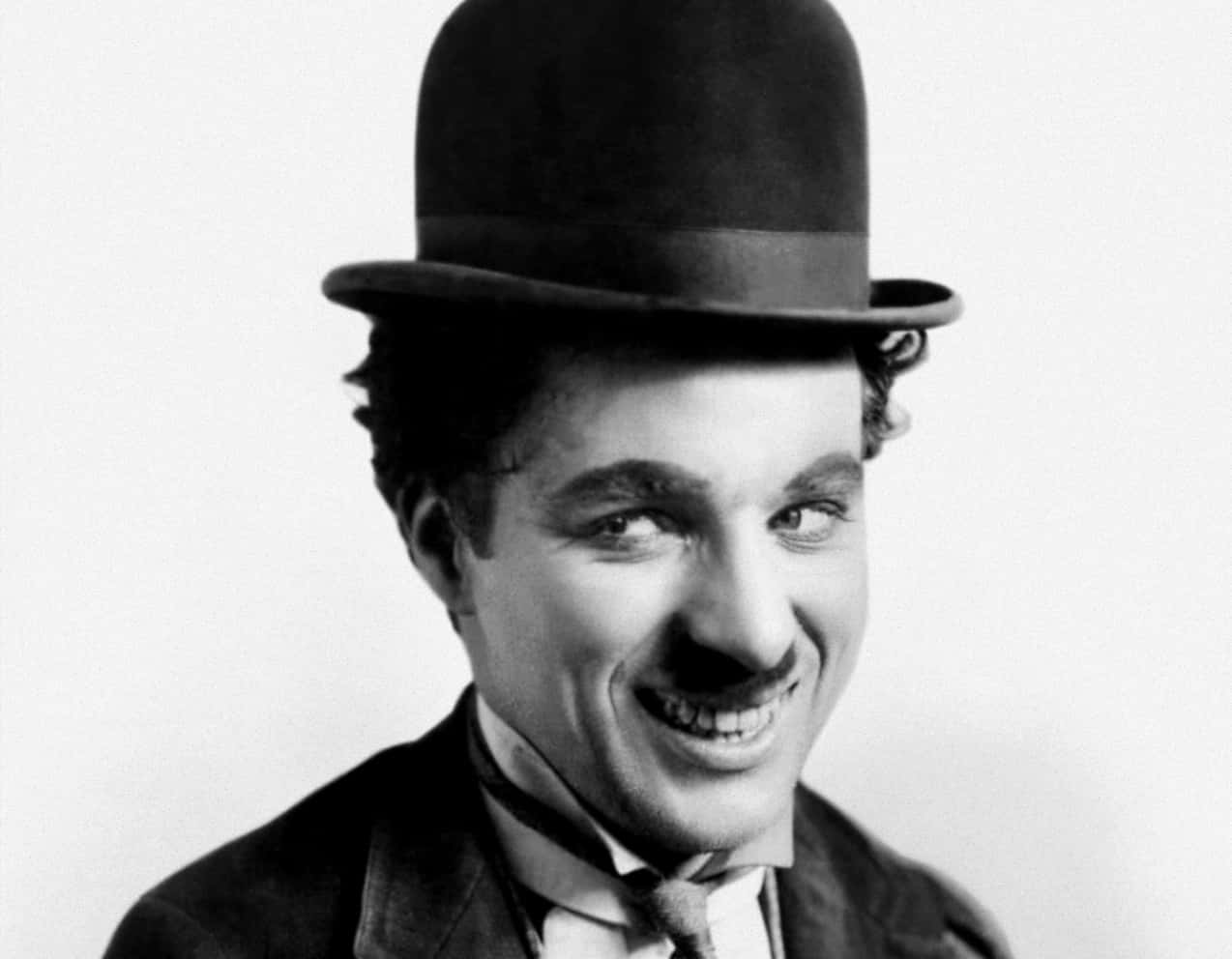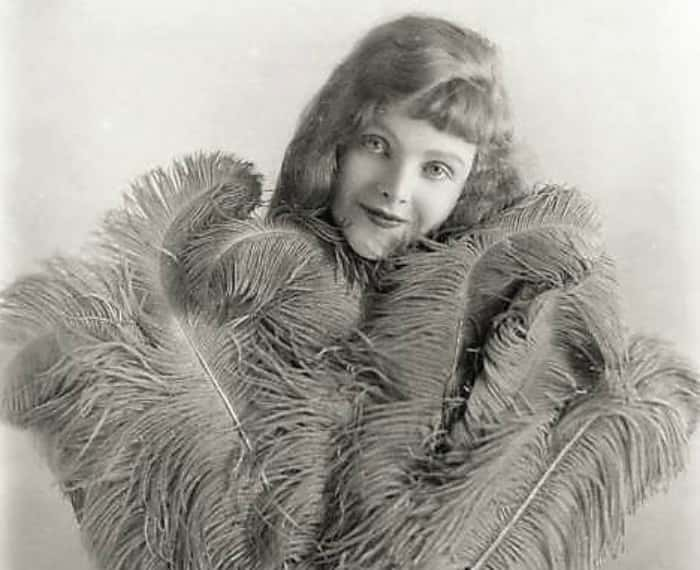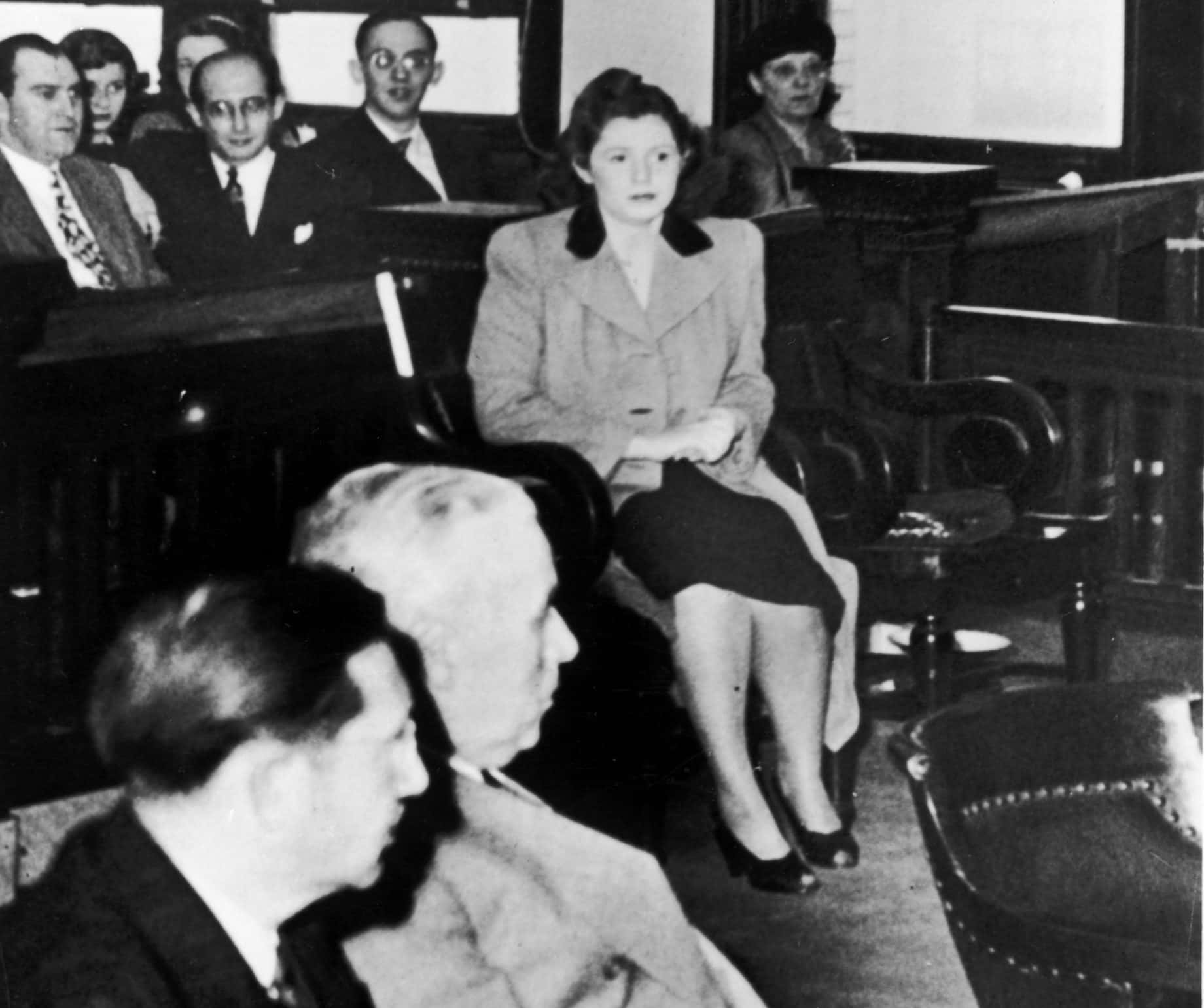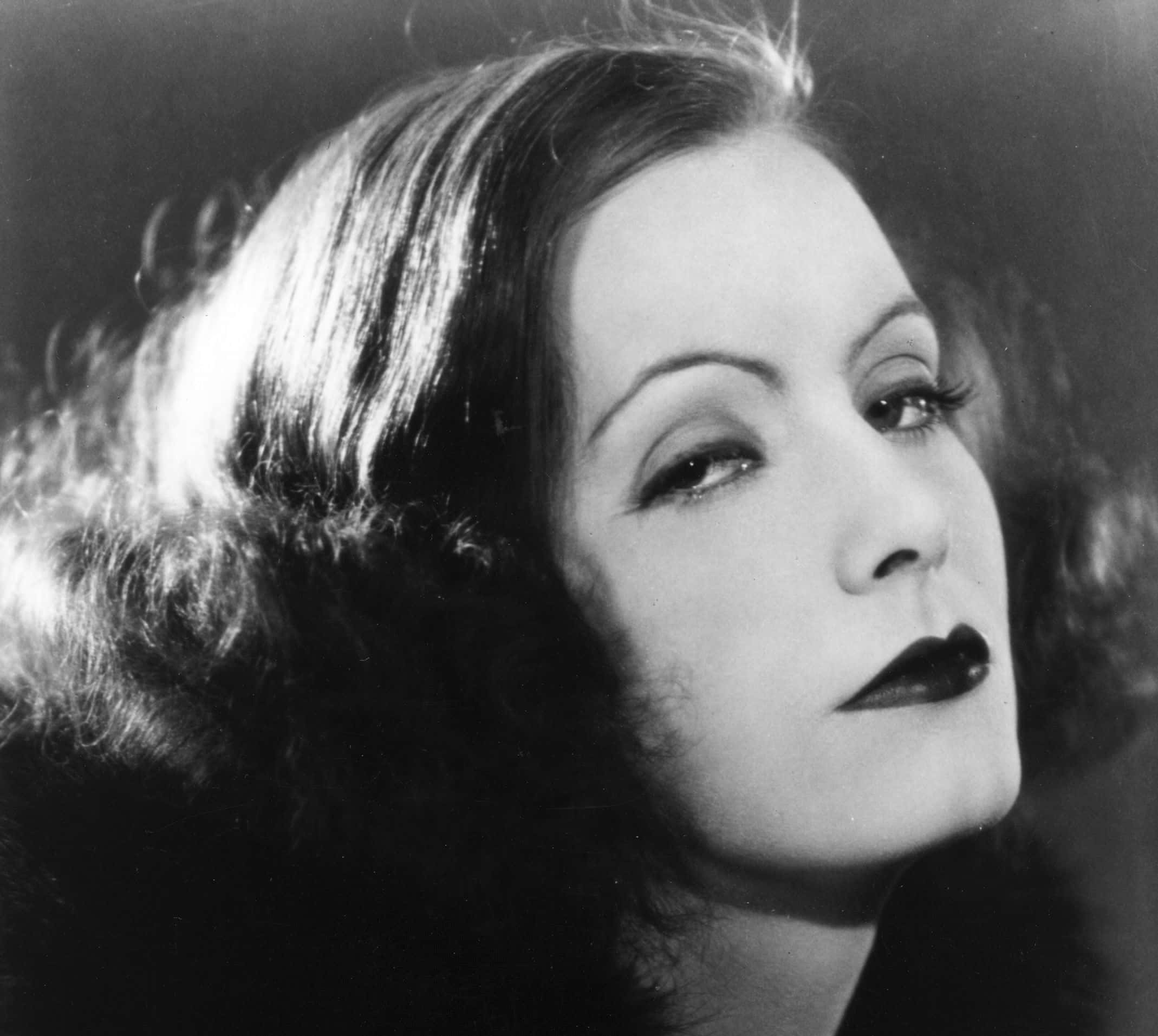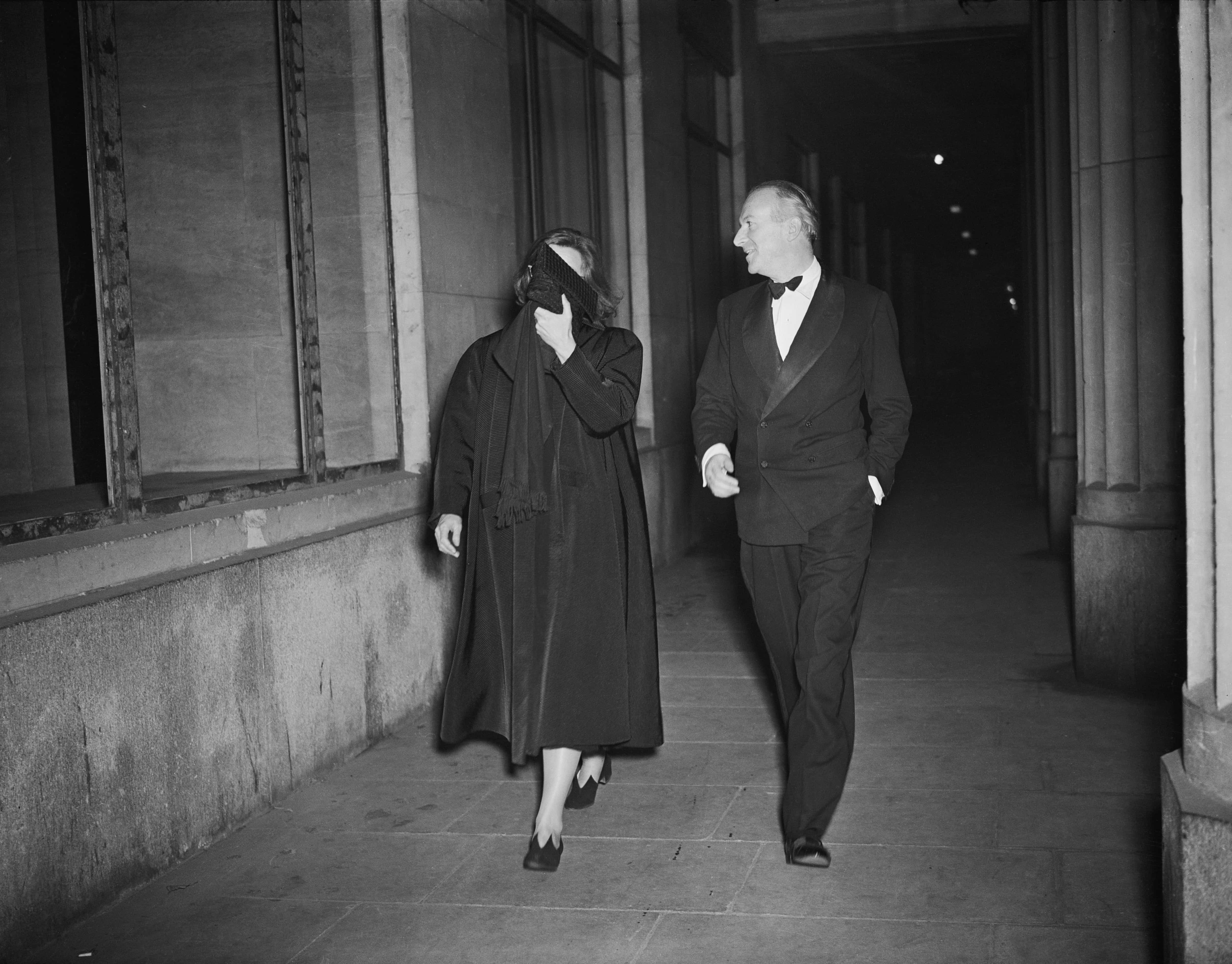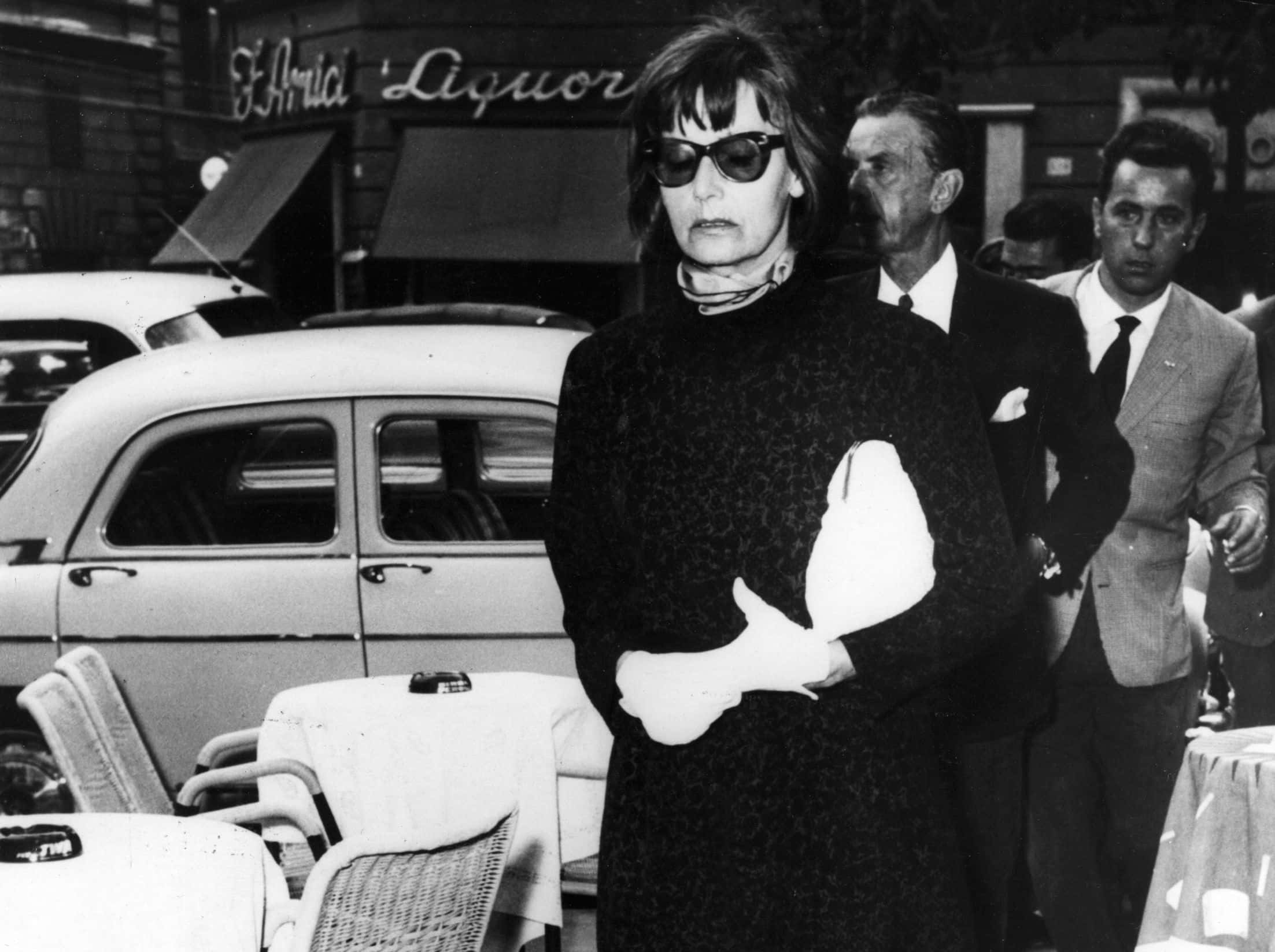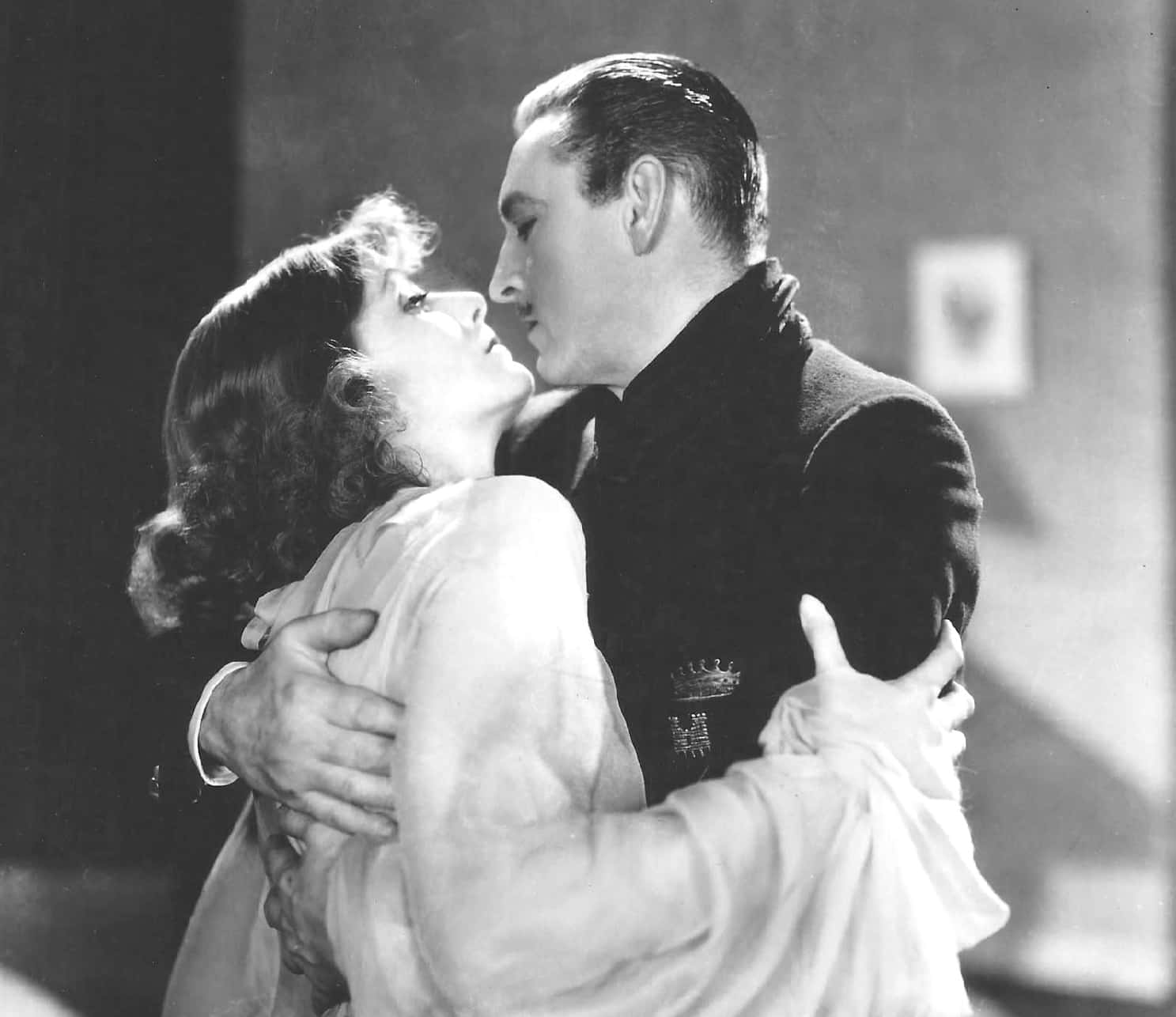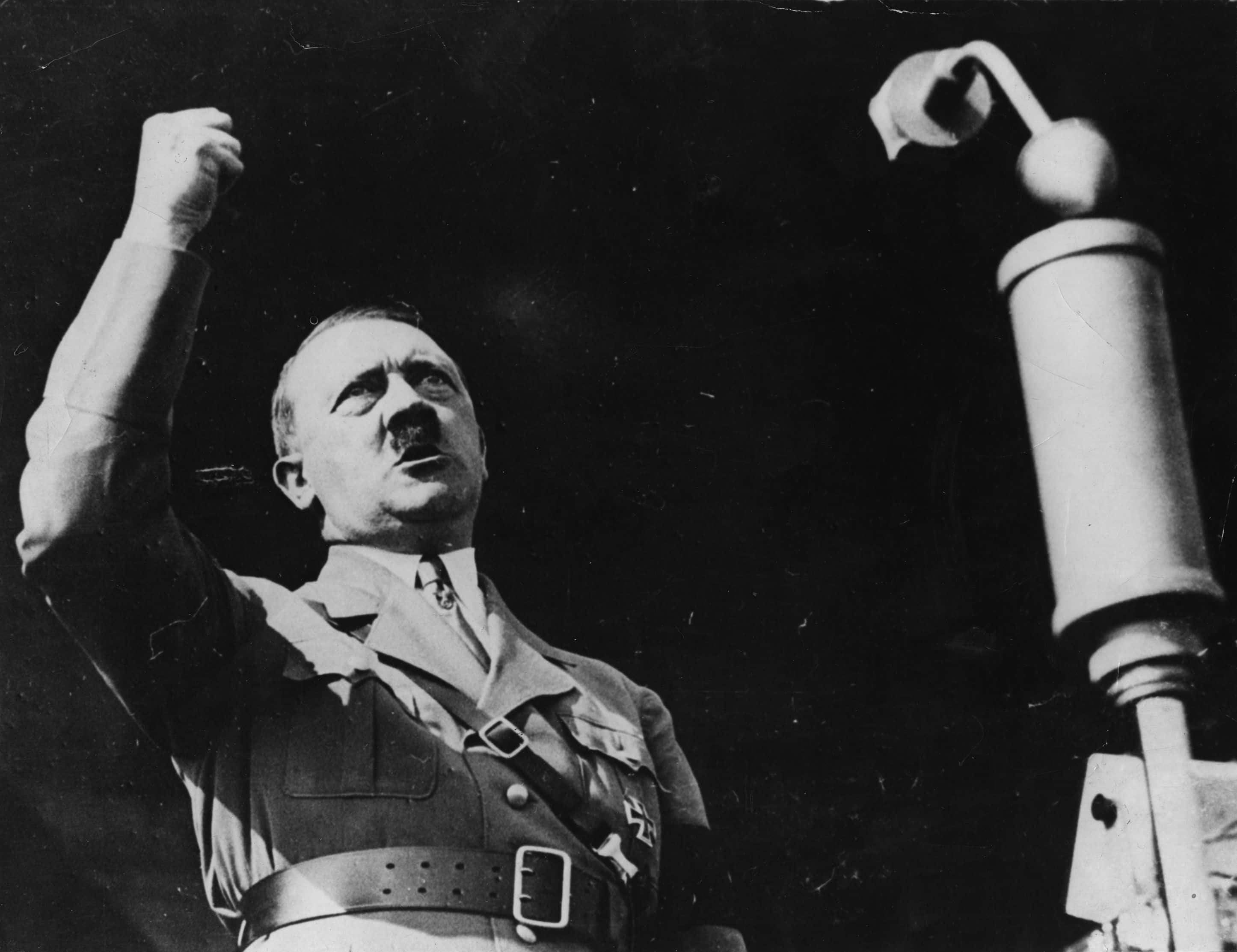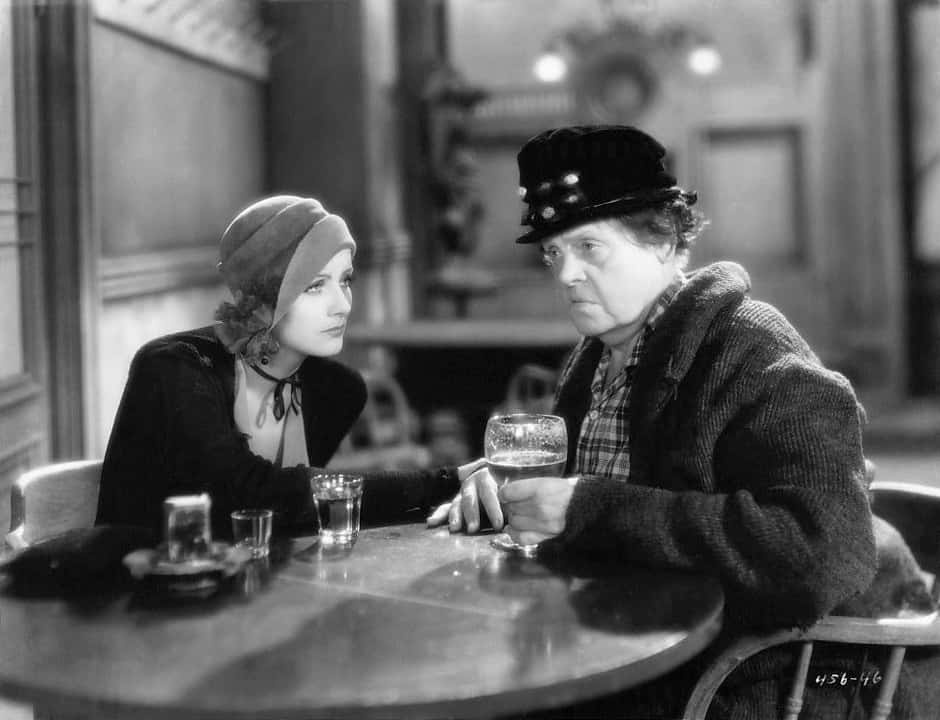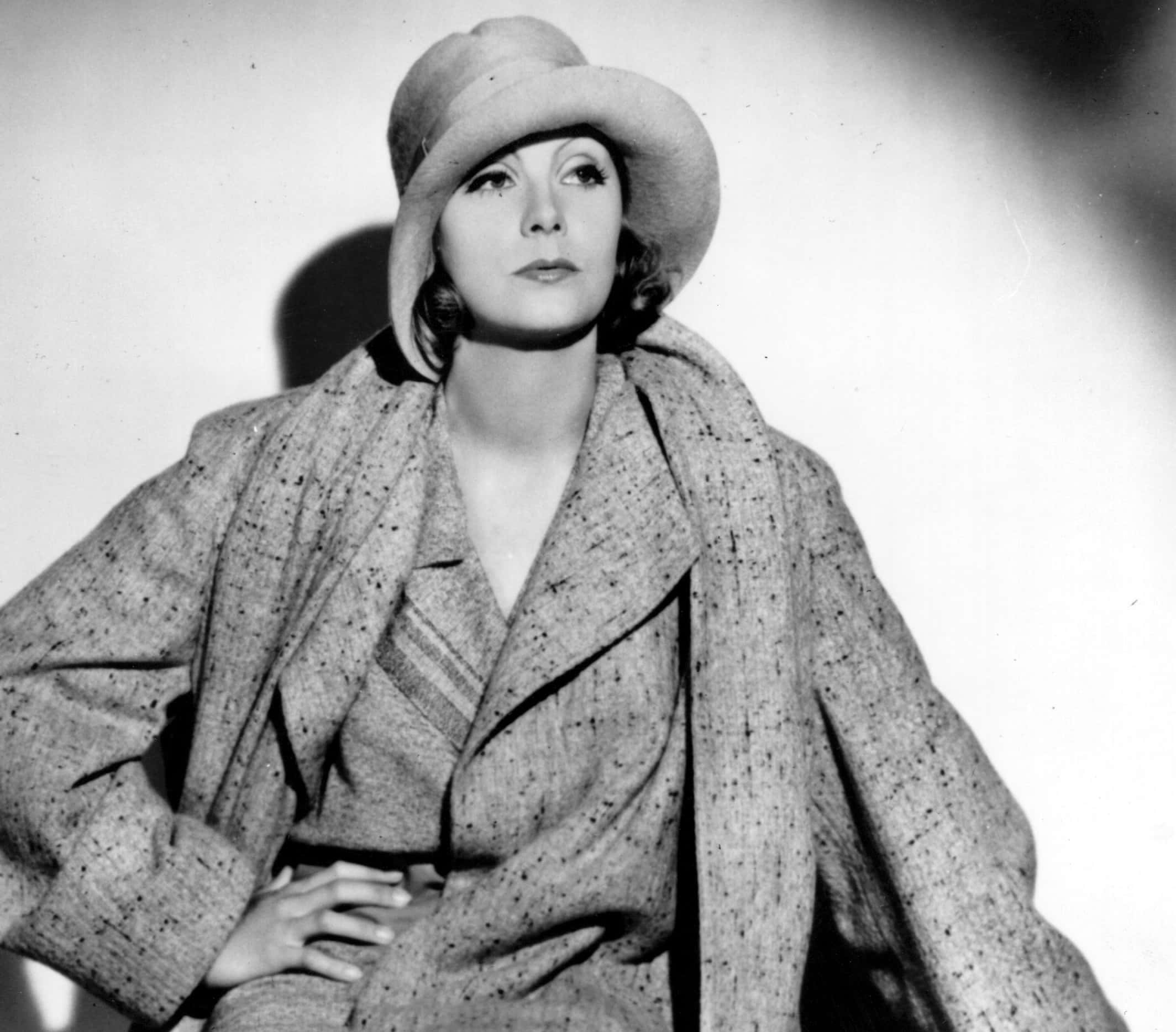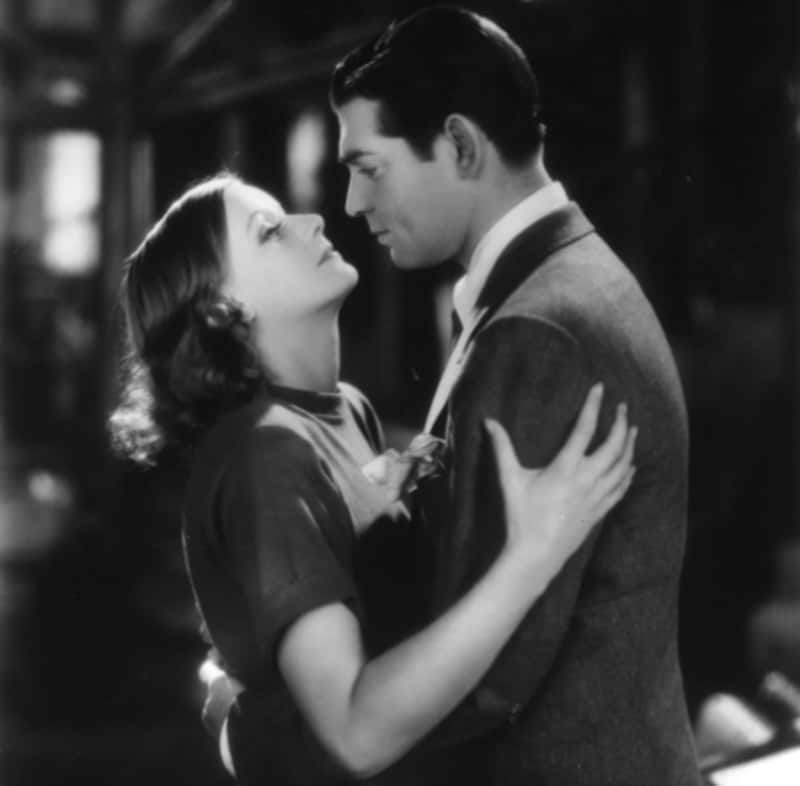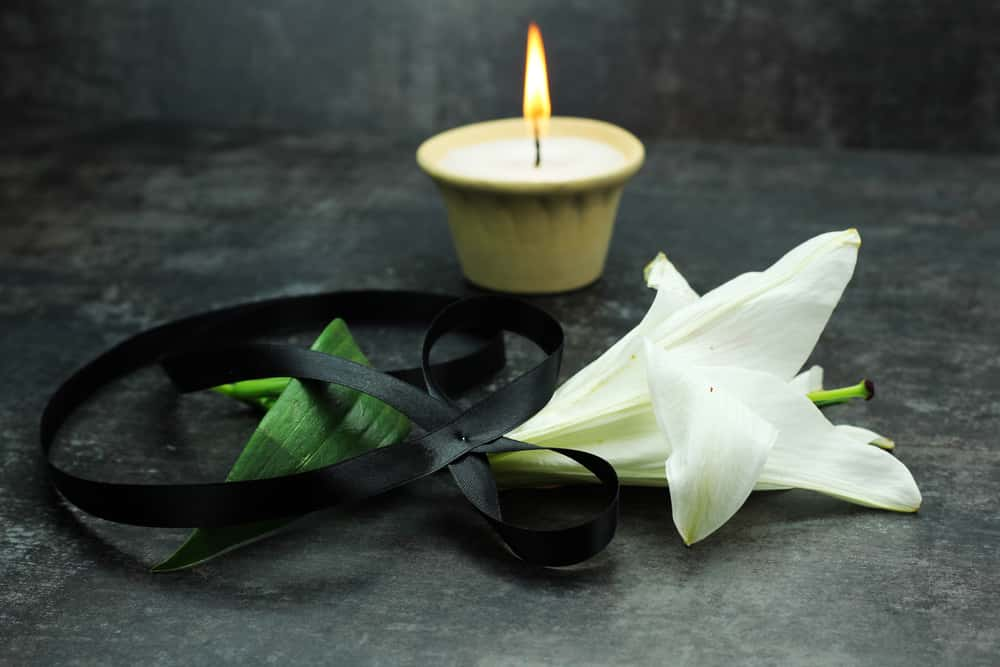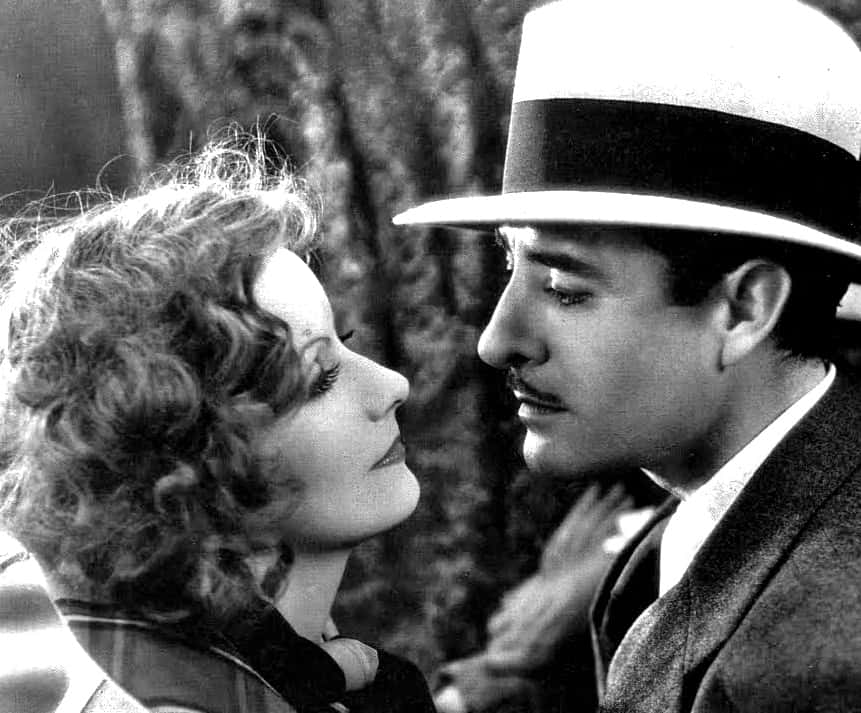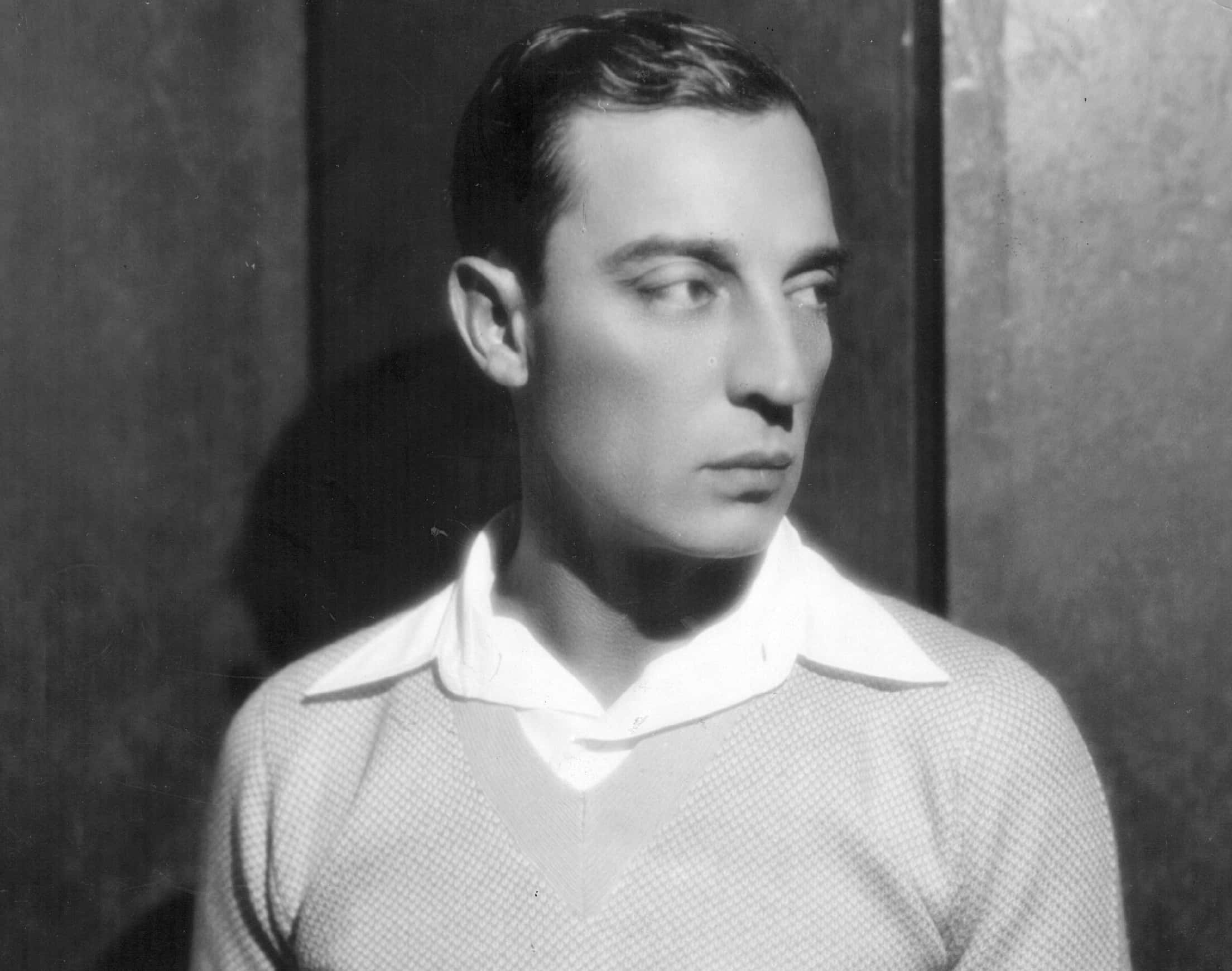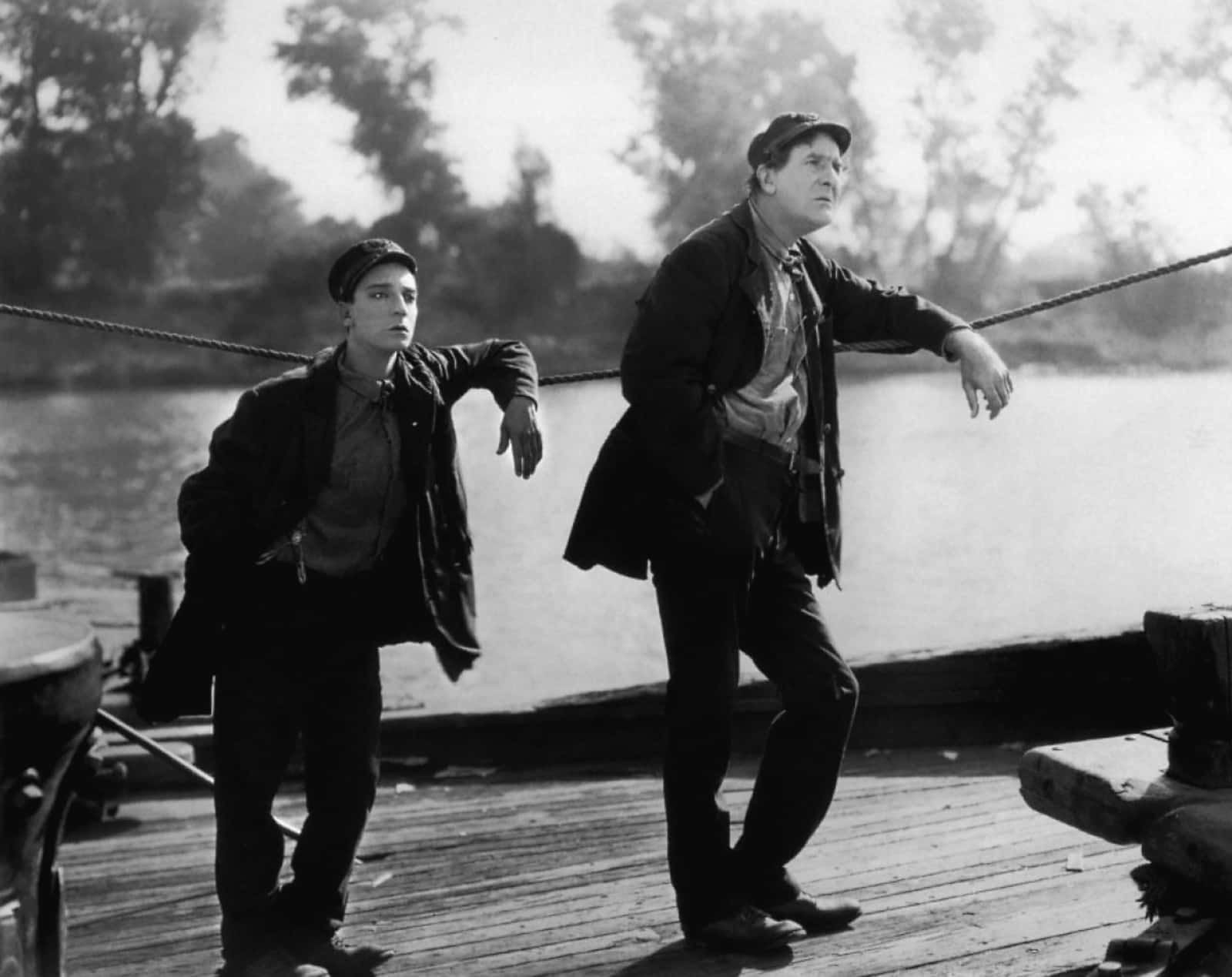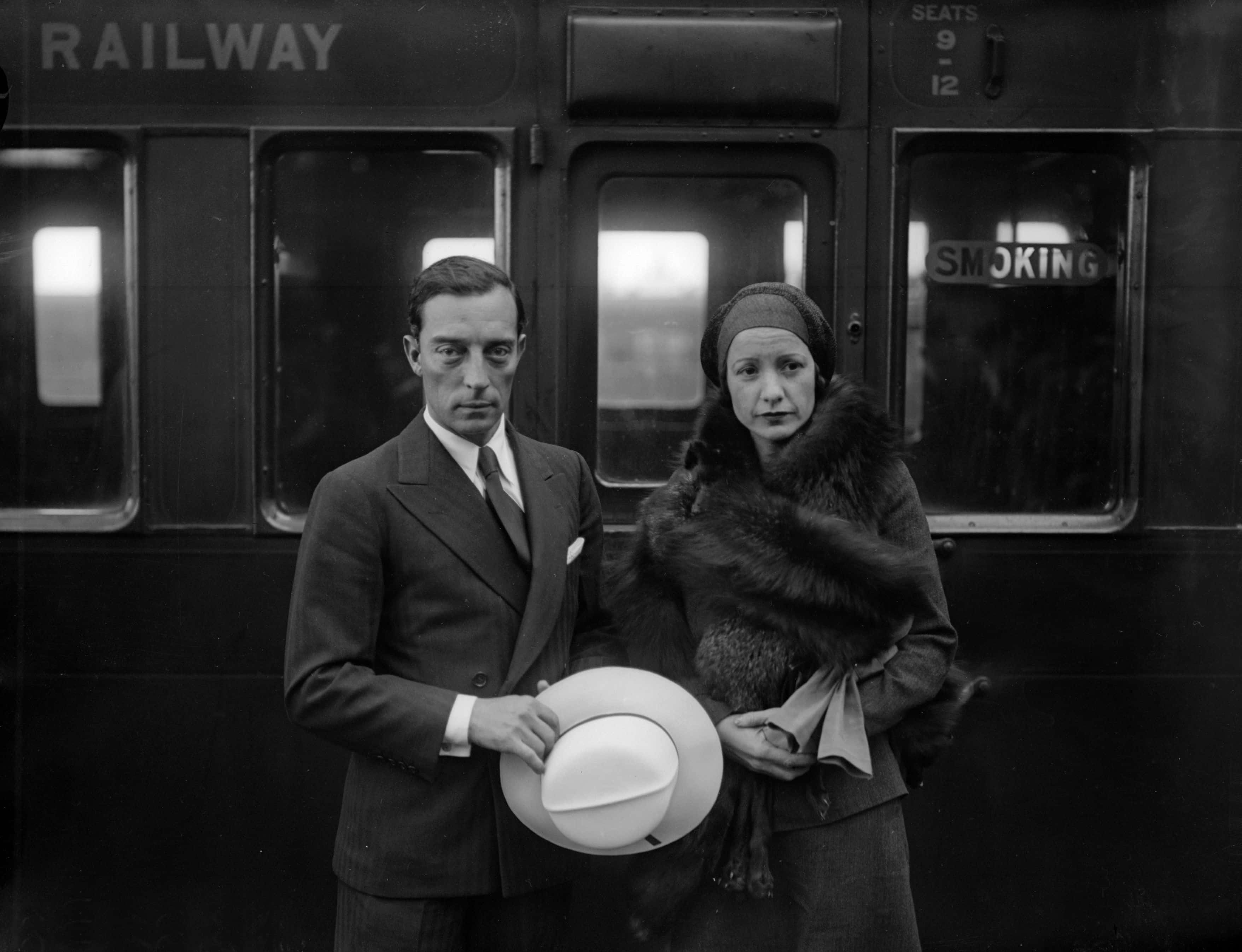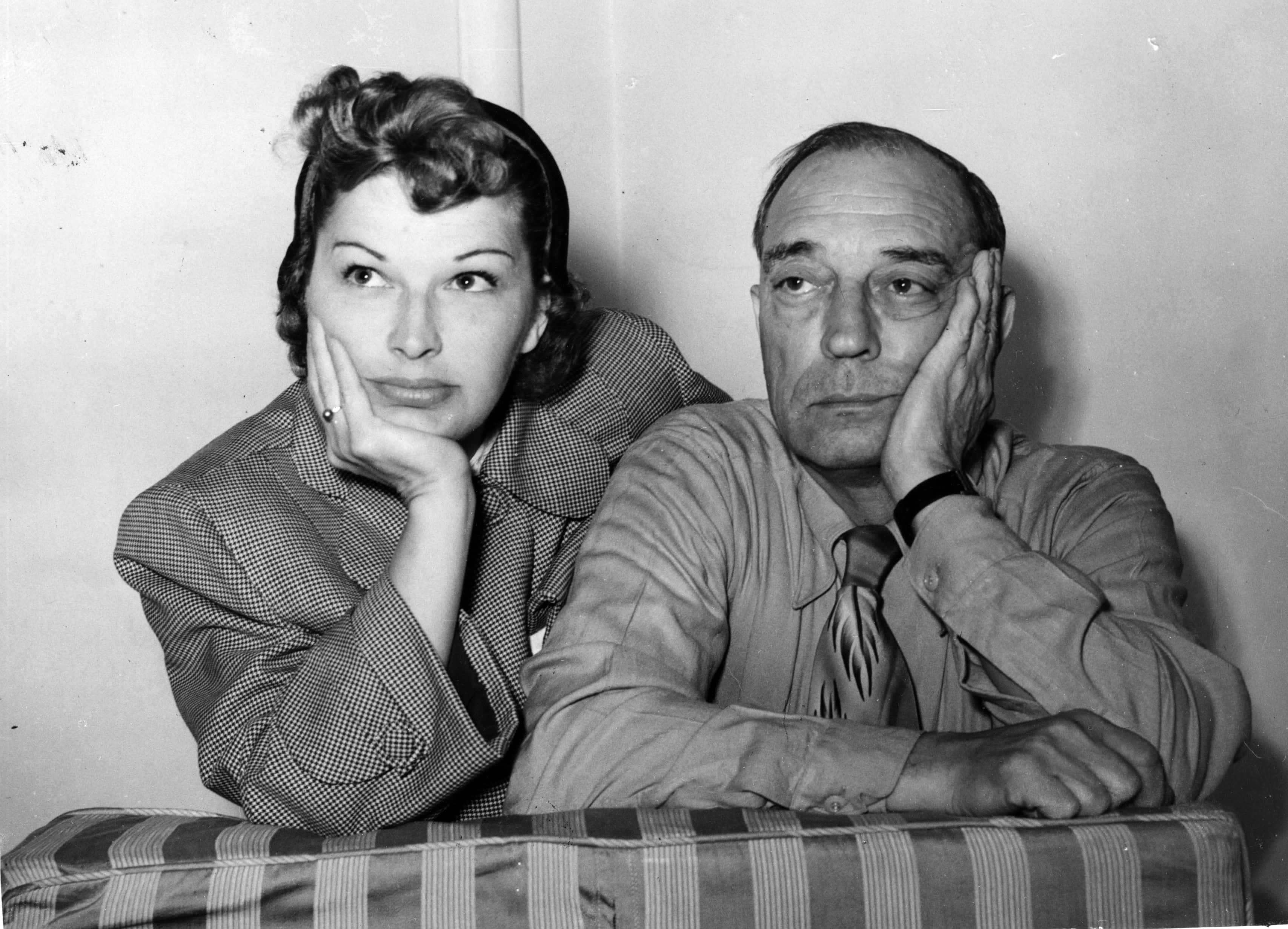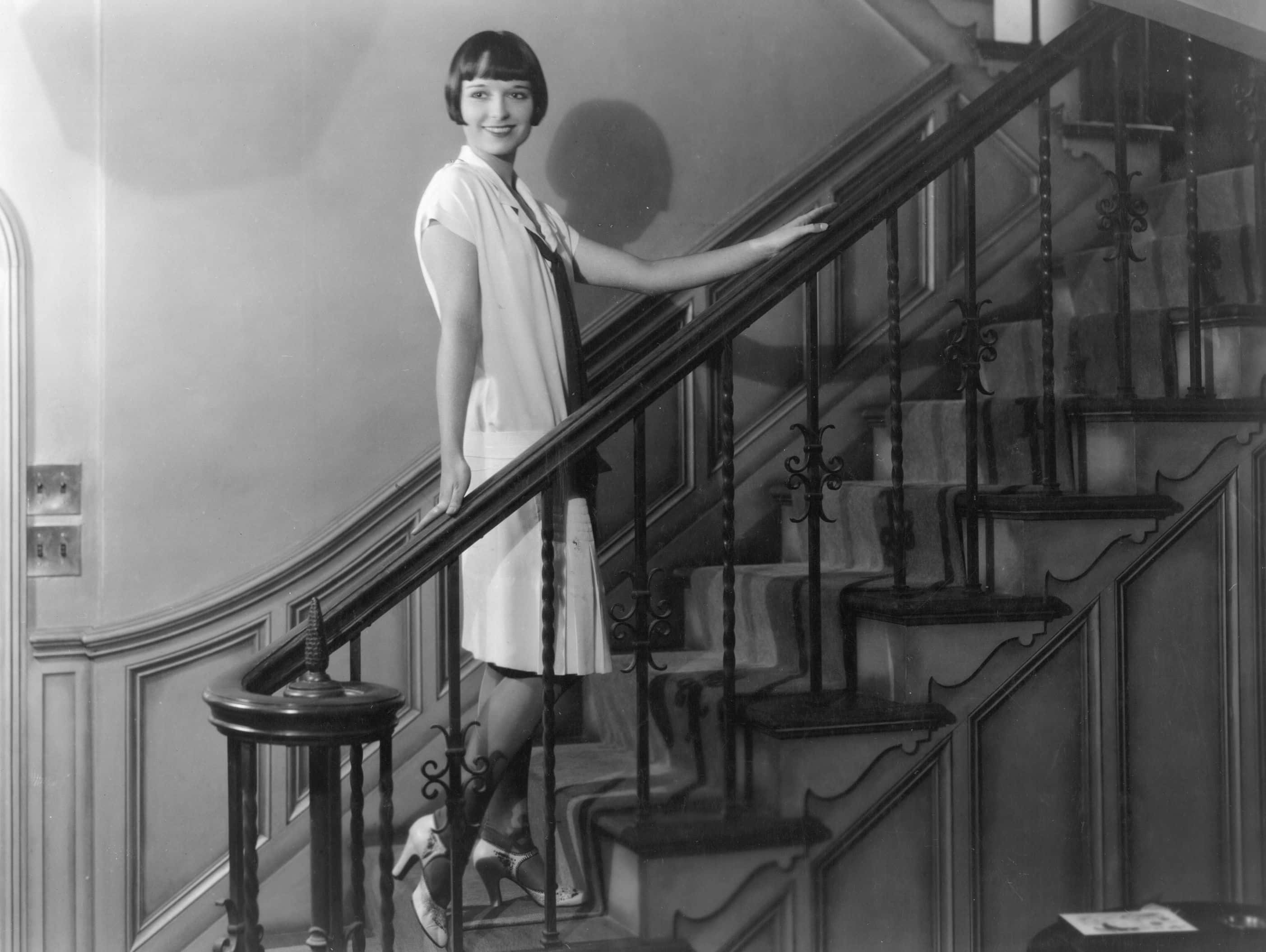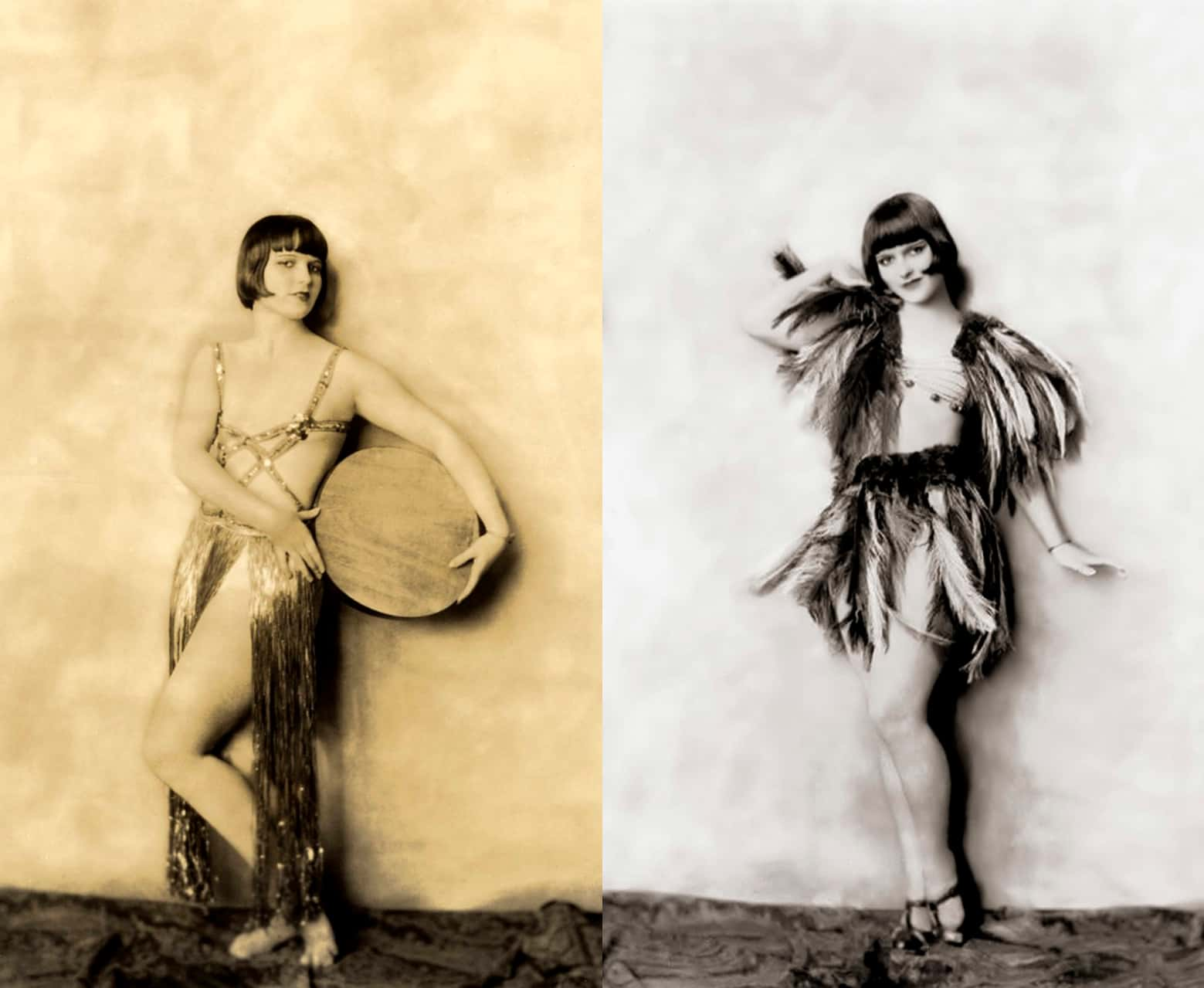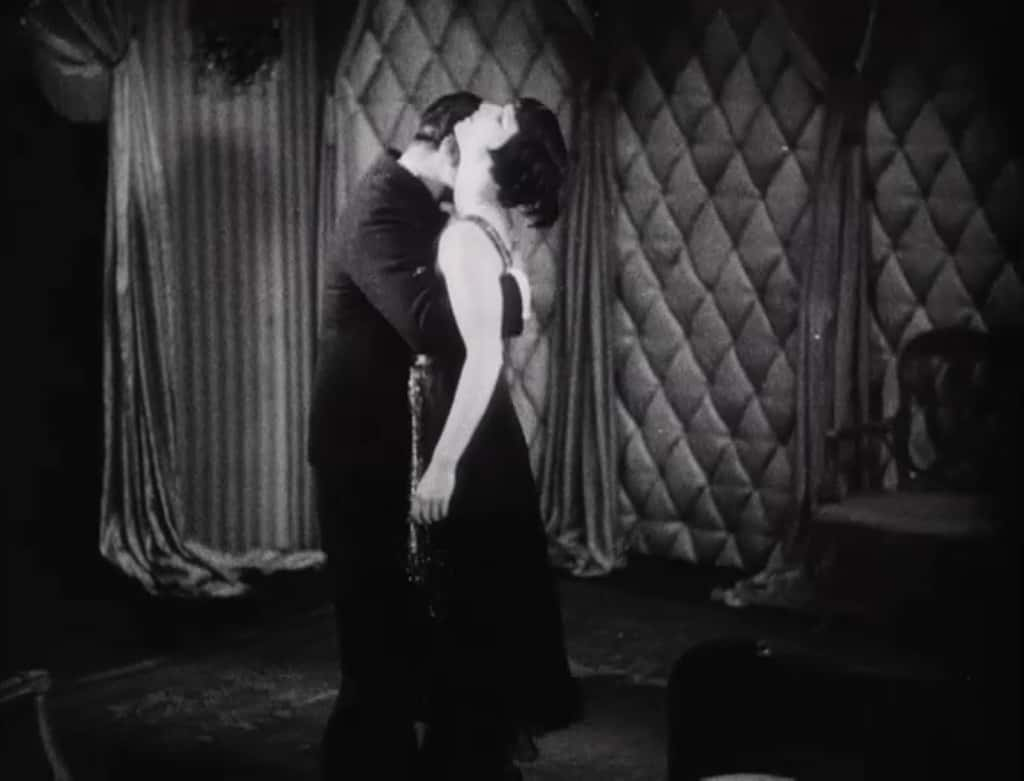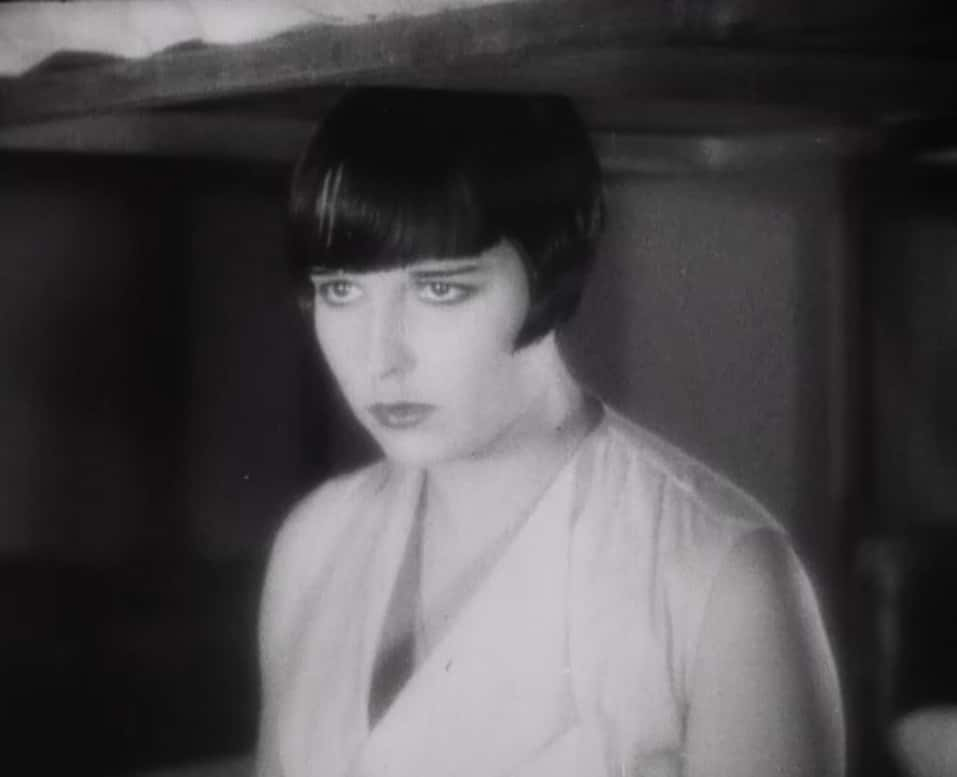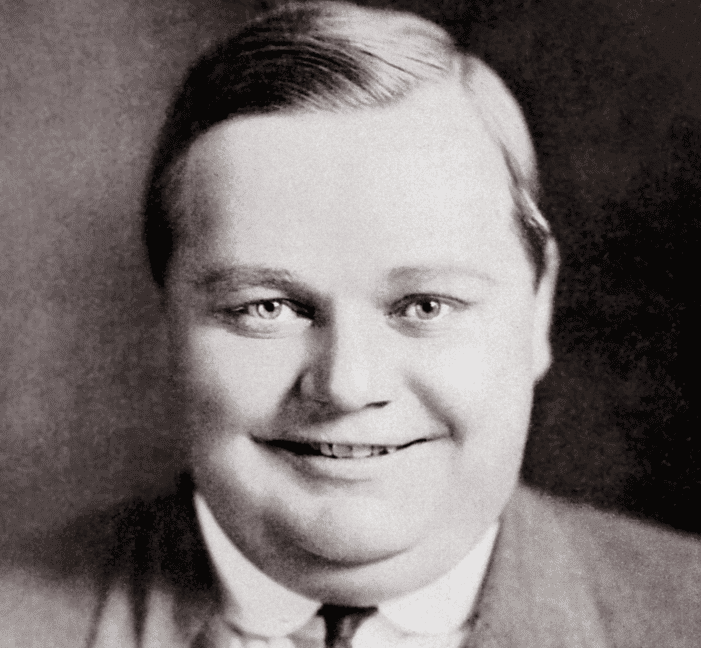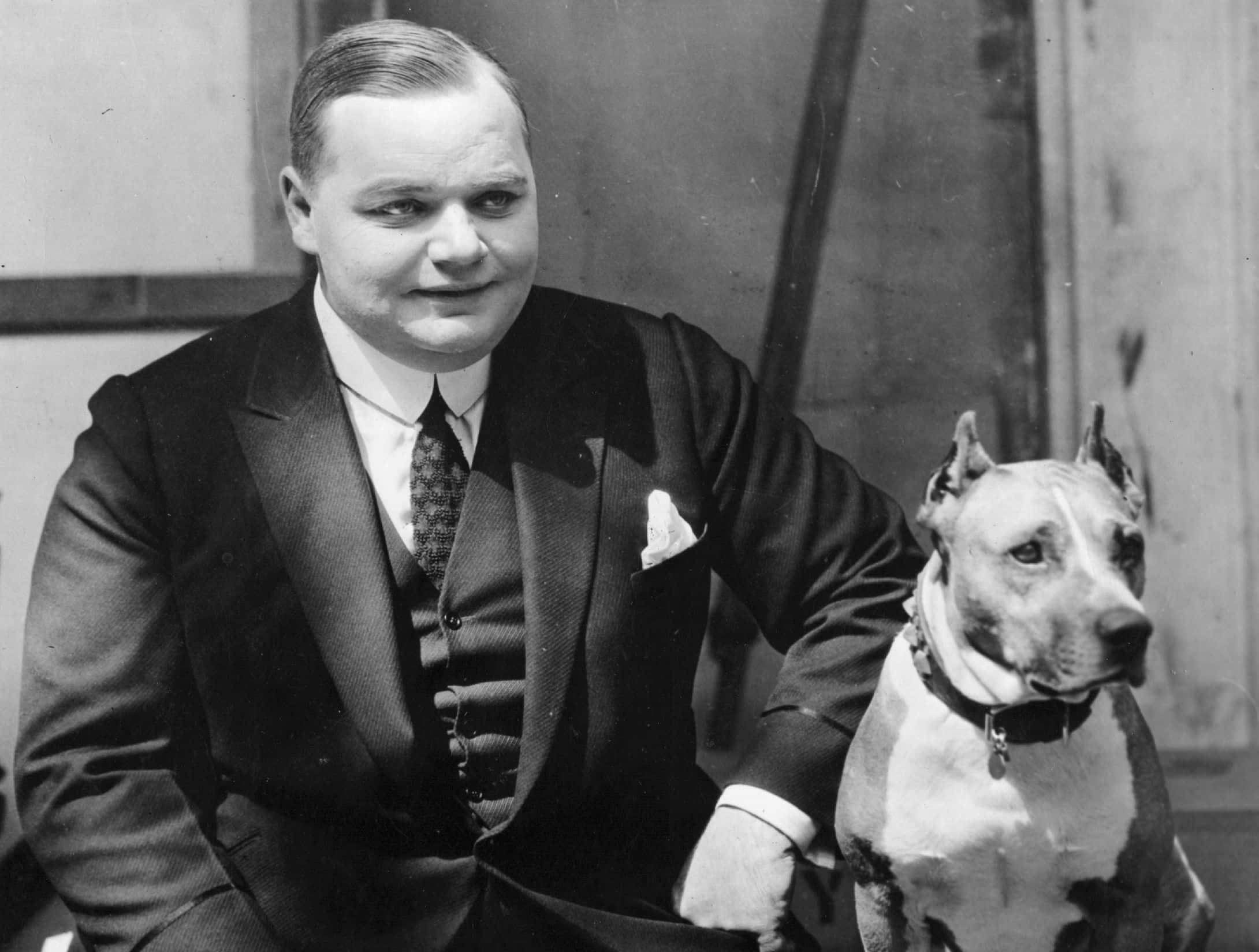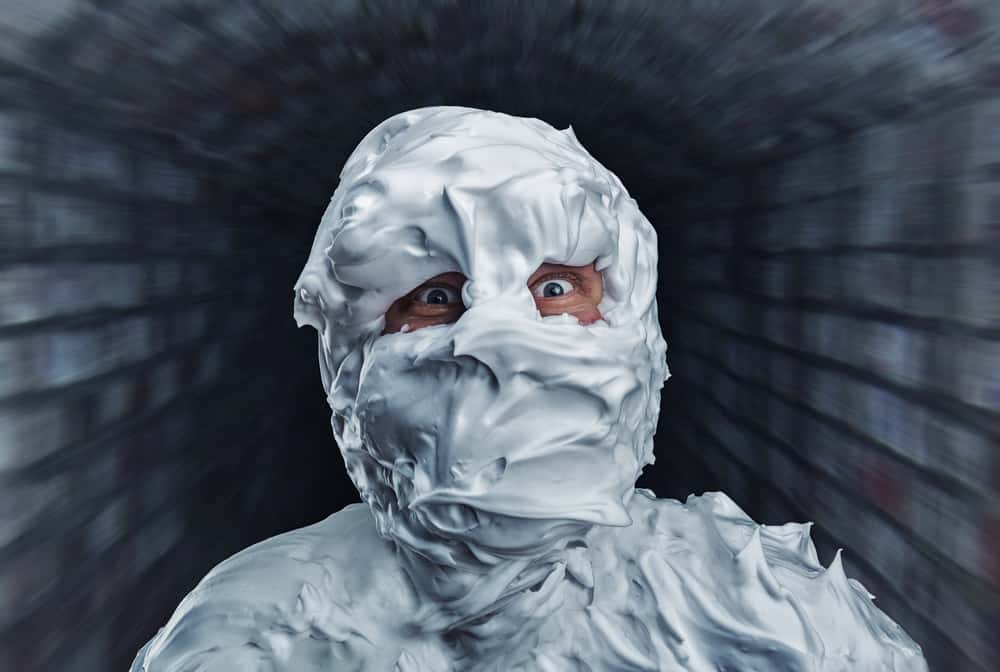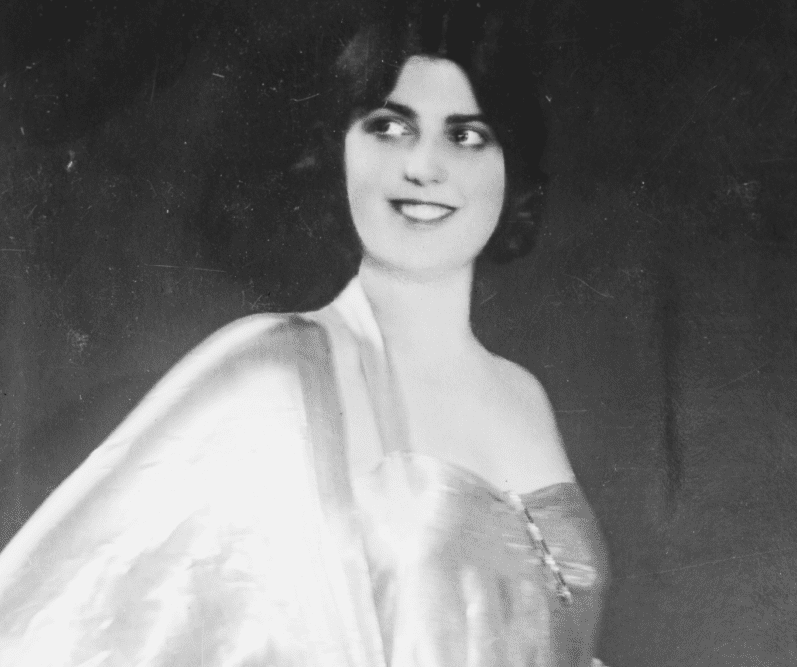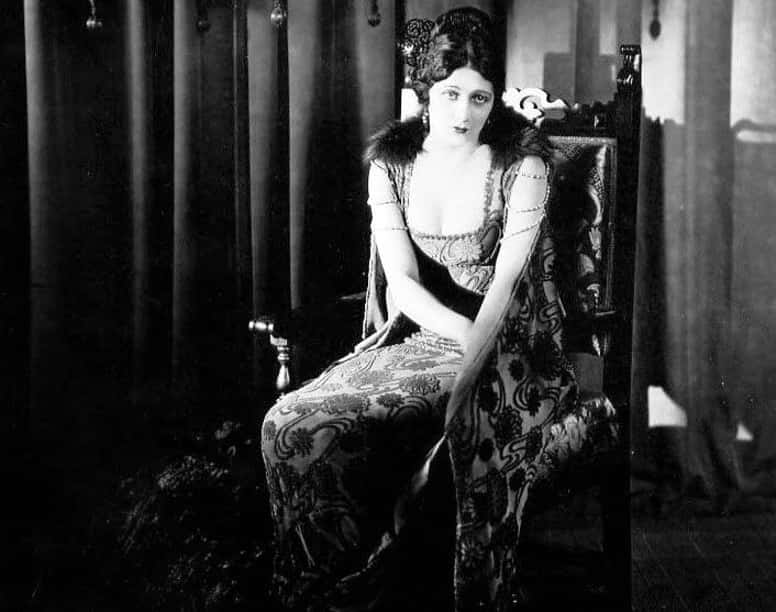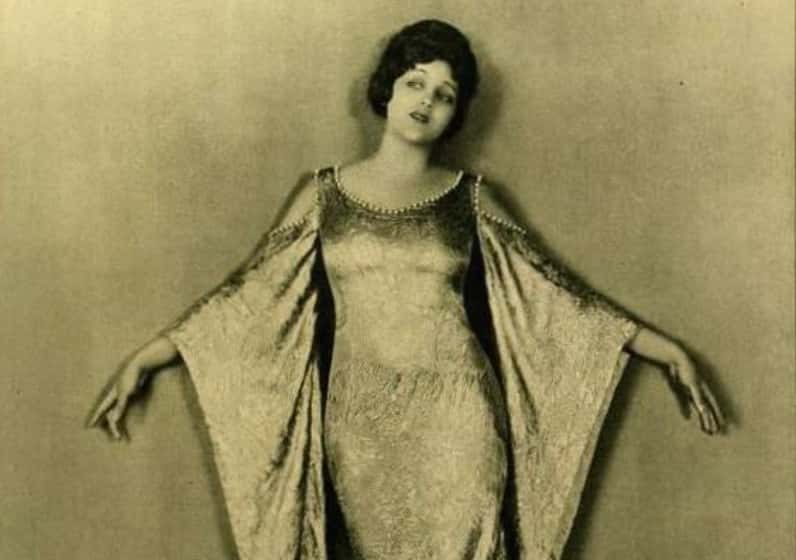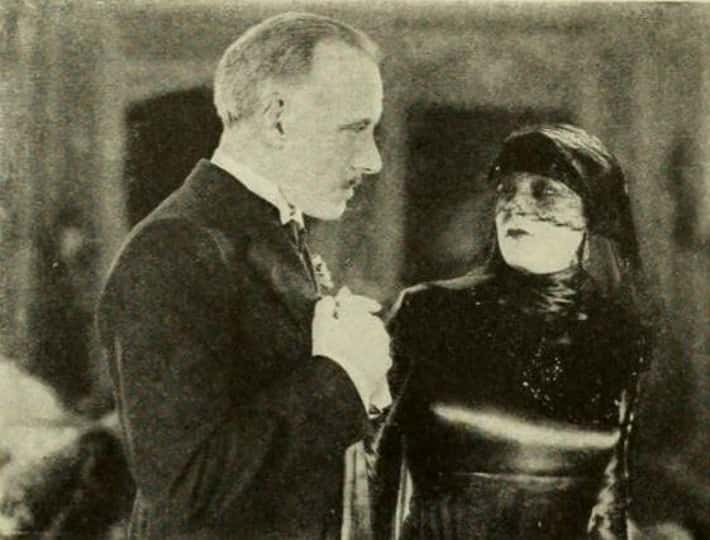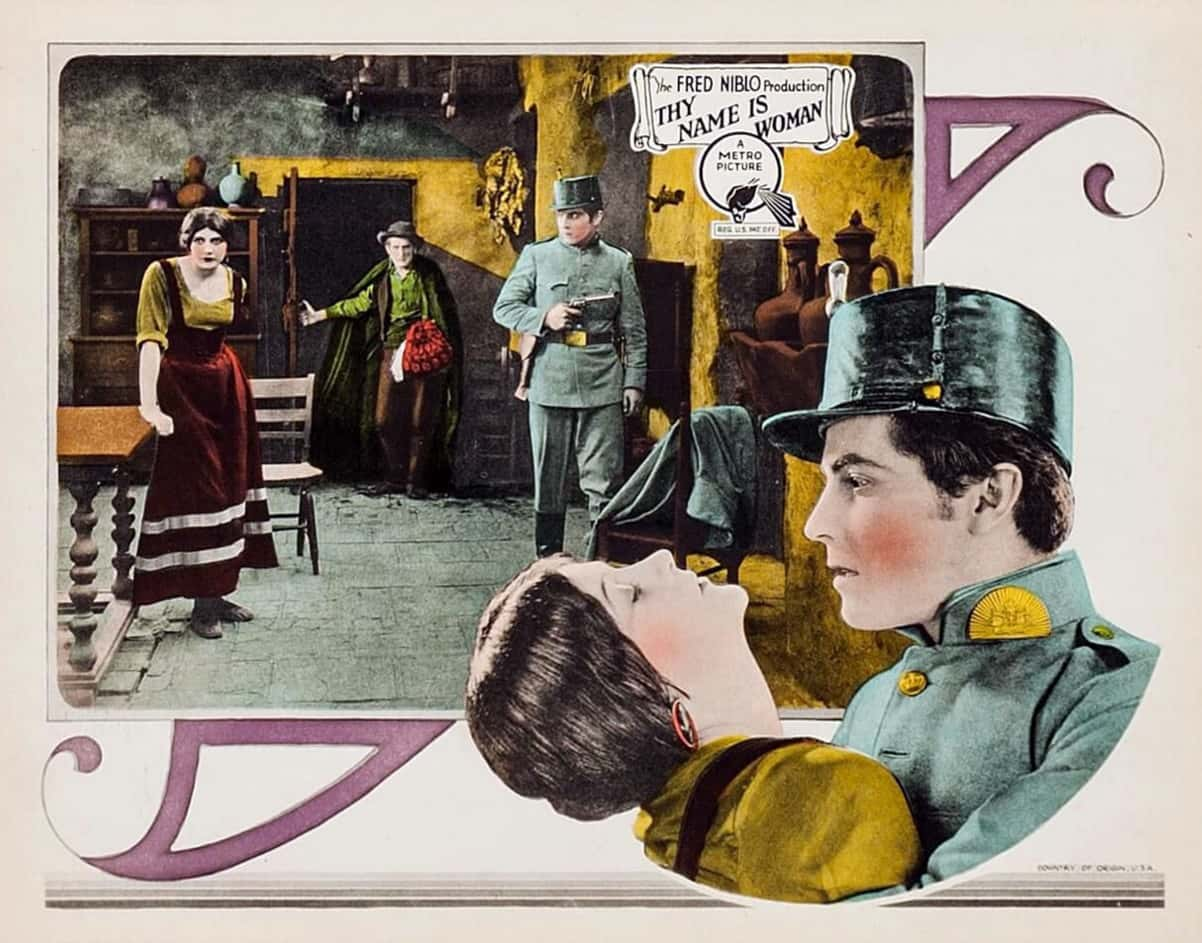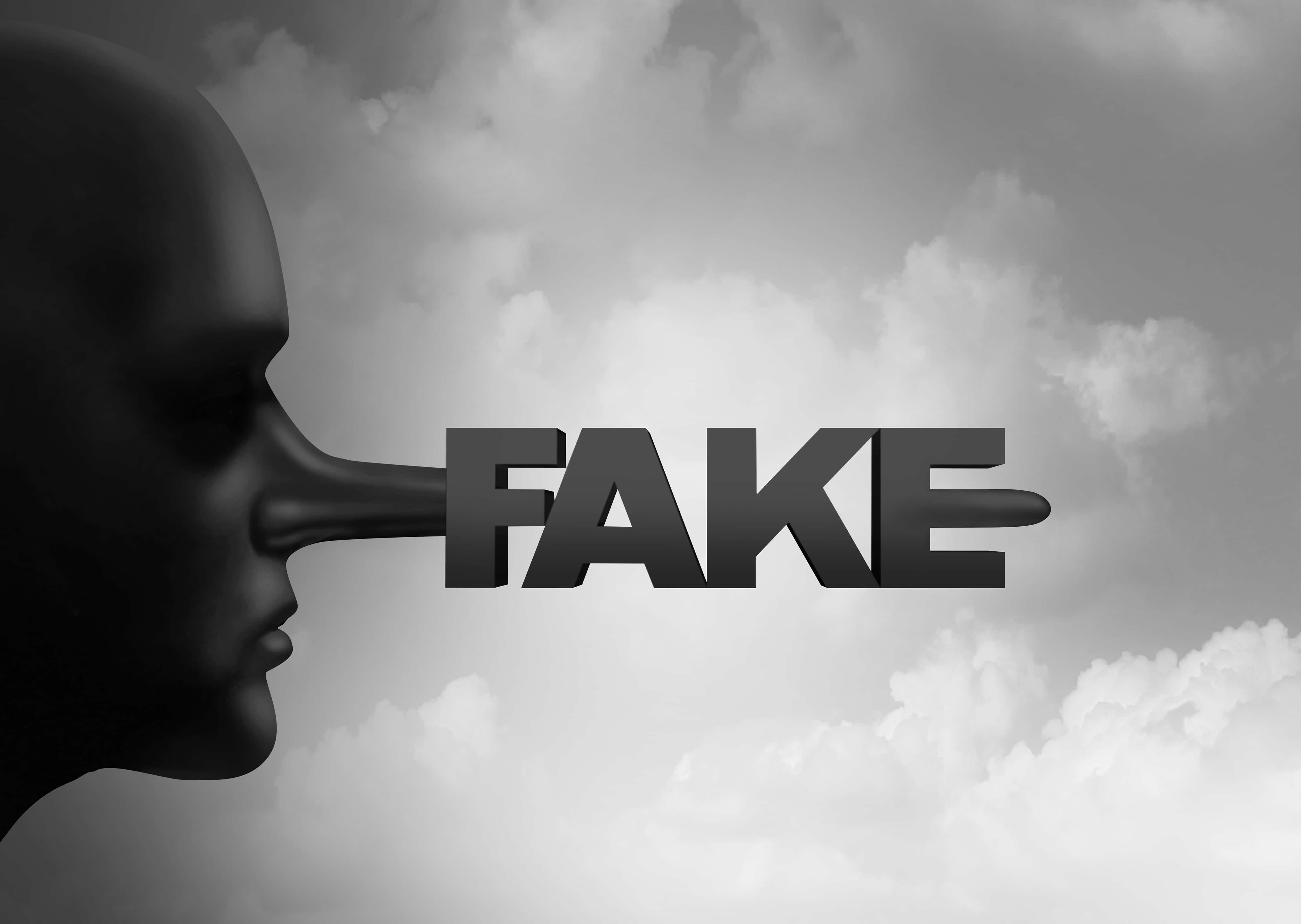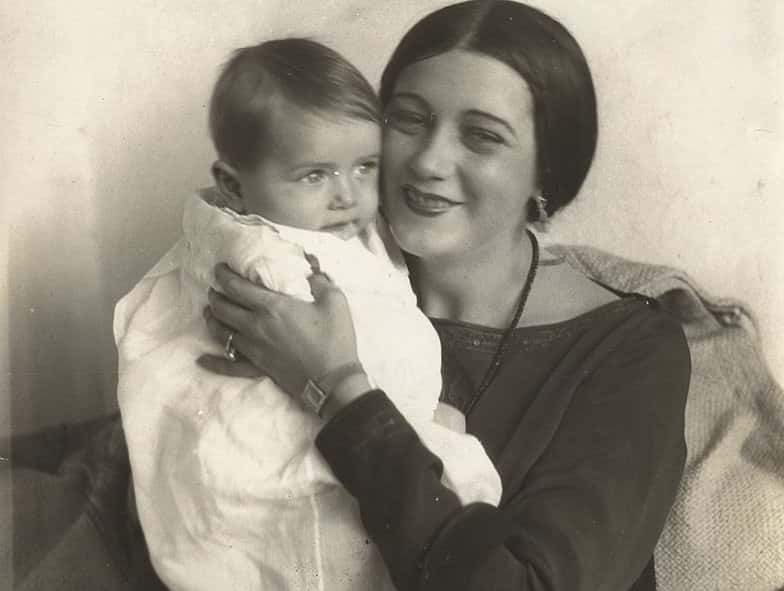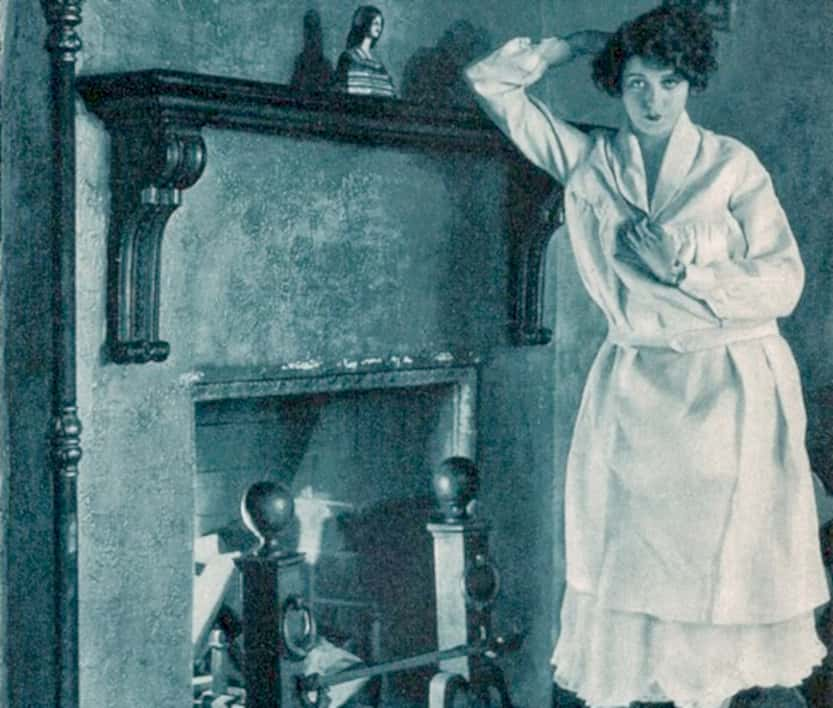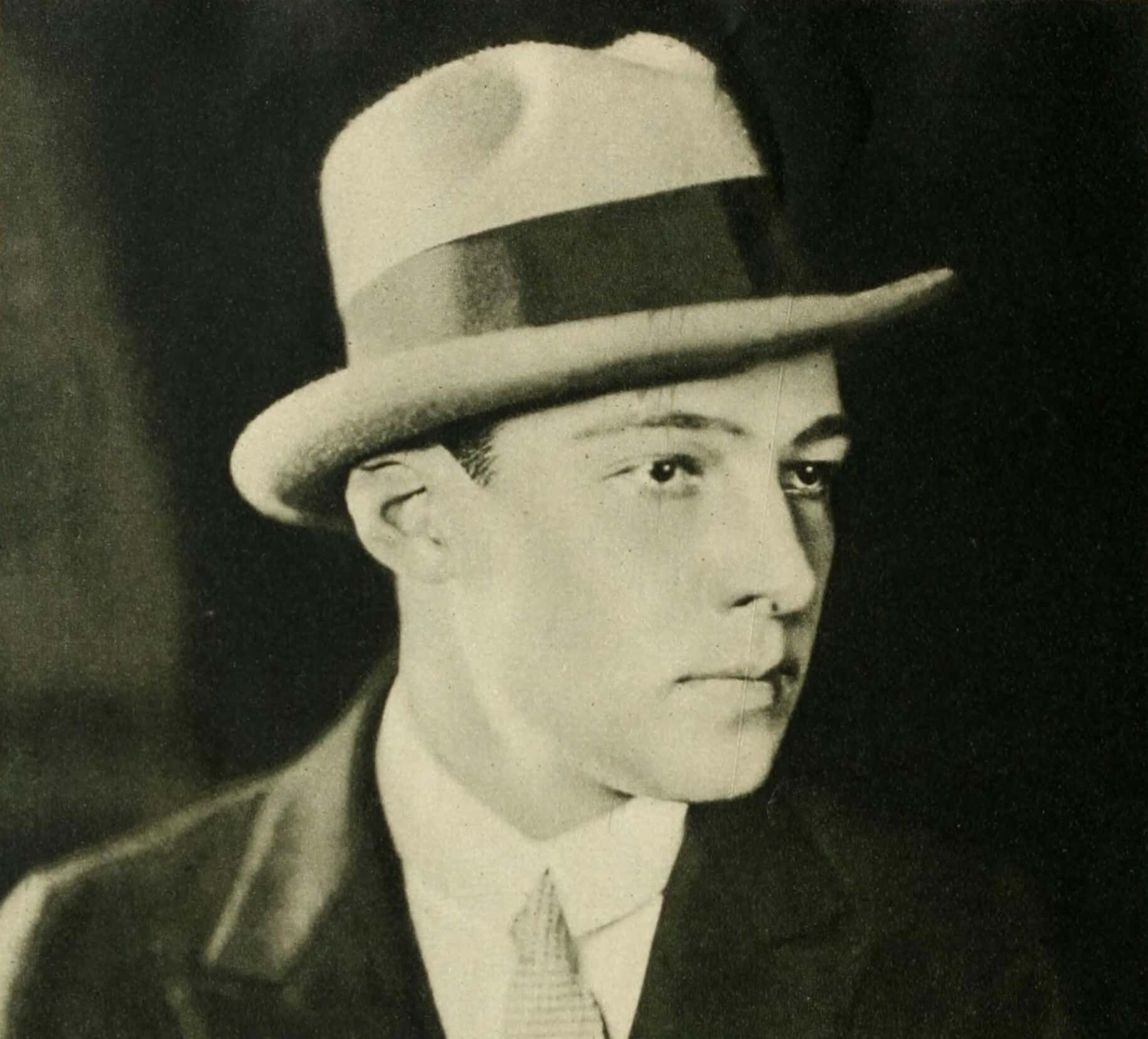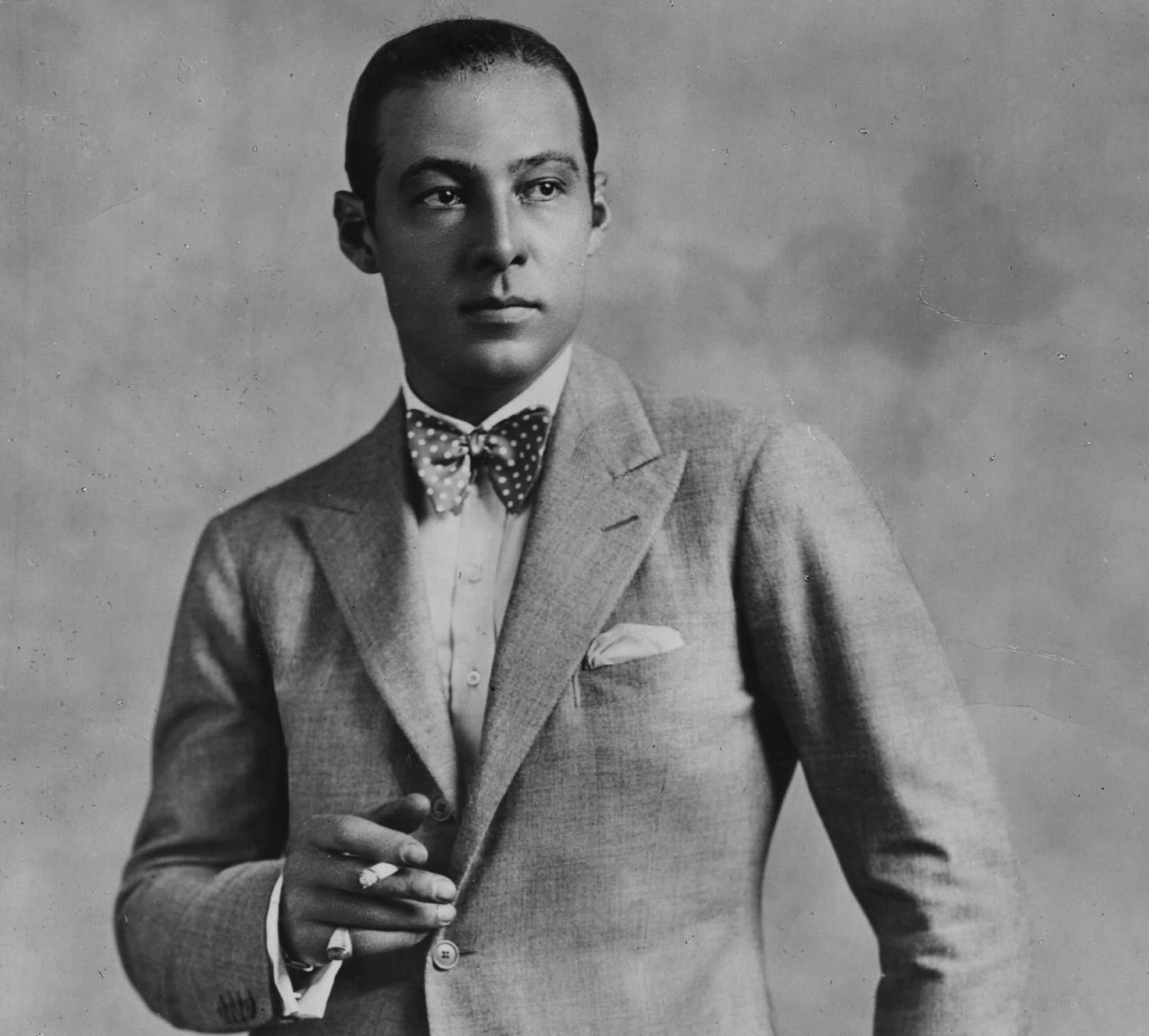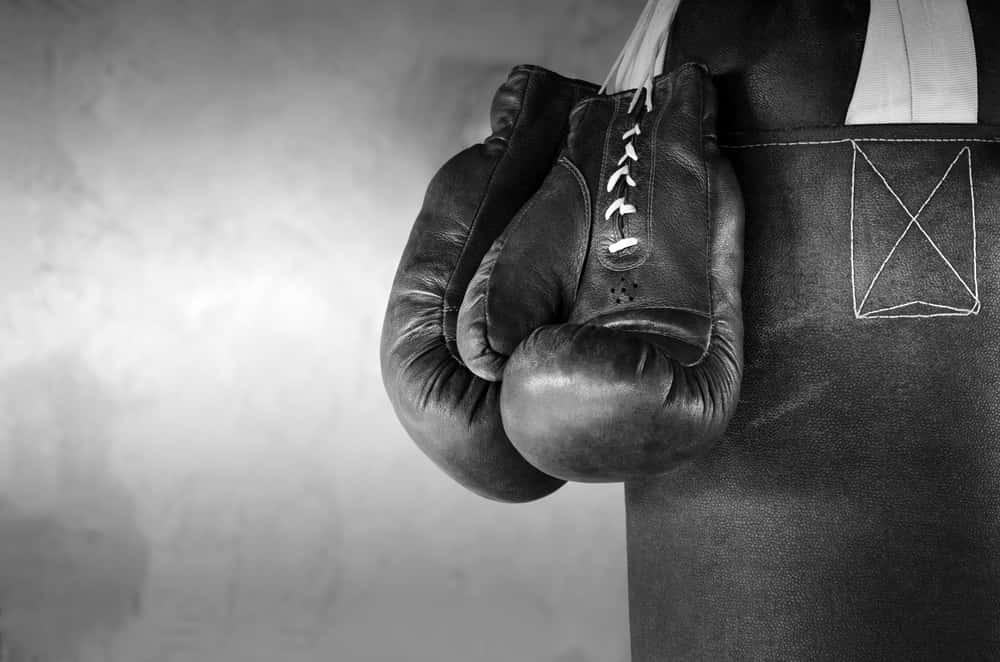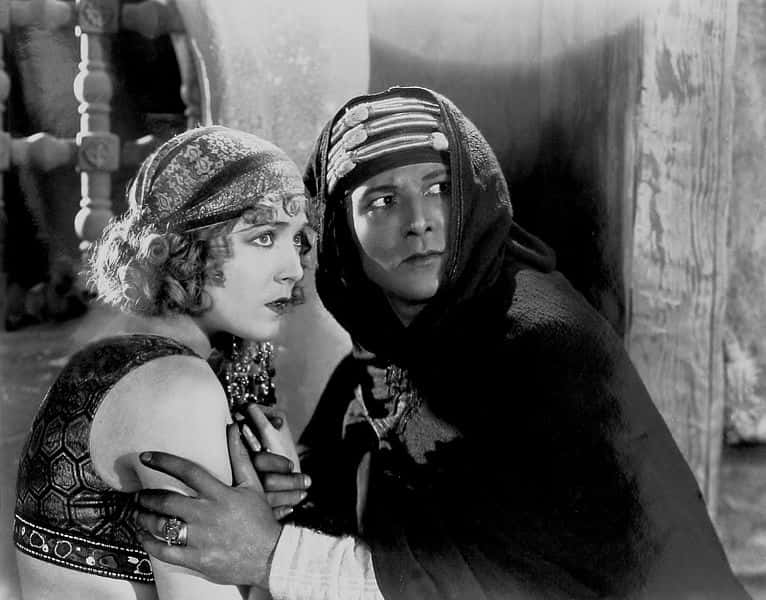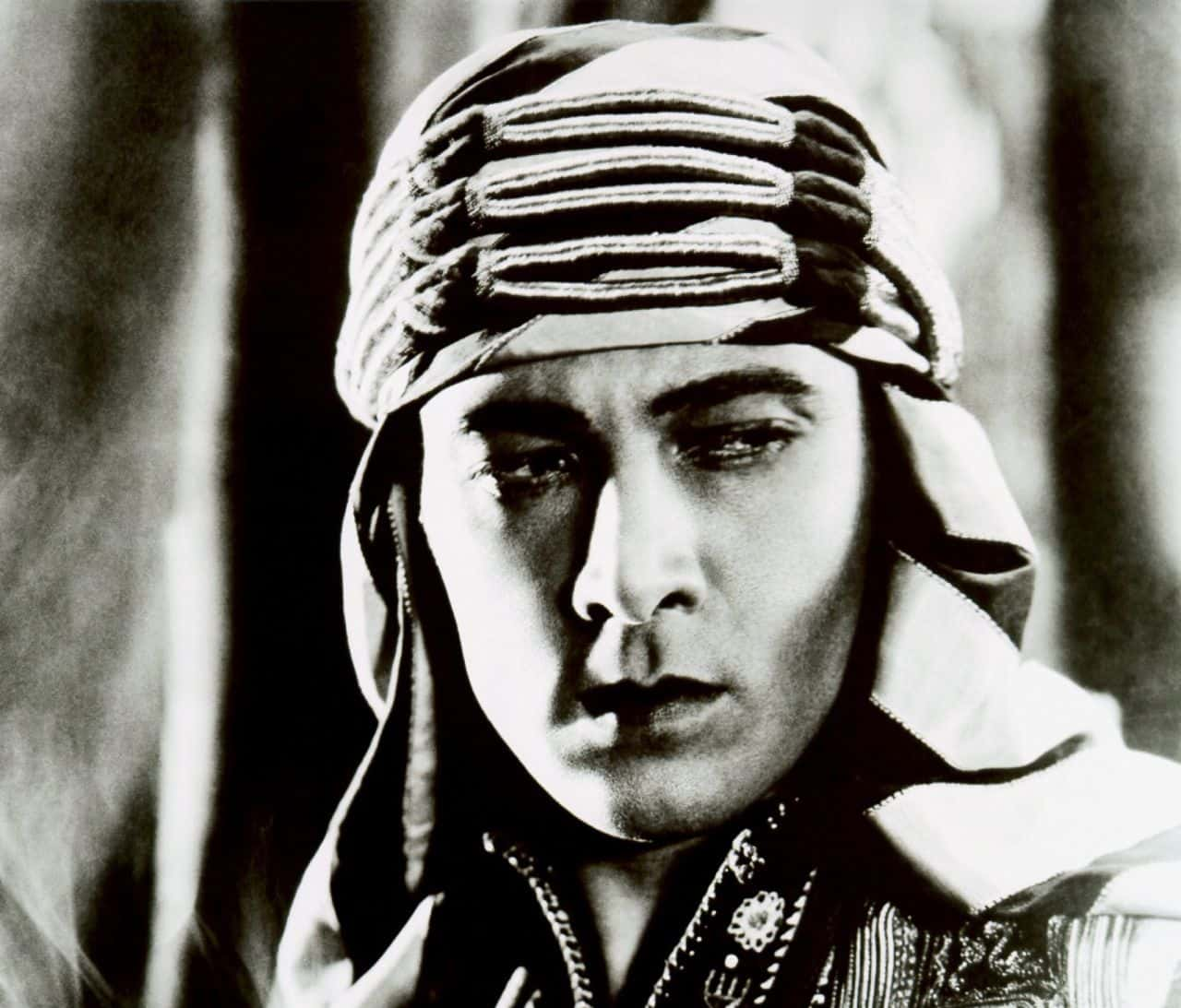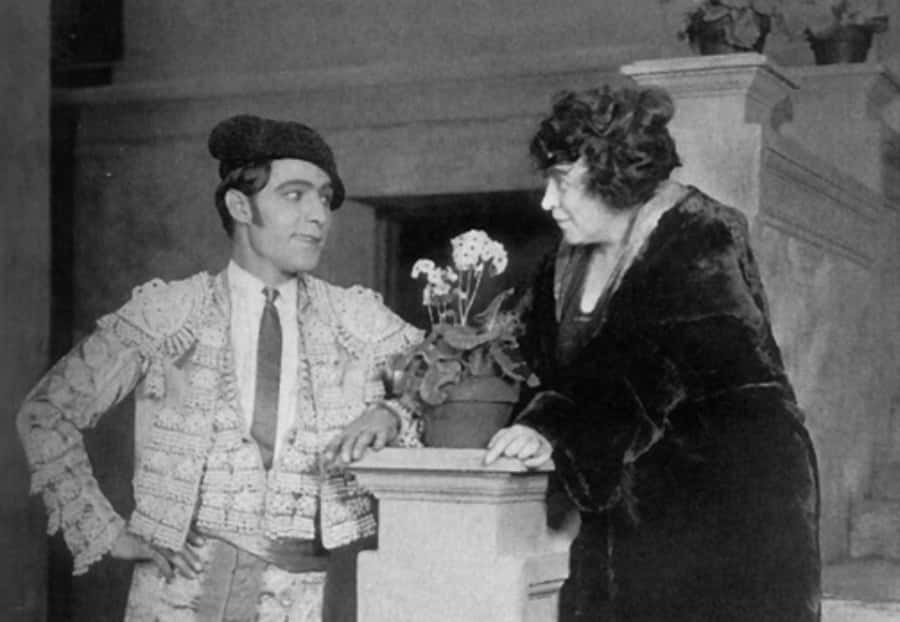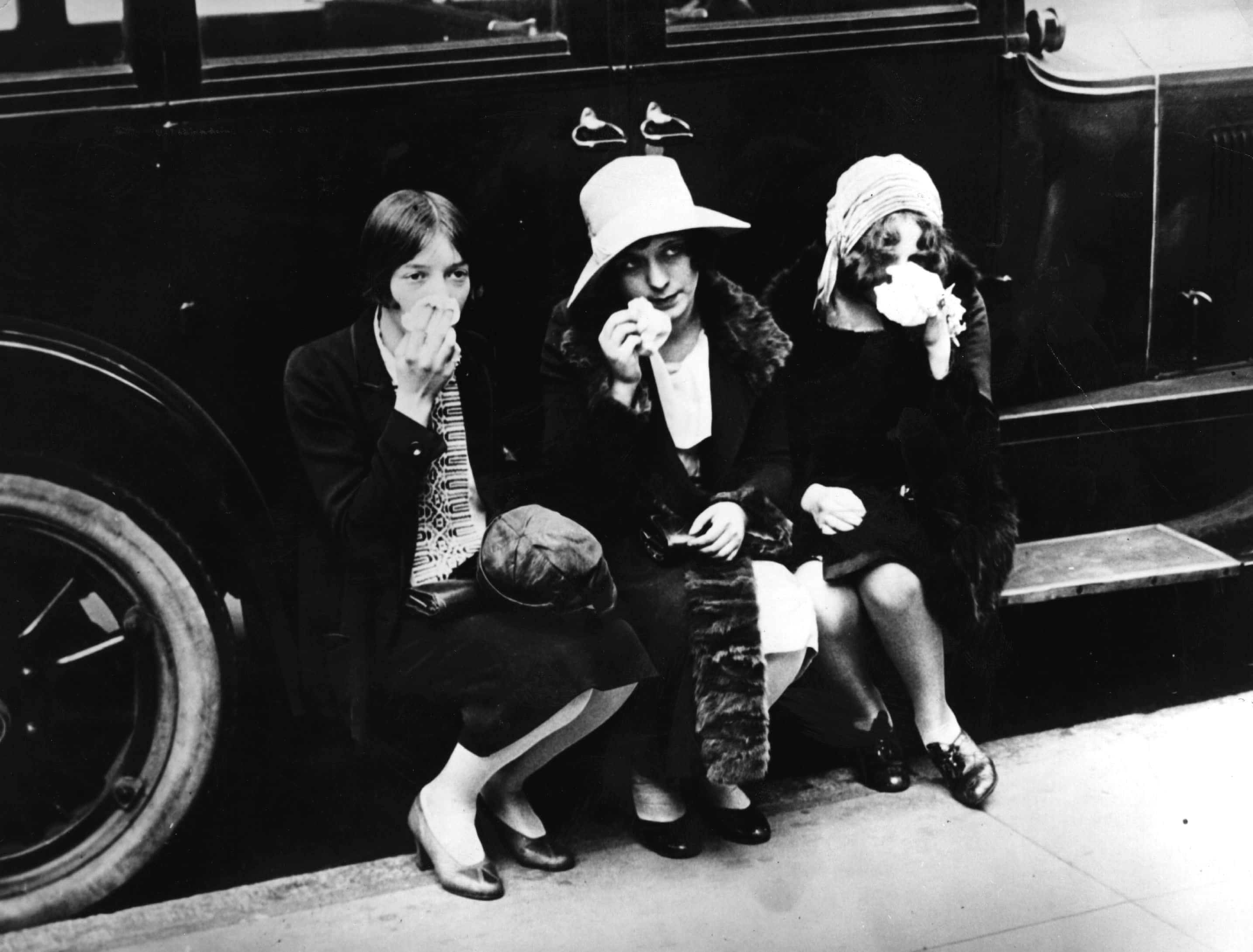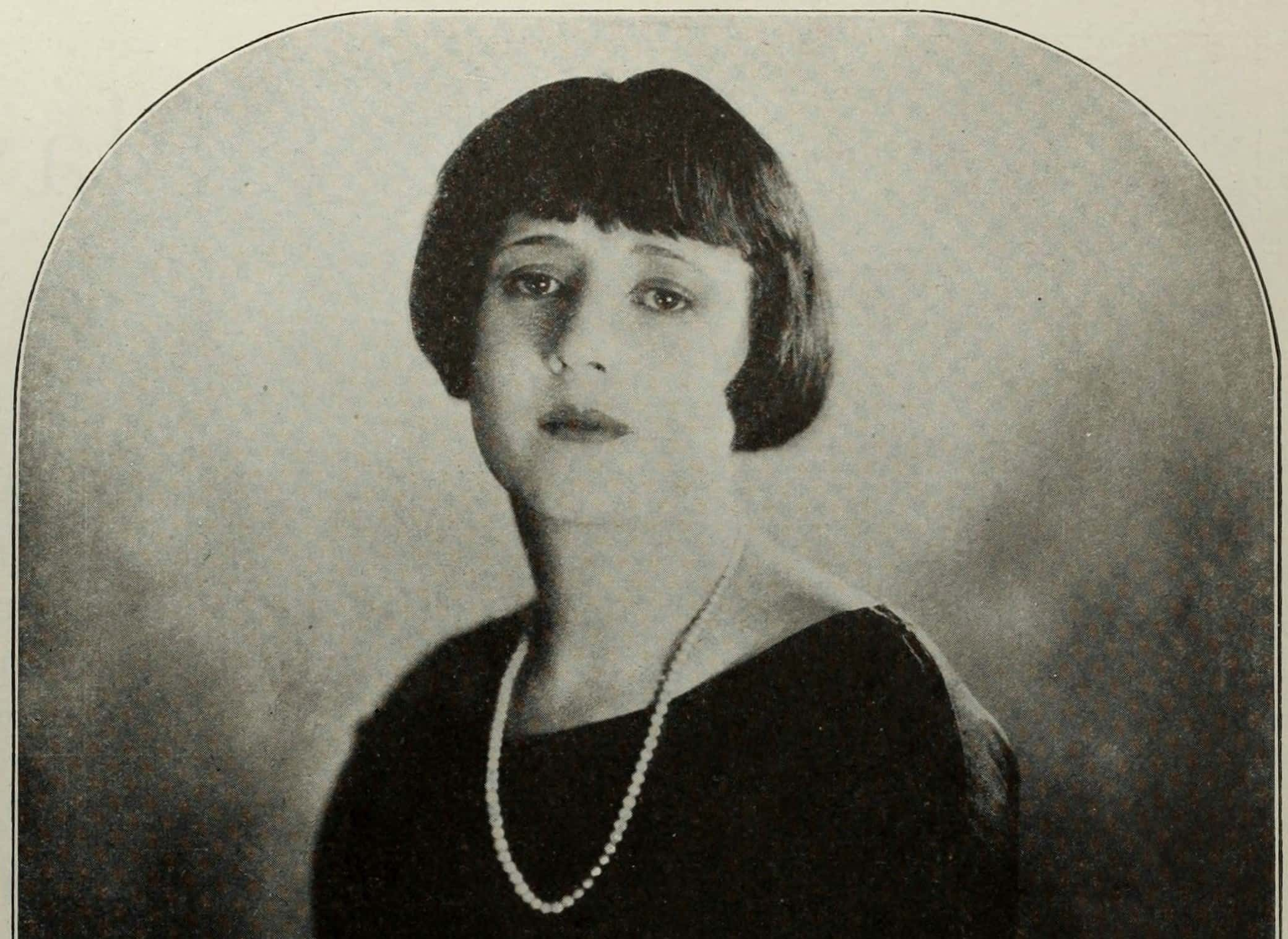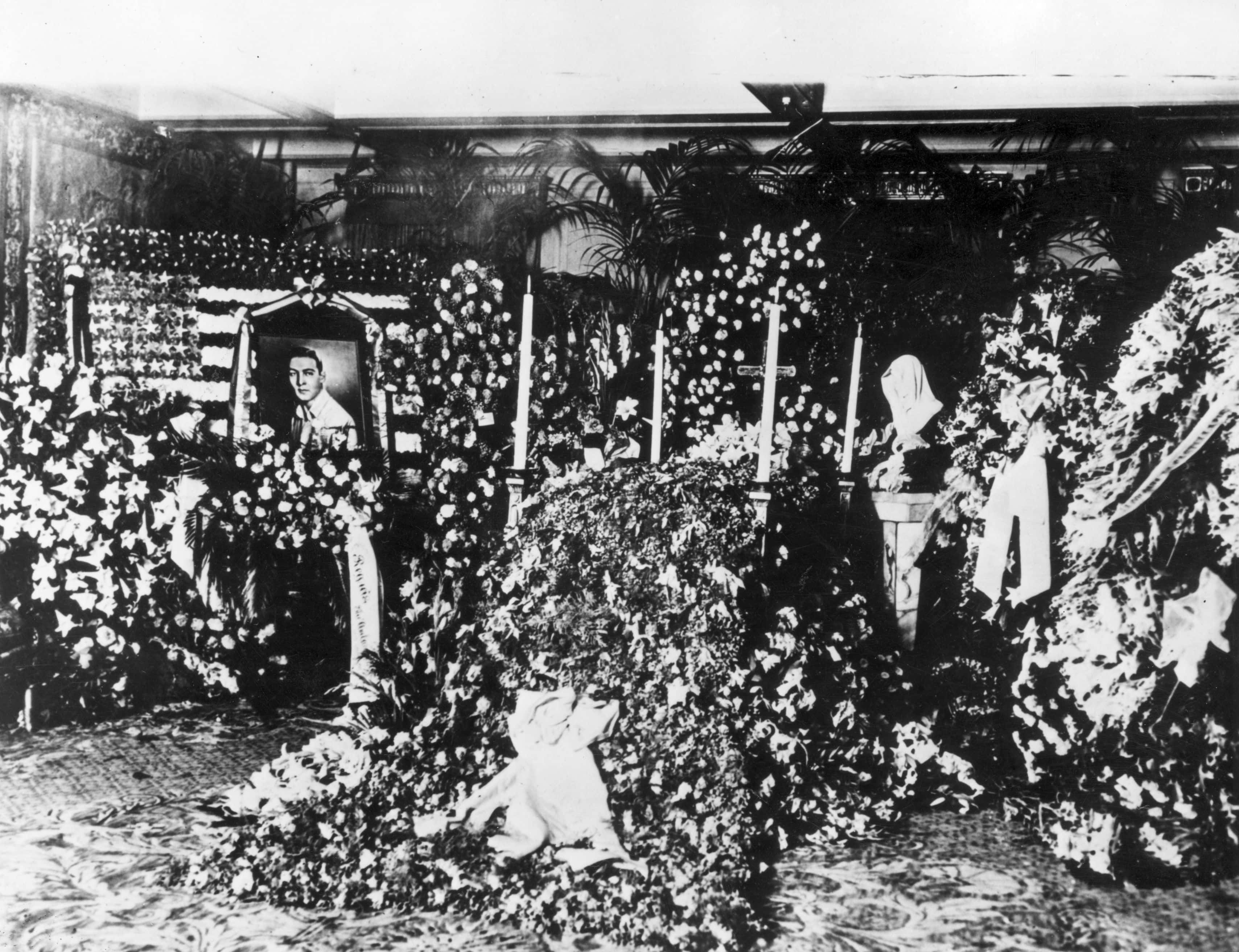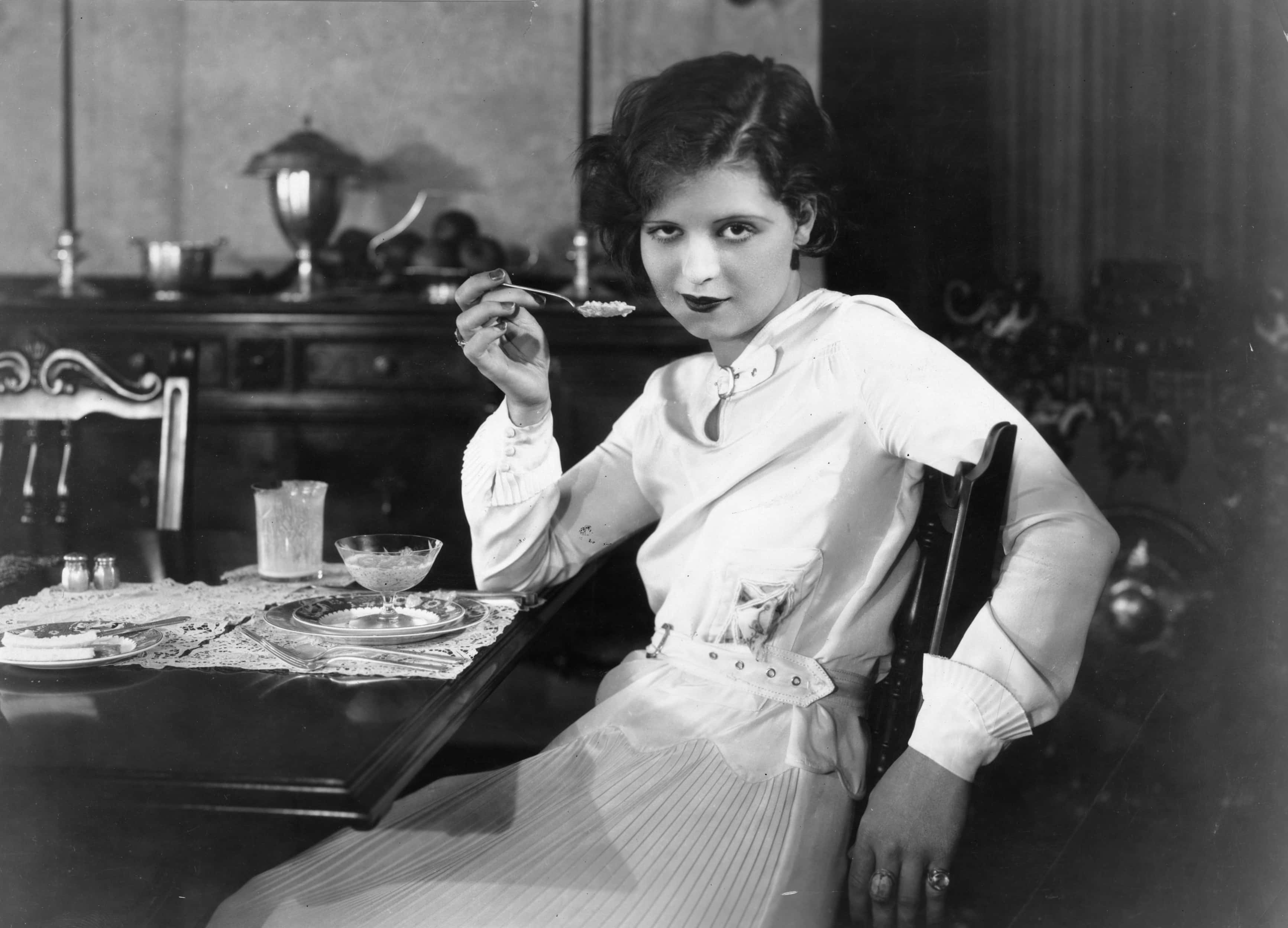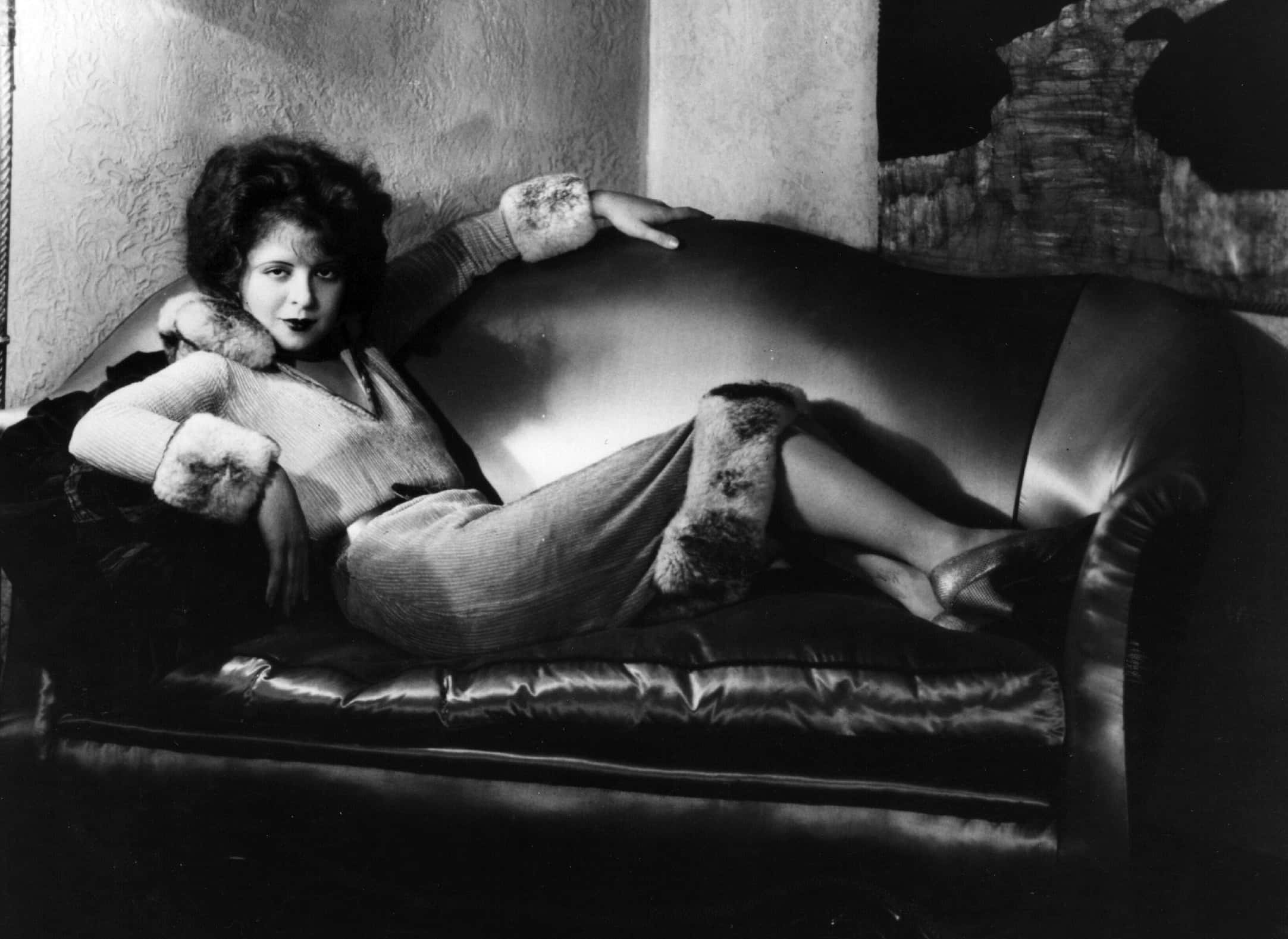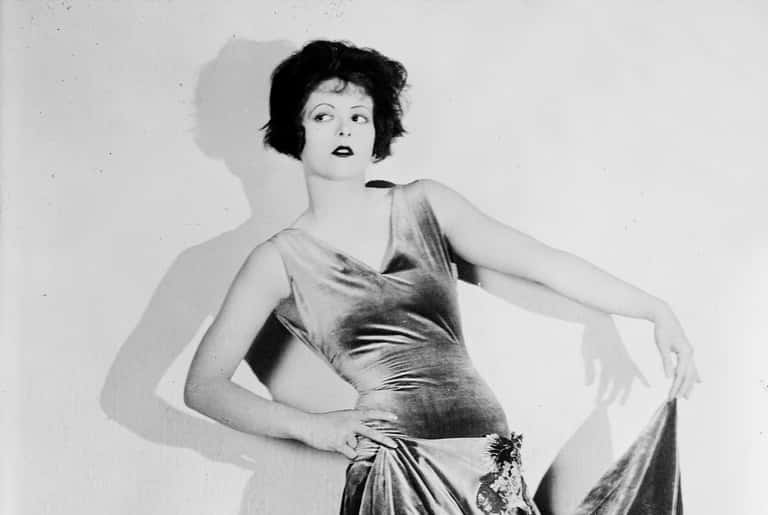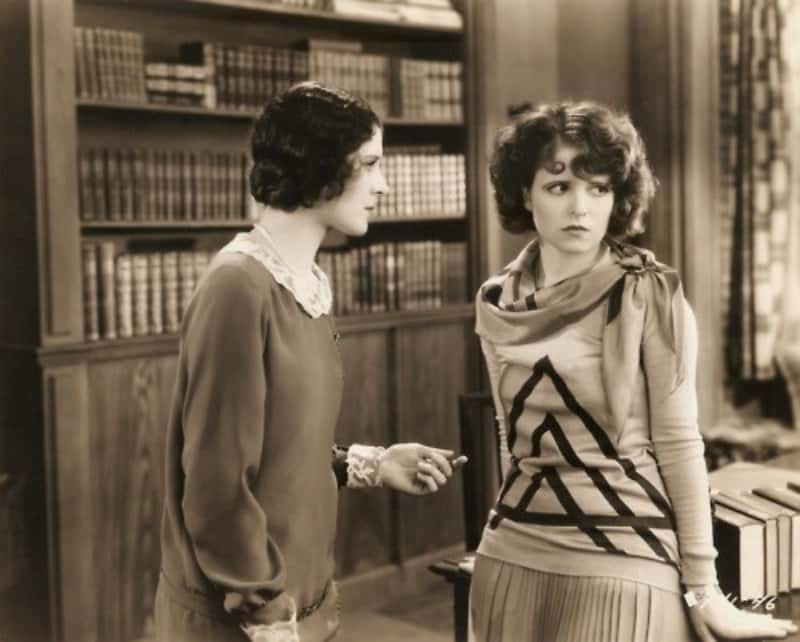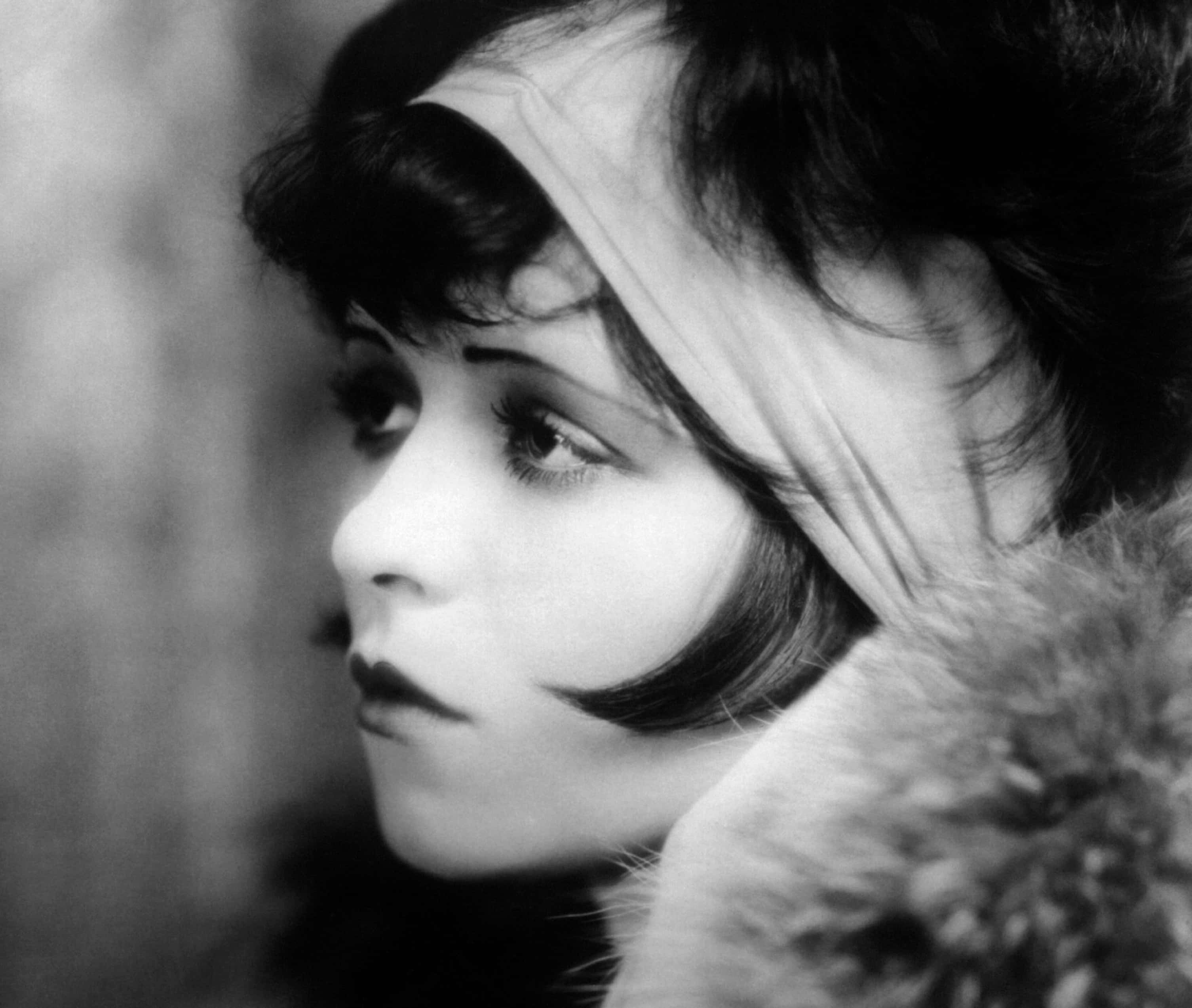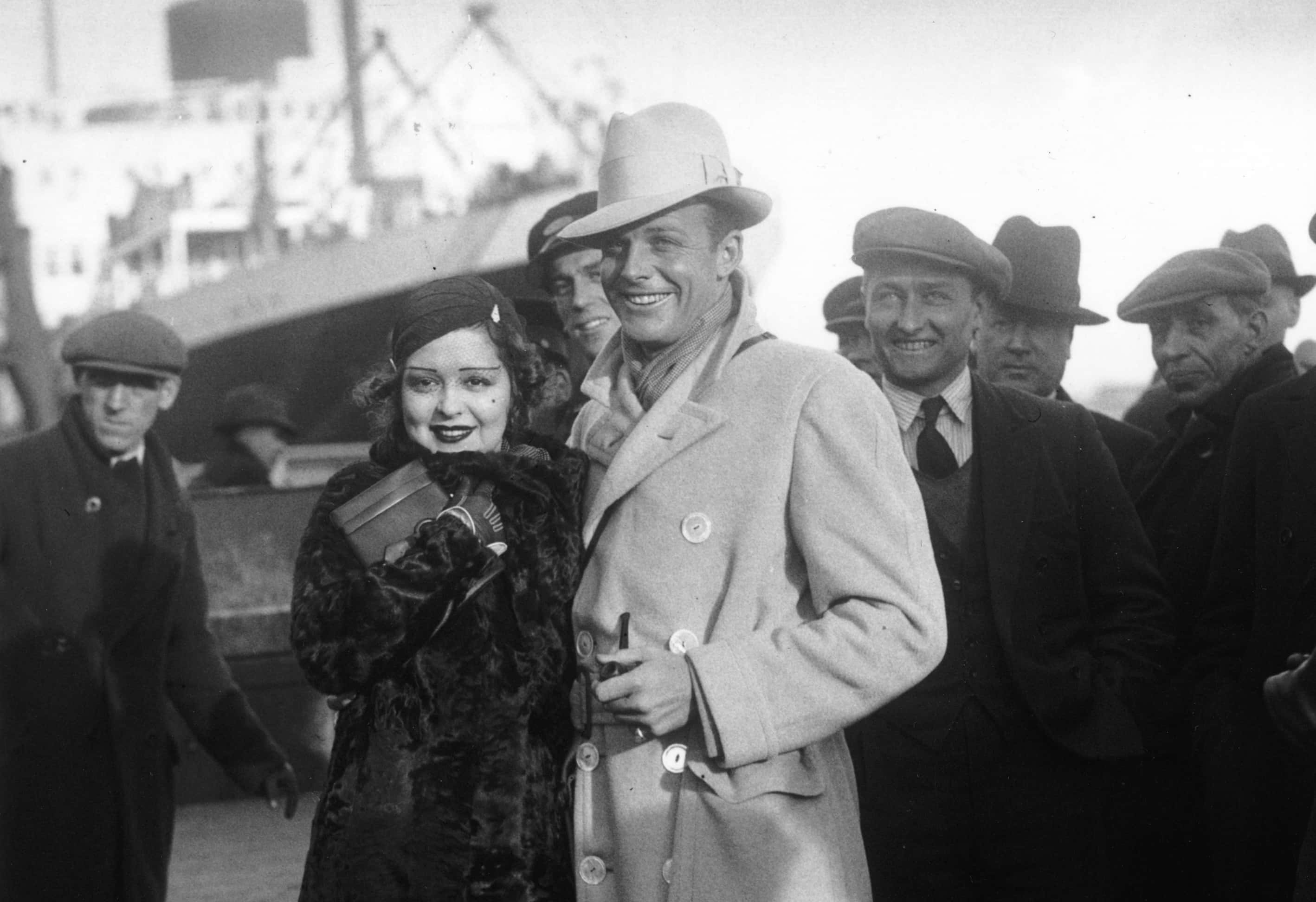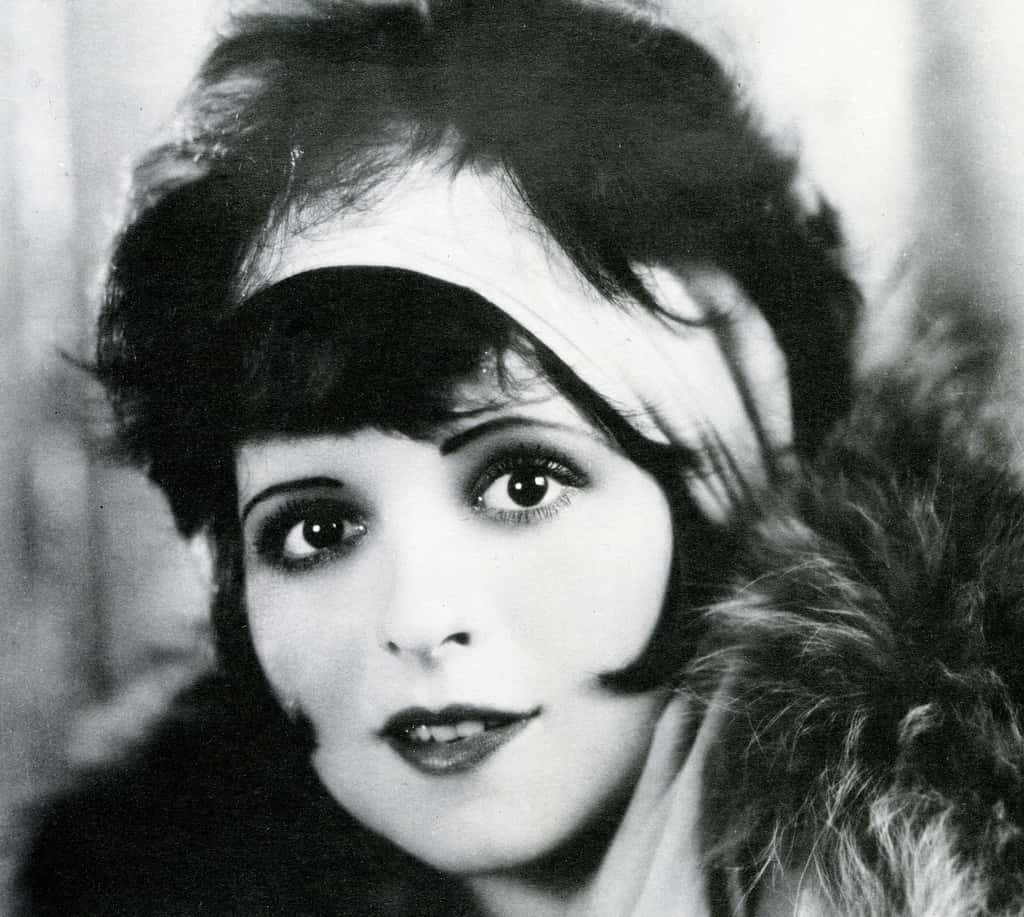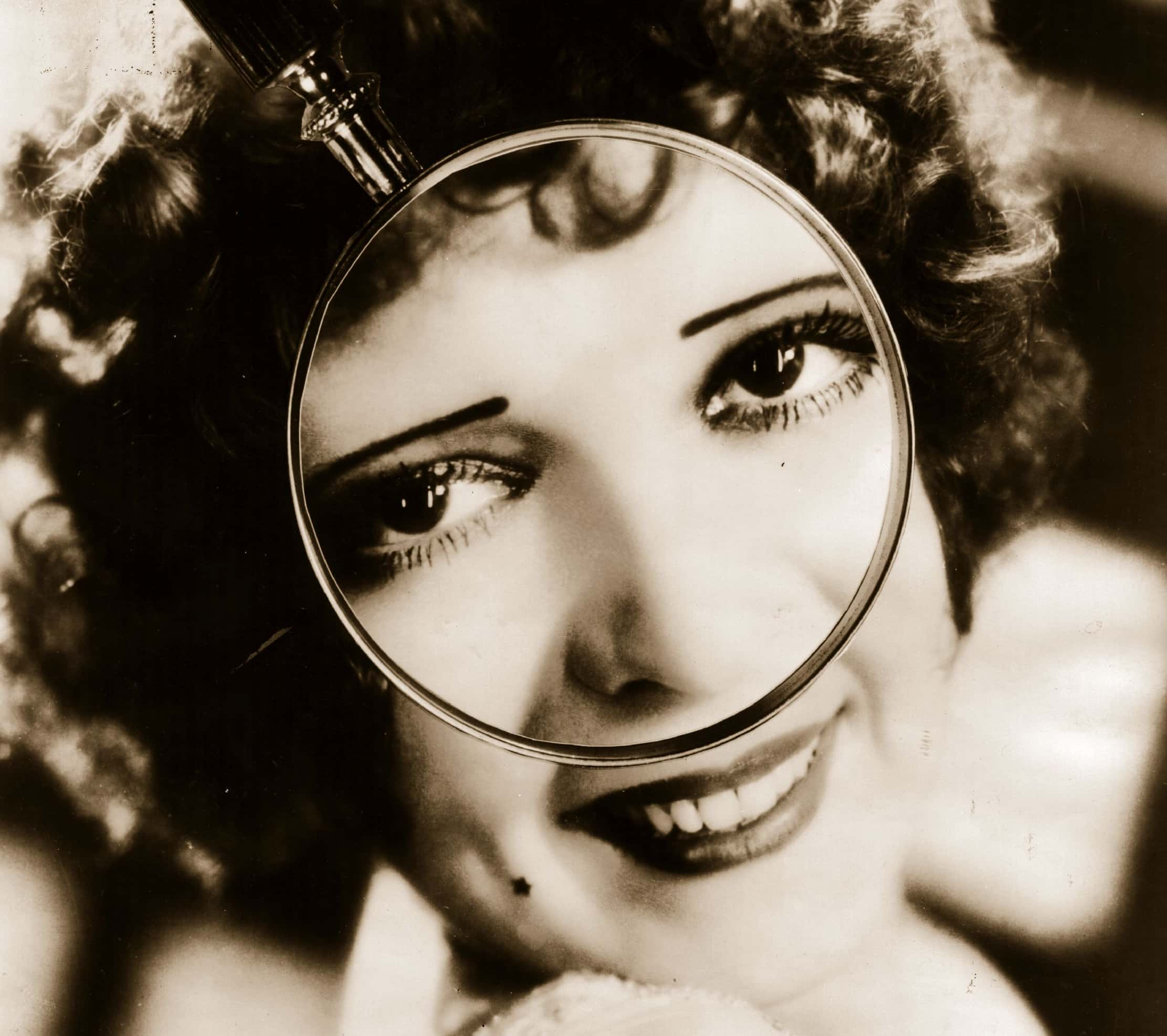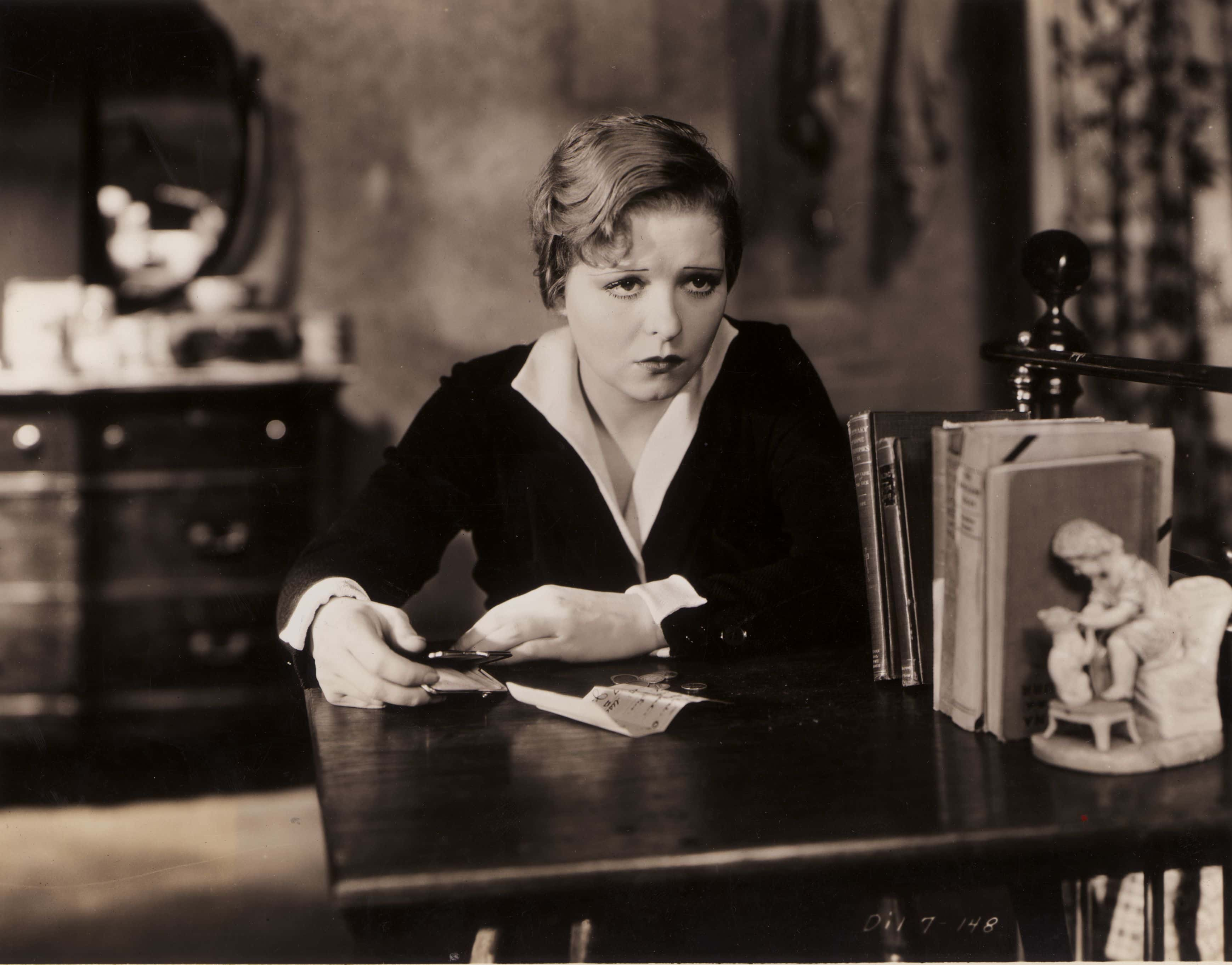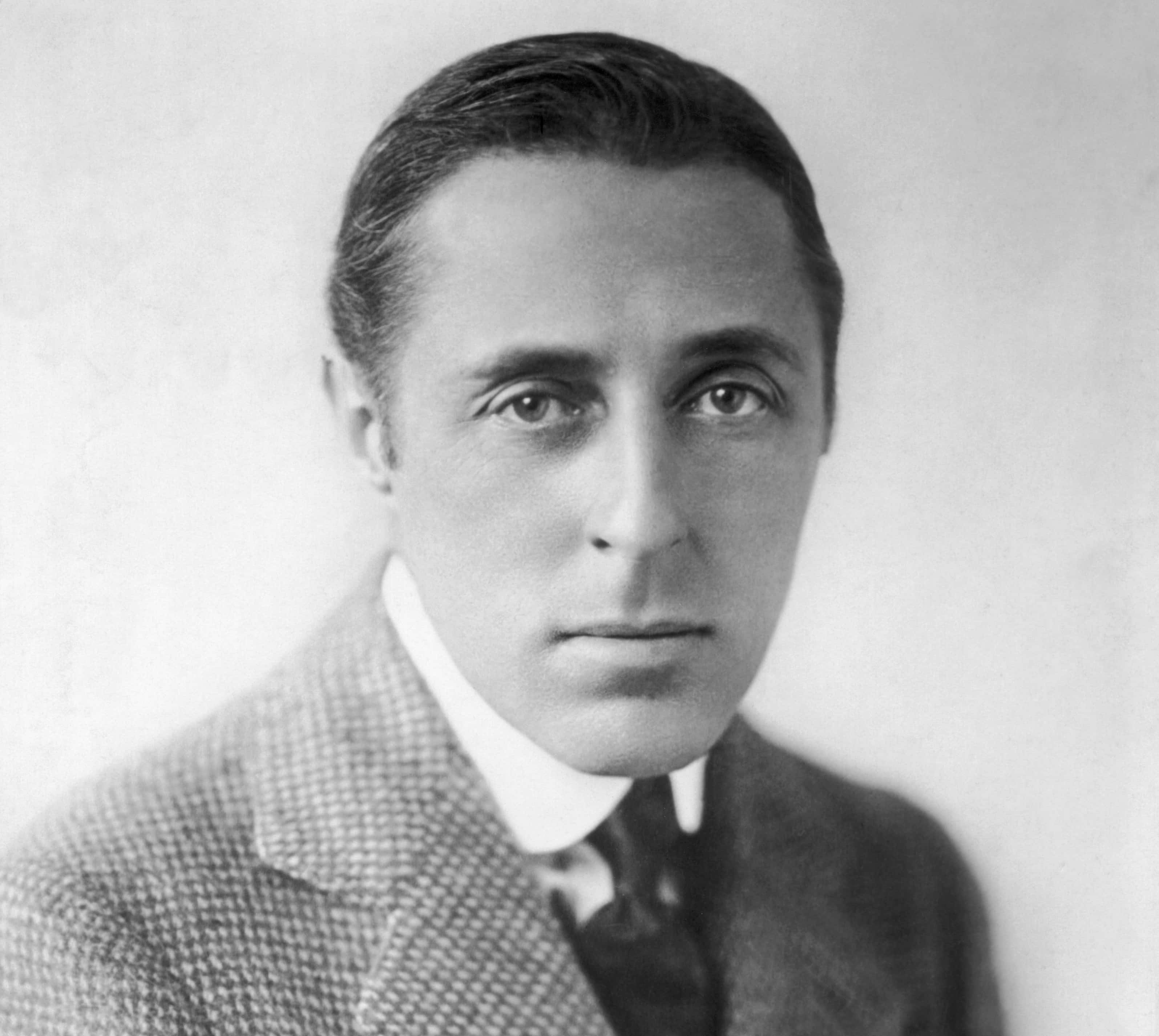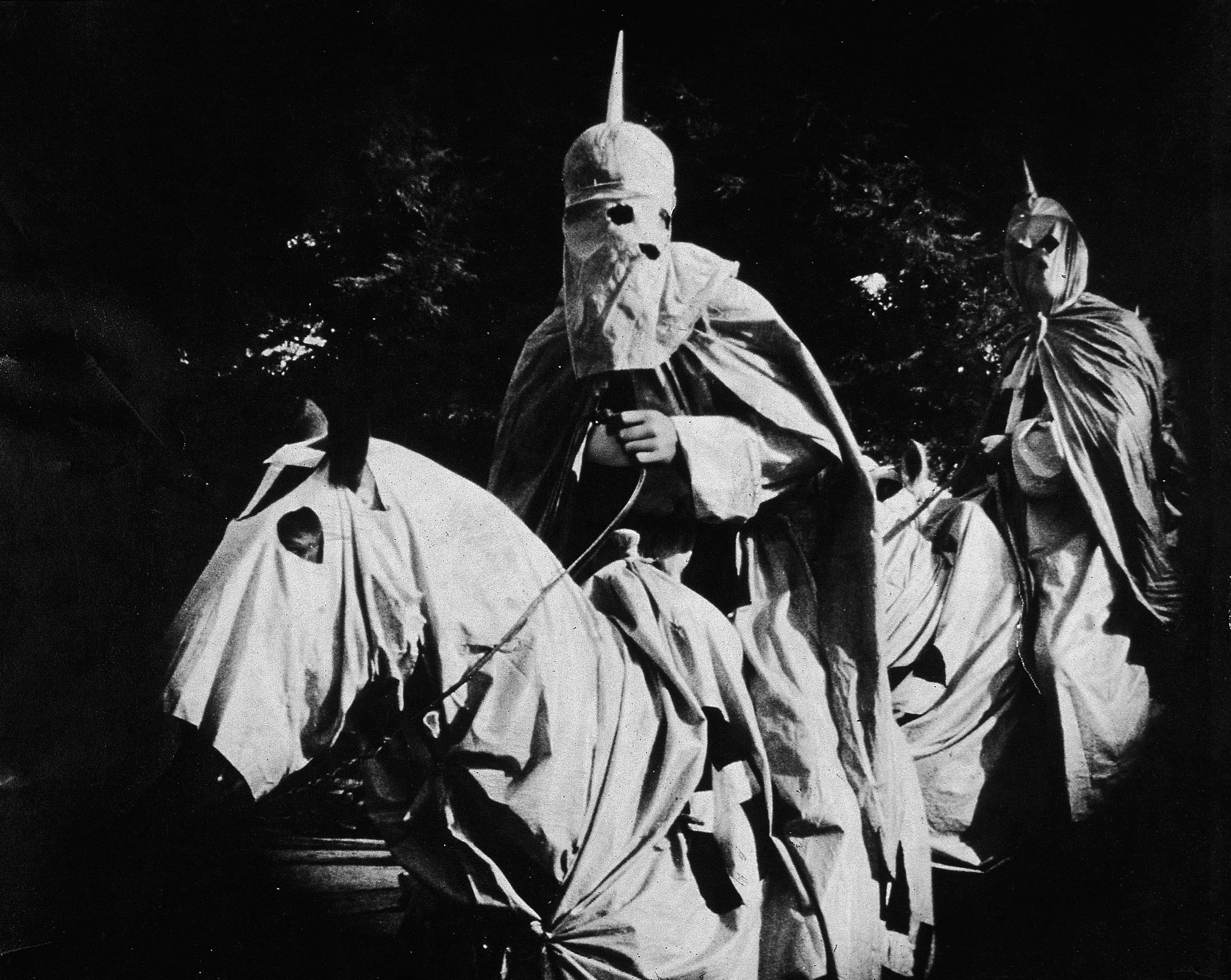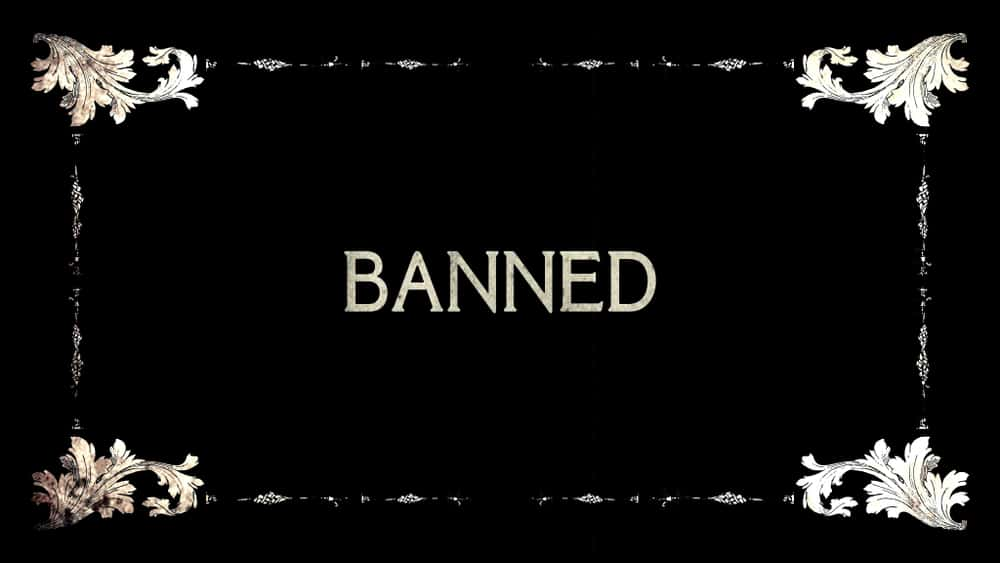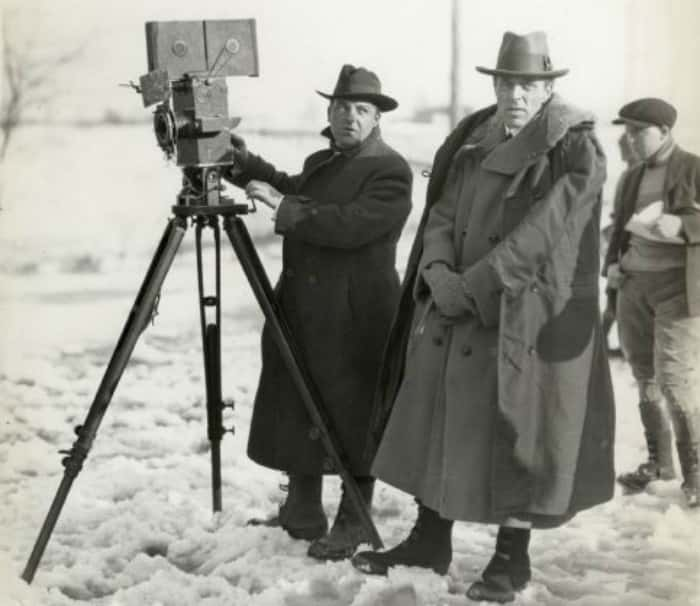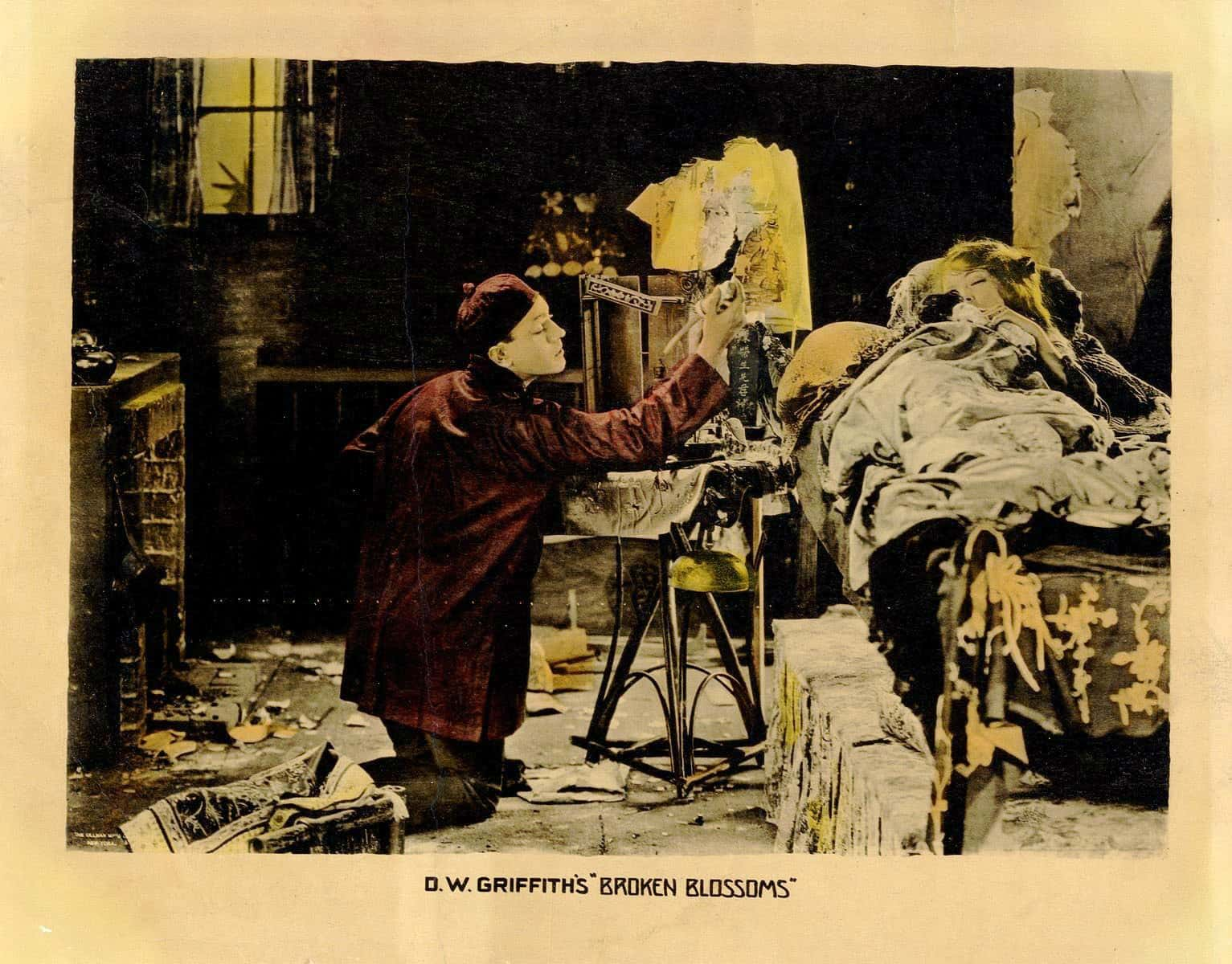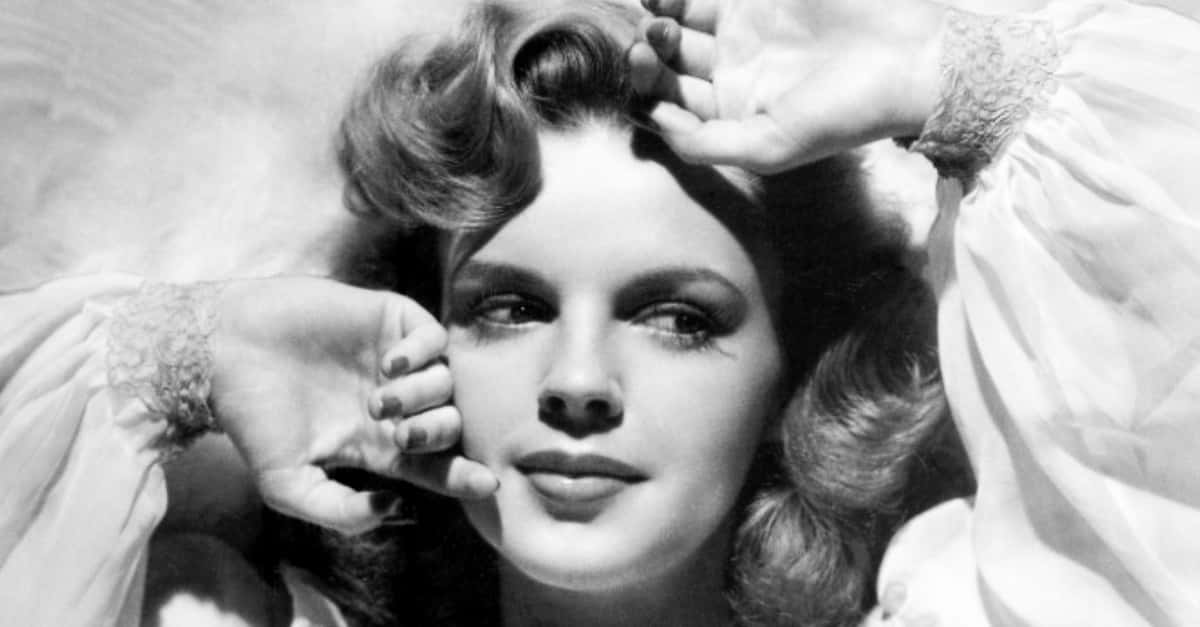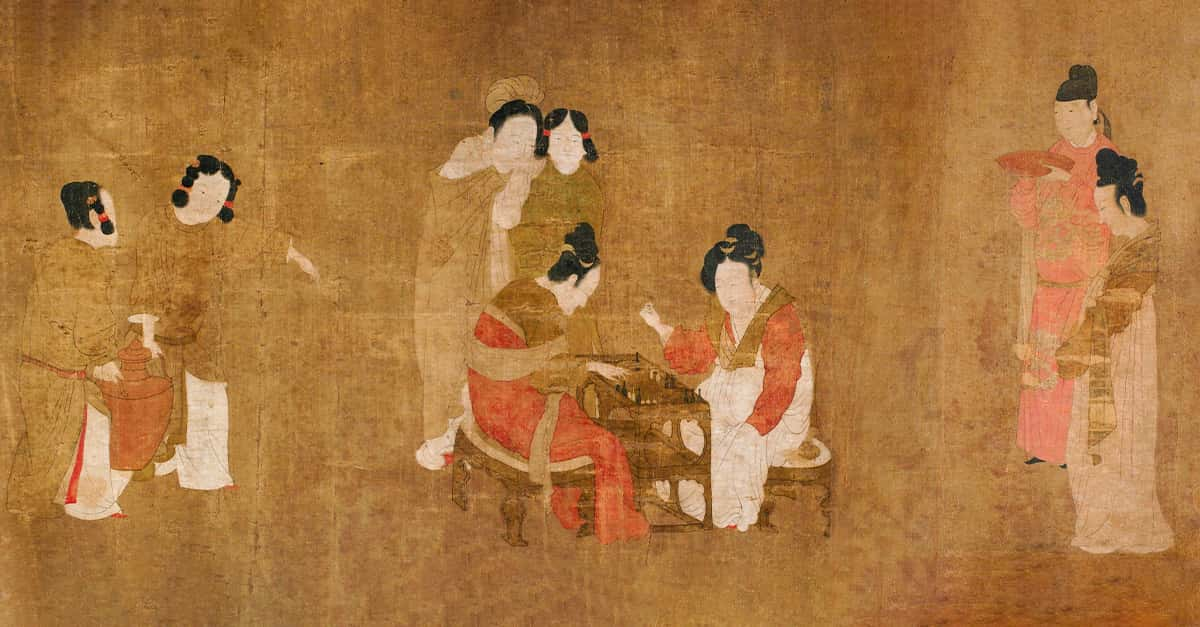As Hollywood boomed in the Jazz Age, stars like Greta Garbo, Louise Brooks, and Rudolph Valentino entranced cinema-goers all over the world. But as the Silent Film era saw Hollywood's rise, it also learned that if something goes up, it must come down. Behind the camera, heartthrobs and screen sirens led chilling double lives full of scandal, tragedy, and heartbreak. With its twisted secrets and magnetic celebrities, the Roaring 20s took "dark glamor" to the next level.
Silent Film Stars Facts
1. A Star Is Born
Charlie Chaplin was once the biggest star in the entire world, but a cruel twist of fate—and his own dark demons—destroyed his reputation, turning his fame into infamy. Yet when it comes to this English king of comedy, those scandals are just the beginning.
Chaplin's childhood was like something out of a Charles Dickens' novel. His parents, Hannah and Charles Sr., were both roaming music hall actors with very little stable income. Chaplin and his older half-brother Sydney grew up in abject poverty, but it was about to get so much worse. His father and mother soon became estranged, with his dad all but abandoning the family.
First row, third from left
2. The Role of a Lifetime
Chaplin's most well-known role is The Little Tramp, the gentile and clumsy character he played in many of his films. Except the Little Tramp hid a dark secret. Later, Chaplin's daughter Geraldine once confessed that Chaplin was obsessed with achieving immortality through the character, and he was so afraid he wouldn’t be remembered that he let the Tramp appear on almost anything.
3. It's a Nice Day for a Sham Wedding
When he was a rising star, Chaplin's 16-year-old lover Mildred Harris confessed to him that she was pregnant, forcing him to marry her in a quickie wedding. Chaplin was deeply unhappy in this first marriage—but he didn't know it was going to get much worse. When their son was born, the baby boy was severely malformed, and died just days later. Within a year, Chaplin and Harris had divorced.
4. Second Time's Not the Charm
Chaplin's second marriage to the starlet Lita Grey was even more troubled than his first. Like his first wife Mildred, Grey was just a 16-year-old girl when she met the 35-year-old Chaplin...and got pregnant. Chaplin hastily wed the girl in Mexico and tried to be happy. He wasn't. Chaplin spent all his free time desperately trying to avoid Grey.
In 1926, Grey unsurprisingly filed for divorce, charging Chaplin with infidelity, misconduct, and even "perverted desires." When the press got a hold of the allegations, the public demanded to ban his films. In the end, Chaplin paid Grey a massive sum of $600,000 to make it all go away.
5. Learning From a Pro
Chaplin's interest in comedy came from one incident with his beloved mother. During one period of his childhood, the young Charlie was incredibly ill and had to spend weeks recovering in bed. While he was there, his mother sat beside the window and re-enacted anything she saw that might amuse her son. It was then that Chaplin realized the power of comedy.
6. Don't Call It a Comeback
In 1972, after decades of exile, Chaplin finally traveled to America again to pick up an honorary Oscar. His appearance was absolutely heartbreaking. When he came on the stage, the audience gave him an incredible 12-minute standing ovation. Chaplin was visibly touched that he hadn't been forgotten after all these years. As he said, “Words seem so futile and so feeble...you are all wonderful, sweet people. Thank you.”
7. Just One More Take, I Can Do It!
Actors go to far lengths sometimes in their roles, and Chaplin is no exception. One day, Chaplin even ended up in the hospital for severe insulin shock. Why? Well, he reshot one scene for his masterpiece The Gold Rush a whopping 63 times. As a result, he had to eat a prop boot, which was made of black licorice, over and over again.
8. Seal of Approval
Chaplin almost decided to pull the plug on his classic film The Great Dictator because he worried that people wouldn’t find his mockery of Hitler funny. When it came time to make a decision, Chaplin got encouragement from the highest source in the land: President Franklin D. Roosevelt. Roosevelt actually called Chaplin up and told him to go forward with it.
9. Young Love
Chaplin had experienced public troubles in love before, but his last marriage was his most infamous. In 1943, Chaplin married the young Oona O'Neill, the 17-year-old daughter of famed playwright Eugene O'Neill. The actor obviously had a well-known taste for young girls, but even this was too much for the public to take. Why? Chaplin was 54 years old at the time.
Despite the age difference, it was a happy union. O'Neill and Chaplin had eight children and remained together until Chaplin's death.

History's most fascinating stories and darkest secrets, delivered to your inbox daily.
10. Even Better Than the Real Thing
According to lore, Chaplin once entered a "Charlie Chaplin Look-a-Like" contest undercover, just to see if he could win the prize for his own iconic look. He was sorely disappointed. Depending on the source you read, he came either in a disappointing second or a middling third. Probably not the results the bona fide Chaplin was expecting.
11. The Case of the Body Snatchers
In 1977, Chaplin passed on at the ripe age of 88 from a stroke in his sleep—but even in death, the scandal continued. Get this: After his family buried him, grave-robbers dug up his body and held it for ransom. The thieves demanded his grieving loved ones pay $600,000 for the deceased actor's return. Luckily, though, his widow Oona had a trick up her sleeve.
Oona had the robbers' phones tapped, allowing the authorities to track them down and detain them. After all that, Chaplin was reburied in a vault surrounded by impenetrable cement.
12. Behind Bedroom Doors
In the 1940s, the middle-aged and very married Chaplin had a tryst with 22-year-old aspiring starlet Joan Barry. Predictably, they were doomed to a ruinous end. When Chaplin broke up with Barry, the young girl did not take it well. She reportedly suffered from obsessive and paranoid behavior, and the breakup only made things worse. When she resurfaced in Chaplin's life, Barry claimed she was pregnant—and that Chaplin was the father.
13. Public Enemy No. 1
After her child, a daughter named Carol Ann, was born, Barry sued Chaplin for parental support. The move ignited a frenzy in the papers about Chaplin's moral depravity and degradation. But when the trial started, the real horror began. Chaplin's lawyers used blood-type evidence to prove that he wasn't the father. However, the tests were inadmissible at the time, and Barry won the suit. Chaplin had to pay $75 every week until Barry’s child turned 21—even though Carol Ann wasn't his daughter.
14. Storming Into Hollywood
Upon moving to Hollywood from Sweden, Greta Garbo became one of the most beautiful and exciting movie stars of the 1920s and 30s. She was best-known for portraying heroines who were strong-willed and mysterious, much like the actress herself. By the time she retired, "The Swedish Sphinx" had starred in 28 films and become a complete legend, but behind the scenes, things weren't so rosy...
15. No, No, and No!
In keeping with her general dislike of the Hollywood life, Garbo never signed autographs, answered fan mail, or gave interviews. She also refused to attend film premieres or awards ceremonies, even turning down an invite to the 1955 Oscars, where she was promised an honorary Oscar. After all, we are talking about the woman who famously said "I want to be alone."
16. Devoted to Diets
For her entire life, Garbo was always on one diet or another, and she particularly liked fad diets. When she met nutritionist Gayelord Hauser, they hit it off, and she started following his diet. The diet consisted of drinking buttermilk, eating raw yeast, vegetables, nuts, and yogurt. While most of Garbo's glamorous life fills me with envy, that weird diet's all hers.
17. Where’s Greta?
In her later years, Garbo was almost as elusive as Waldo. She loved going out for walks and would wear men’s pants, sunglasses, and big hats when she did, but she wasn’t totally unrecognizable. New Yorkers got a real kick out of spotting and recognizing her through her disguises.
18. I Said Cut!
During the filming of Grand Hotel, Garbo got so caught up in a romantic scene with John Barrymore that she continued kissing him for a full three minutes after the director yelled cut. Hot!
19. Garbo the Spy
During WWII, Garbo allegedly assisted the British Secret Intelligence Service by secretly collecting information about Nazi sympathizers in Sweden. She also supposedly transmitted messages back and forth between the British agents and the King of Sweden.
20. The Feeling’s Not Mutual
While Hitler adored Garbo, she did not return the feeling. She allegedly wanted to meet Hitler in person to try and convince him to stop the war. She also had a devious backup plan just in case her personality alone couldn’t do it. As she mused to her friend Sam Green, “I would have taken a gun out of my purse and shot him, because I'm the only person who would not have been searched.”
21. She Speaks!
As Hollywood began to usher in the era of the “talkies,” many silent film stars failed to make the transition, and MGM was understandably desperate to keep their biggest star out of them for as long as possible. When they couldn’t hold out any longer, they made a pretty big deal about it, and structured an ad campaign around the tag line “Garbo Talks!”
Luckily for them, audiences were immediately enchanted with Garbo’s voice, and her first talkie Anna Christie earned Garbo her first Oscar nomination.
22. Royal Refusal
According to her Los Angeles Times obituary, MGM once arranged for Garbo to have lunch with Prince Wilhelm of Sweden, but she turned him down with one of the most epic rejection lines in history, saying “Thank you. I’m not hungry.” Ouch.
23. Mutual Dislike
Clark Gable was a rising star known for his looks, and he was frequently tapped to star with some of the most beautiful women in Hollywood, including Greta Garbo. On screen, they played well together and their one film Susan Lenox was a hit. Off screen, however, they allegedly disliked each other immensely. She thought his acting was “wooden,” and he thought she was a “stuck up snob.”
24. Double Loss
Garbo became a massive star after she made the jump from Europe to the US, but few people knew about the tragic life she was leaving behind. When she was young, she suffered the loss of two close family members in less than a decade. When she was 14, her father died of nephritis (inflammation of the kidneys), and then just seven years later, her sister died of lymphatic cancer.
25. Playing it Up
The supposed true love of Garbo’s life was silent film actor John Gilbert, with whom she starred in several films. But sadly, marriage just wasn’t in the cards for the pair. He proposed several times, finally getting her to agree to a double wedding with King Vidor and actress Eleanor Boardman. On the day of the wedding, however, she betrayed him with a heartbreaking gesture. Garbo left him at the altar.
26. The Great Stone Face
In Hollywood’s silent era, few people were as successful and memorable as Buster Keaton. Known for his deadpan expression, this multifaceted man spent the 1920s ruling the silver screen with death-defying stunts that inspired Harry Houdini and Jackie Chan. While Keaton rose to fame with comedies, when the camera wasn't rolling, his life wasn't so full of laughs. From his painful career slump to his romantic pains, Buster Keaton defined Hollywood drama.
27. That was Real?!
Anyone who has seen Steamboat Bill Jr. will know that the film includes a moment where a cyclone causes a house’s front to collapse on top of Keaton. His character only survives because he is standing precisely where the open window is. Believe it or not, there was no trick behind this particular stunt. Keaton and his crew meticulously calculated exactly where Keaton should stand, knowing full well that if they were off by even a few inches, Keaton would be killed.
Such was the tension when they filmed that scene that many people on set turned away, too terrified of potentially seeing Keaton get crushed to death. Thankfully, he survived, and created one of the most incredible shots in film history.
28. This Aged Well
One of Keaton’s biggest films from his heyday was The General, a silent comedy that was set during the Civil War. It should have been a hit, with the studio shelling out major money for elaborate stunts (like letting a real train fall into a river!) but sadly, it was a major flop. The expensive failure ended Keaton’s auteur-style control over his own films.
Years later, The General is now regarded by many as Keaton’s masterpiece.
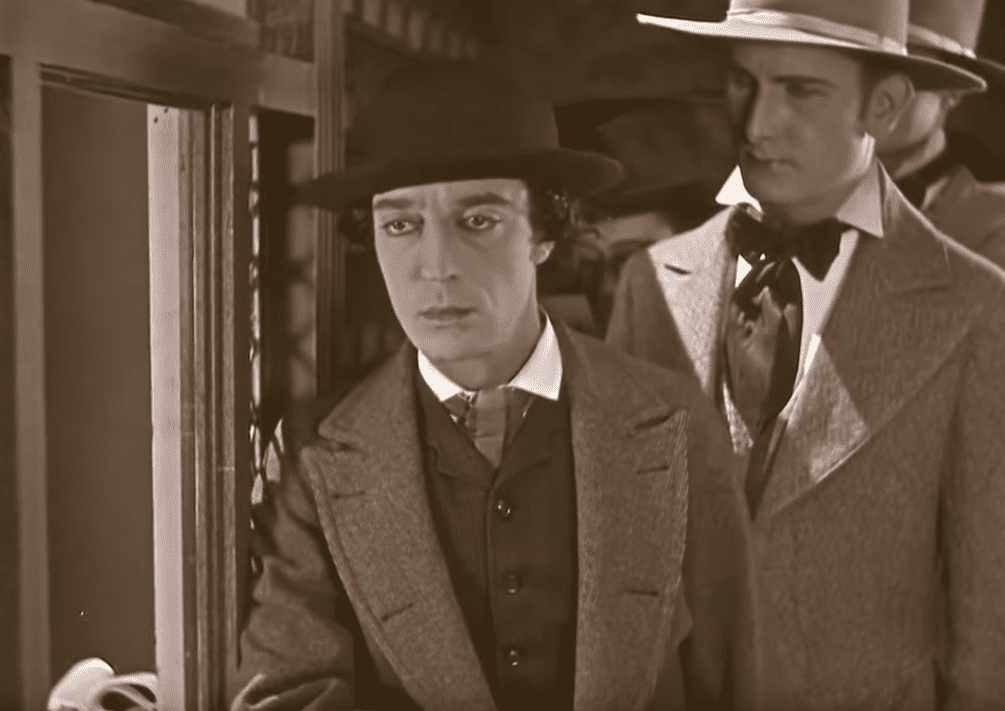 The General (1926), United Artists
The General (1926), United Artists
29. Friends in Sneaky Places
During his career slump in the 1930s, Keaton truly fell on hard times. Not only did he struggle with alcoholism and a wrecked personal life, he was also making very little money and had to sell his beloved mansion. At one point, his alcoholism became such an issue that he was institutionalized, straitjacket and all. However, even this couldn’t contain Keaton, as he’d been taught how to escape a straitjacket by family friend and magician Harry Houdini.
30. Reversal of Fortunes
In 1921, Keaton married actress Natalie Talmadge, who acted alongside him in the film Our Hospitality. The couple had two sons, James and Robert, both of whom took their mother’s surname. As it was a Hollywood marriage, there was a lot of gossip about the union, with people specifically thinking that Keaton was only marrying Talmadge for her connections in Hollywood. Whether that’s true or not, the irony nowadays is that Keaton’s name endured far longer than Talmadge’s.
31. The Honeymoon’s Definitely Over
Keaton’s marriage to Natalie Talmadge did not end well. Following the birth of their second son, Talmadge didn’t want any more kids, and even moved into a separate bedroom to make sure that happened. Problems kept building, such as Keaton’s extramarital affairs and Talmadge’s excessive spending, and the couple divorced in 1932. Talmadge was not only awarded the entirety of Keaton’s fortune, she prevented him access to their children.
Keaton, for his part, was suffering badly from alcoholism and dealing with the depressive slump that his career was in.
32. Could He Ever Watch It Again?
Keaton always performed his own stunts, even when they risked his life. Case in point: When Keaton filmed Sherlock, Jr., one stun had him hang from a tube that was hooked up to a basin full of water. On cue, the water poured out, but the force of the deluge was so intense that it actually broke Keaton’s neck. And good luck getting through that scene next time you watch it—Keaton ended up using the actual footage of his brutal injury in the final product.
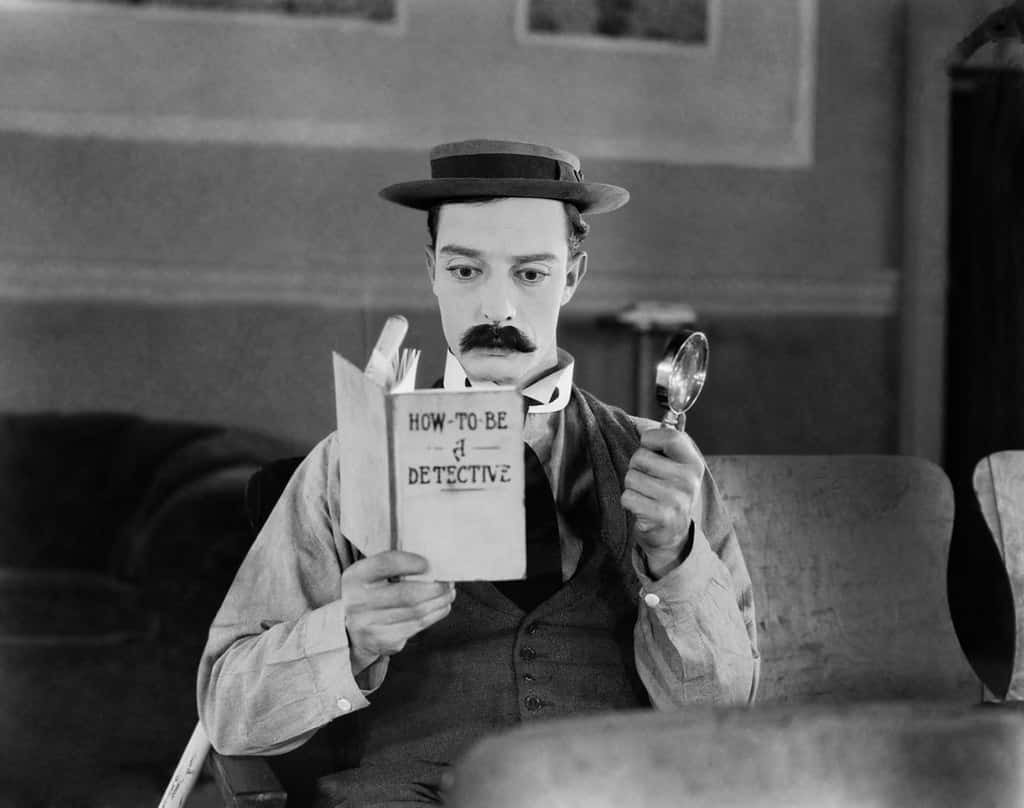 Flickr, Breve Storia del Cinema
Flickr, Breve Storia del Cinema
33. From Bad to Worse
As if his first marriage didn’t end badly enough, Keaton rebounded with a truly horrific second marriage. In 1933, just a year after his divorce, Keaton married Mae Scriven, his nurse. As you can imagine, it wasn’t exactly the most romantic marriage; Scriven claimed that she didn’t know Keaton’s real first name until after the wedding, and Keaton claimed that he was going through an alcoholic binge from which he remembered nothing. It only took them three years to divorce after Scriven caught Keaton in bed with another woman.
34. Third Time’s the Charm
In 1940, Keaton married for a third and final time, to Eleanor Norris. Norris was credited with not only saving Keaton’s life by helping him curb his alcoholism, but also with saving his career as a result, as he was able to return to work more effectively. Not only that, Norris learned Keaton’s comedy routines so that they appeared as a double act in Paris’s Cirque Medrano.
Norris and Keaton remained a couple for 26 years until Keaton’s death.
35. Don’t Tell Him!
Keaton was a heavy smoker throughout his life, and this naturally affected his health in a very bad way. However, when doctors diagnosed him with lung cancer in 1966, they dealt him a cold betrayal. Neither they nor Keaton's family never actually told him what was wrong with him. They were allegedly worried that knowing about the cancer would be “detrimental to his health.”
Keaton went to his grave convinced that he was recovering from bronchitis and wondering why he wasn't allowed to leave the hospital.
36. The Iconic Flapper
Louise Brooks was once one of the world’s biggest stars. With her iconic bobbed haircut and hard-partying lifestyle, “Lulu” epitomized the Jazz Age Flapper Girl, bringing a sense of flirtatious fun to the stages and screens in the United States and Europe. But then, everything changed. Just as suddenly as Louise Brooks came, she was gone.
37. Landing on Her Feet
After proving her mettle in vaudeville, Brooks became part of the legendary Ziegfeld Follies, where the bewitching brunette caught the eye of Walter Wanger, a producer for Paramount Studios. Not only did Wanger sign Brooks to a five-year studio contract, they also began an on-again, off-again relationship.
During some of the couple's "off" periods, Brooks dated Hollywood heavyweights like Charlie Chaplin and Greta Garbo.
38. Evicted!
In Hollywood, Brooks immediately built a reputation for decadence and debauchery. Thrown out of the Algonquin Hotel, she took up residence at the Martha Washington Hotel. She was once again thrown out. The evictions took place in the span of a month.
39. Eurotrip
At the height of her fame, Brooks left the United States to work in Germany. The three films she made there, Pandora’s Box, Diary of a Lost Girl, and Miss Europe, are considered the best of her career. Unfortunately, her trip would have terrible consequences.
40. The Silent Treatment
Brooks’ final film for Paramount was The Canary Murder Case. Originally a silent picture, executives decided it should be a “talkie.” And while no one was too mad that Brooks left Paramount to work in Germany, her refusal to return and record dialogue for the film landed her on Hollywood’s blacklist. But even when the studio threatened to run her out of town, Brooks was unfazed. She simply replied, "Who wants to work in Hollywood?"
41. Bust
For a time, Louise Brooks was on top of the world, but as her reputation for bad behavior spread, film roles dried up. By 1932, Brooks declared herself bankrupt. To make ends meet in the 30s and 40s, Brooks worked as a nightclub dancer, gossip columnist, Saks Fifth Avenue sales girl, and—for a brief, unhappy period—a “courtesan.” When her former film-star colleagues saw her at Saks, Brooks says they were “disgusted” and shunned her.
42. For Her Eyes Only
In the late 40s, Brooks wrote her first autobiography, Naked on My Goat. Despite the eye-catching title, the book never saw the light of day: Brooks herself threw the manuscript into an incinerator. Writing, however, proved to be a hidden talent for the former star. Brooks began a second career as a film essayist, historian, and critic, drawing on her wealth of experience and insider knowledge to craft witty, insightful essays that often contradicted the “official” history of Hollywood.
43. #MeToo Moment
There may be other reasons for the decline of Brooks’s film career. She later claimed that Columbia Pictures head Harry Cohn had made advances at her, making it very clear that a film contract could be drawn up if she cooperated. An indignant Brooks refused.
44. Set Romance Gone Wrong
One of the most traumatic moments Brooks faced as a Hollywood star came on the set of Beggars of Life. According to her memoir Lulu in Hollywood, Brooks was so impressed with one of the stuntmen on the film, Harvey, that she shared an intimate evening with him while on location. But the next day, Harvey dealt her an absolutely cold-blooded betrayal.
The morning after, Brooks walked out of the hotel to see Harvey lounging on the porch. He stopped her and, in front of crew members, cruelly and falsely accused her of contracting syphilis from a torrid affair with a studio executive she had, in fact, never met. He then tossed out,"Another reason I want to know [if you have syphilis] is that my girl is coming up at noon to drive me back to Hollywood." No wonder she left.
45. How’d You Like to Be a Star?
In the later stages of her career, Brooks was so unknown that, after appearing in a play under the stage name Linda Carter, she received an offer to do a screen-test for 20th Century Fox. The talent scout had no idea that Brooks once ruled the silver screen.
46. Some Regrets
While her place in film history was secured, Brooks went to her grave filled with disappointment and regret. At the end of her life, she wrote, "How I have existed fills me with horror. For I have failed in everything—spelling, arithmetic, riding, swimming, tennis, golf, dancing, singing, acting, wife, mistress, whore, friend. Even cooking. And I do not excuse myself with the usual escape of ‘not trying.’ I tried with all my heart.” Brooks died of a heart attack on August 8, 1985.
47. The Star Who Lost it All
In more ways than one, Roscoe “Fatty” Arbuckle was the biggest star in America. He was heavy-set but extremely agile—the prototype for a legion of comedic big men—audiences marveled at his physicality. The first actor to receive a million-dollar paycheck, Arbuckle was more popular even than Charlie Chaplin. Then it all went away. Arbuckle spent the final years of his career hiding from the spotlight, tainted by shame and scandal. His tumultuous story makes Fatty Arbuckle one of the most tragic figures in Hollywood history.
48. Stage Dive
Arbuckle didn't have a loving childhood. His mother passed away and his father despised him, so when Arbuckle was 12 years old, he decided to strike out on his own and give showbiz a try.
He entered an amateur talent contest in 1899, but his singing and dancing failed to impress the crowd. Arbuckle panicked and attempted to flee the stage, but he tripped, somehow executed a perfect backflip, and landed in the orchestra pit. The audience roared with applause. In an instant, Arbuckle had gone from getting booed offstage to winning the contest.
49. Just Desserts
After cutting his teeth on the stage, Arbuckle’s comedy chops led him to Hollywood where he collaborated with Buster Keaton, married fellow actress Minta Durfee, and, oh right, made cinema history. Arbuckle's 1913 film A Noise from the Deep marks the first time the pie-in-the-face gag was shown onscreen. The pie was thrown by Mabel Normand, the target, of course, was Arbuckle himself.
50. Bonus Points
In 1920, Arbuckle signed a million-dollar contract with Paramount Pictures; he was the first actor to earn $1 million a year. One of the clauses of Arbuckle’s contract was basically cruel: it held that he must remain over 250 pounds. He would even receive a bonus if he added 50 or 100 pounds. Arbuckle dutifully obliged, and spent the rest of his life hovering around 300 pounds.
51. Fat Pride
That’s not to say Arbuckle was always comfortable with his weight. He made a point of not using his weight as a joke: he wouldn’t, for example, get stuck in a chair. He hated to be called Fatty, the nickname he had carried around since childhood. On set, whenever crew or cast members referred to him as Fatty, he would shoot back, “I got a name, you know.”
52. Party’s Over
Arbuckle was on top of the world in 1921, and so he was entitled to take a little vacation. On September 5, Labor Day, he and some friends rented a string of rooms at the St. Francis Hotel in San Francisco and threw a little gin party. The party proved to be the biggest mistake of Arbuckle’s career.
After a nap, Arbuckle woke to discover his party had been crashed by several uninvited guests. Among them was Virginia Rappe, an actress with a reputation for overdoing it at parties. Rappe appeared to be in great distress, clutching her stomach and tearing at her clothes. She lay in bed at the St. Francis Hotel for two days before being taken to hospital.
53. Accused
While Rappe was in hospital, her friend, Maude Delmont, told doctors Rappe had been sexually assaulted by Arbuckle. While doctors found no signs of sexual assault and Delmont had a reputation as an extortionist, police took the report seriously and speculated that Rappe’s organs must have been crushed under Arbuckle’s weight.
Rappe died from a ruptured bladder on September 9, 1921. Fatty Arbuckle, charged with manslaughter, turned himself in to the police.
54. Fatty on Trial
After a media storm, the first trial was set up for November of 1921. Public opinion toward Arbuckle was so negative that when his estranged-but-supportive wife arrived at the courthouse, someone in the crowd tried to shoot her.
55. The Defense Rests
The prosecution’s case was less than solid. Fatty Arbuckle was, by every account, a kind-hearted and gentle person. Multiple guests at the party also testified that he had never been alone with Rappe. Doctors found no evidence of sexual assault and testified that Rappe had been struggling with bladder problems for some time. After a dramatic trial, the jury couldn't reach a verdict. With a mistrial, Arbuckle would have to repeat his nightmare in court again.

56. Third Time’s a Charm
The defense pulled no punches for the third trial in March 1922. Not only was Rappe’s party-girl reputation brought up, but Buster Keaton was brought to the stand as a character witness. Then Zey Prevon, the prosecution’s main witness, recanted his testimony, saying he was pressured to lie by San Francisco DA Matthew Brady.
It took the jury just six minutes to acquit the movie star. After the verdict was delivered, the chairman of the jury read a formal apology to Arbuckle, declaring “Acquittal is not enough for Mr. Arbuckle.” Arbuckle had the apology framed and hung in his home.
57. Breaking the Bank
By the time the smoke had cleared, Arbuckle owed the equivalent of $10.5 million in legal fees, plus a $500 fine for violating prohibition laws. Arbuckle was forced to sell his house and his cars to cover the costs. Sadly, his marriage also disintegrated.
58. Outcasted
Though Arbuckle had been declared innocent, the Motion Picture Producers and Distributors of America dealt him a heartbreaking blow. They barred Arbuckle from ever working in movies again. The ban was eventually lifted, but theater owners were still reluctant to show any new Arbuckle movies. Because of this, most of Arbuckle’s films were never preserved and are now lost to history.
59. The Best Day
Roscoe “Fatty” Arbuckle died in his sleep on June 23, 1933, following a heart attack. Earlier that day, he had signed a contract with Warner Brothers to make a full-length feature film, and then went out that evening to celebrate he and Addie’s one-year anniversary. Arbuckle told friends that evening, “This is the best day of my life.”
60. Too Pretty For This World
Gorgeous, talented, and wife to an indeterminate number of husbands, Barbara La Marr took "femme fatale" to the next level. Combine the allure of Hollywood glamor, the boldness of an independent woman professional in the 1920s, and the drama of a sordid personal life rife with fiction and romance, and you’ve got Barbara La Marr. Her star burned bright and it burned fast. Though she spent barely 30 years in the world, "The Girl Who Was Too Beautiful" more than made her mark.
61. Sleep When You’re Dead
As La Marr's film career rose, La Marr was thrown into Hollywood night life. The already-wild actress adjusted to this change of pace with enthusiasm. She once claimed never to sleep more than two hours a night because she had “better things to do.”
62. Sleeping Beauty
La Marr’s party life and sleep deprivation finally caught up to her. While shooting The Girl from Montmartre, disaster struck. One day on set, La Marr suddenly collapsed and even fell into a coma – but that didn’t stop production. The studio used a body double in long shots to complete the film. No one’s irreplaceable in show business; not even the girl who’s too beautiful.
63. Boys Drool
La Marr was a dazzling beauty who could entrance a man in mere minutes. Unfortunately for her, La Marr tended to attract... less than stellar options. After four or five failed attempts at wedlock (more on that later), La Marr was officially tired of romance. She was quoted as saying, “I am sick of men. The admiration of men. The so-called love of men.” Honestly, me too, sis.
64. Road Trip!
La Marr and her half-sister, Violet, were very close. The duo would constantly pal around and go out on the town for adventures. But things took a disturbing turn on one fateful day. When La Marr was 16 years old, she and Violet took a three-day drive with a man named C.C. Boxley. They got all the way to Santa Barbara when La Marr realized the terrible truth. Boxley had no intention of taking them back home ever again.
65. Found by Police and the Lime Light
The press gobbled up the story of the two young women who were kidnapped by the sinister C. C. Boxley. Luckily, the police issued a warrant for Boxley's arrest, with their quick actions leading the girls to be saved from captivity. A strategic showgirl from the start, La Marr wasted no time in crafting fantastical details about herself to extend the media attention. The 16-year-old claimed she was adopted and even that she was a widow.
66. Partying Problem
La Marr’s penchant for having a good time got out of hand fast. By the time she was filming Thy Name Is Woman, the production supervisor had to make regular visits to the set, just to make sure that La Marr’s notoriously heavy drinking wasn’t interfering with filming. In other words, a fully grown woman had a baby sitter.
67. The Real Deal?
La Marr’s first husband shared her proclivity for changing names. Marrying her as Max Lawrence, it later turned out he was actually an ex-soldier name Lawrence Converse. Unfortunately for La Marr, that was just the beginning of this web of deception. It turned out that Lawrence Converse already had a wife and children. He was arrested for bigamy the day after their marriage. He suffered a fatal blood clot just three days later.
68. Guess She Liked Bad Boys
La Marr likely thought she’d have better luck in the romance department when she married dancer Philip Ainsworth. With their shared backgrounds and Ainsworth's dashing good looks, what could go wrong? A lot, apparently. The good news is he didn’t immediately kick the bucket. The bad news is he was still arrested, not for bigamy but for passing bad checks. At least he didn’t have a secret second family?
69. Third Time, No Charm
La Marr’s third marriage (also to a dancer, a man named Ben Deely) ended for slightly normal reasons. He was twice her age, an alcoholic, and a gambling addict. You know you need to rethink your type when this guy sets the standard for a good husband. Of course, the marriage between La Marr and Deely inevitably ended in divorce. But hey, no arrests or deaths!
70. Secret Baby??
La Marr did, indeed, have a child! Her son, Marvin Carville, was born on July 29, 1922, but his arrival wasn't exactly public knowledge. In a scandalous twist, especially for the 1920s, little Marvin's father’s identity was never publicly revealed. But that's not even the juiciest part. His identity as La Marr’s son only came to light after she died.
71. Beauty is Pain
Sleep deprivation, over-drinking, and exhaustion played an obvious role in La Marr's steady health decline- but her extreme weight loss tactics may have contributed as well. In the last two years of her life, La Marr was plagued with insecurities about her already-thin frame. She went on several crash diets and was even rumored to have swallowed a tapeworm.
In the end, she achieved extreme litheness, though it cost La Marr her life. When she died of tuberculosis, she weighed less than 80 pounds.
72. The Best Funeral You’ll Ever See
La Marr’s funeral mimicked the way she lived with its grandeur and drama. In a crowd of 3,000 fans, no less than five women reportedly fainted. After La Marr’s body was removed from the church, people swarmed the chapel trying to get their hands on the floral arrangements. The entire thing was a mess, and La Marr probably wouldn't have had it any other way.
73. The Original Heartthrob
He was born—deep breath now—Rodolfo Alfonso Raffaello Pierre Filibert Guglielmi di Valentina d'Antonguella, and came to be known as the Great Lover, the Latin Lover, the Sheik...or simply Rudy to his friends. One of the first male heartthrobs of cinema’s silent era, Rudolph Valentino’s short life was filled with astronomical success and fame, but also plagued with toxic criticism, tumultuous love affairs, bad fortune, and poor health.
74. The Big, Rotten Apple
The “Great American Melting Pot” hasn’t always been an easy place to integrate oneself, and sure enough, New York City living was not easy on Rudy. Money was drastically tight; he took on odd jobs like bussing tables, gardening, and "taxi dancing" which really meant keeping single women company at clubs. To make ends meet, Valentino sometimes slept in Central Park or in all-night movie theaters that continuously ran movies.
75. On His Way to Steal Your Girl
Valentino made a big impression on a screenwriter named June Mathis. After seeing him in an early screen role, she insisted he perform in her movie, The Four Horsemen of the Apocalypse. Mathis' instincts were right: After seeing the early cuts, the movie's director Rex Ingram decided to give Valentino even more screen time. He asked Mathis to write a brand new scene where Valentino’s character steals another man’s woman, and together they dance the tango. With this scene, the "Latin Lover" was born.
76. Sign of the Times
Valentino was active at a time when traditional modes of masculinity were clung to with an icy grip, and gay-bashing was rife. Despite persistent speculation and rumors about his sexuality—along with the notion that his relationships with Acker and Rambova were merely “lavender marriages”—by all credible accounts, Valentino was straight. The relentless scrutiny left him feeling constantly insecure about his masculinity.
77. Boxed In
When a reporter for the Chicago Tribune blamed Valentino for the presence of a powdering station in a men’s bathroom, Valentino responded in the most perfect way possible. He wrote to the paper and challenged the writer to a boxing match. Apparently the reporter was all talk and no action because the match never materialized.
78. The Fatal Collapse
During the press tour for his final film, The Son of the Sheik, Valentino collapsed and was hospitalized due to a perforated ulcer. Fans stood outside Polyclinic Hospital in New York for a week, but it was no use: Their beloved Valentino succumbed to infection around midday on August 23. He was only 31 years old when he died.
79. Braver Than Most
Valentino asked his doctor, “And do I now act like a 'pink powder puff'?" His doctor reportedly responded that he was actually “braver than most.”
80. Burial Blues
It turned out that Valentino was in serious debt at the time of his death, and his heirs could not afford a burial plot for him. Friend and screenwriter June Mathis agreed to loan him one of the spaces she owned at Hollywood Park Cemetery so that he could be interred without delay. However, when Mathis died the following year, all further memorial plans for Valentino fell through. To this day, his body remains in that temporary space.
81. Funeral Hysterics
Valentino’s passing left mourners in a state of inconsolable grief. Over 100,000 desolate mourners lined the streets outside the church where his funeral service was held, there were riots, and a number of suicide attempts were reported.
82. Scandalo
When Valentino was a taxi dancer in New York City, he befriended the Chilean heiress Blanca de Saulles, and became embroiled in one of the biggest New York scandals of the time. Blanca was unhappily married to John de Saulles, a prominent businessman. When the couple divorced, Valentino testified in court in support of Blanca’s claims that John had been having an affair with Valentino’s dancing partner, Joan Sawyer. After the divorce, John used his political connections to have Valentino arrested on unspecified—and most likely false—charges. Even though Valentino quickly paid his bail and was released, his reputation suffered greatly.
After the trial, Valentino couldn't find work and was shunned by his old friends and colleagues. But things got worse: Blanca shot her husband dead after a custody dispute for the couple’s son turned ugly. Valentino left town for fear of being called as a witness in another scandalous and damaging trial. He joined a traveling musical which eventually took him to California.
83. Unlucky in Love
Valentino impulsively married his first wife, actress Jean Acker, in 1919, two months after they met. Acker had only seemed to be interested in women at the time, and had reportedly been involved in a love triangle with actresses Grace Darmond and Alla Nazimova. Whether or not she was ever actually romantically interested in Valentino is unclear, but we do know that she regretted marrying him immediately.
Acker locked Valentino out of their hotel room on their wedding night, the couple separated soon after, and Acker moved back in with girlfriend Grace Darmond soon after. They finalized their divorce in 1922, but ironically became good friends afterward.
84. Not-So-Smooth Sailing
Valentino's second marriage was even rockier than the first. Natascha Rambova was not popular with a number of Valentino’s friends and the marriage disintegrated to the point where Rambova was eventually banned from his film sets. That bad blood didn’t end when he died, and he left behind a cruel tribute to her. Valentino passed away a year after their divorce, but luckily for him, he’d updated his will in time—and in that will, he left her one single dollar bill. Ouch.
85. The Woman in Black
For decades after Valentino’s death, a veiled woman in black has arrived at his tomb on the anniversary of his death to place a single rose on his grave. The identity of the woman was a mystery at first, until it was revealed that the whole thing was—you guessed it—a publicity stunt, this time cooked up by press agent Russel Birdwell in 1928. When this got out, several copycats vied to be the new “Woman in Black” and the tradition continued. Film historian Karie Bible is the most recent to have taken up the mantle.
86. The Original "It" Girl
Clara Bow was Hollywood’s First "It" Girl. With her tomboy charms and expressive face, she took Old Hollywood by storm as one of the most iconic “flapper” actresses of her day. These days, Bow’s name isn’t uttered with the same esteem as silent stars such as Lillian Gish or Charlie Chaplin. If you ask us, that’s a darned shame. Her life and career had both the credits and the scandal to match either of those legends.
87. A Rough Landing
Bow’s birth was incredibly risky: Her two older sisters died in infancy and doctors advised her mother not to become pregnant again. If that wasn’t enough, Bow's mother went into labor during a horrendous heat wave. Despite it all, both mother and child were healthy. To quote the actress, “I don't suppose two people ever looked death in the face more clearly than my mother and I the morning I was born. We were both given up, but somehow we struggled back to life."
88. She’s Got It
Clara Bow’s big break came with her role in the 1927 movie It, a silent film adaptation of an Elinor Glyn novella—not the Stephen King horror novel. The movie was a blockbuster and earned her the nickname “It Girl.” The “It-Girls” of the future had her to thank for the moniker.
89. You Have to See It to Hear It
The shift from silent films to talkies shook up Bow’s confidence. Not used to microphones, several scenes in The Wild Party had to be reshot because her eyes kept looking up at the overhead sound equipment. Riddled with nerves, rumors swirled that she kept “rows of bottles of sedatives” at her bedside just to keep it together.
90. Taking a Break
By 1931, studio executives sometimes referred to Clara Bow with a cruel nickname: “Crisis-a-day-Clara.” The pressure of fame, her fading star, and a troubling lawsuit from her secretary put Bow’s mental health in a bad place. Entering a sanitorium at the age of 25, she asked to be released from her final film with Paramount. This retreat effectively ended Bow’s career.
91. Life on the Ranch
Bow made her peace with Hollywood… by getting the heck out of it. With her partner, fellow actor Rex Bell, she left for his Nevada ranch, which she called her “desert paradise.” The couple married in December 1931 in a Las Vegas ceremony. Thanks to a more stable regime of food, sleep, and exercise, Bow managed to become healthy again—for a time. In her words, she only returned to Hollywood “for the sole purpose of making enough money to be able to stay out of there.”
92. It’s A Smaller World After All
Unfortunately, Bow seems to have inherited her mother’s history of mental health issues later in life. After her retirement, she became increasingly withdrawn, both refusing to interact with her husband or let him leave the house by himself. Sadly, things got much worse. In 1944, Bow’s husband Rex Bell ran for the US House of Representatives. Bow attempted to end her own life, writing that she would rather die than live so publicly.
93. Imperfect Patient
Following her suicide attempt, Bow resided in the Institute of Living in Connecticut for her chronic insomnia and abdominal pains. The staff subjected her to shock therapy and diagnosed her with schizophrenia, although she never experienced hallucinations.
94. Three’s Company, Four Is a Crowd
Scandalously for the 1920s, Bow moved in with her boyfriend, cameraman Arthur Jacobson, in 1924. Although Bow’s father also lived with them, this premarital arrangement was still unacceptable by the standards of their day. More importantly, it enraged her studio chief B. P. Schulberg. The boss fired Bow’s boyfriend, which, in turn, enraged Bow. The actress allegedly ripped up her contract, flung it in Schulberg’s face, and told him to stay out of her life. Afterward, Bow’s father would be her “business manager” and people referred to Jacobson as her “brother” for decency’s sake.
95. Maternal Affliction
When she was 16, Bow’s mother fell out of a second-story window and suffered brain injuries that would likely contribute to her epilepsy and psychosis. Mrs. Bow would grow to resent her daughter and once put a knife to the teenager’s throat. The assault led to her mother’s commitment to a sanitorium, where she later died at the age of 43.
96. Words Hurt
Even at the height of her success, film executives had little respect for their biggest box office draw. Some called her a “birdbrain” and “dumbbell,” even as she worked hard to bring them money.
97. Birth of a Filmmaker
There is hardly a film director in Hollywood history more important—or controversial—than D.W. Griffith. During the early years of Hollywood, Griffith’s filmmaking skills were nothing short of groundbreaking. His techniques influenced filmmaking to this day, and Hollywood films copies his style so much that we now take it for granted. However, the offensive subject matter of Griffith's most famous film will forever taint his shining legacy.
98. I Should have Trademarked it!
It’s safe to say that if there’s one phrase associated with a film director to this day, it would be the three-word phrase “Lights, Camera, Action!” We have Griffith to thank for that. He first said it in 1910 while he was filming In Old California. The rest is history.
99. Acknowledging Innovation (and Nothing Else!)
Although Griffith's most well-known and controversial film The Birth of a Nation is now reviled for its use of blackface and its glorification of the Ku Klux Klan, it nevertheless pioneered film techniques which are still used to this day. These techniques include night photography, still shots, panning shots, panoramic long shots, color tinting to indicate drama, and carefully staging a scene to make hundreds of extras look like thousands.
This has caused some scholars to declare that Griffith’s The Birth of a Nation marked the beginning of modern American cinema. That's, um, quite an unsettling history.
100. Boycotting Racism
Despite the fact that Griffith’s The Birth of a Nation was a massive box office hit, not everybody responded positively to the film, even at the time. Theatres in several American cities banned the film, and protests met the film where it was screened. Not surprisingly, one of the groups in strongest opposition to the film was the National Association for the Advancement of Colored People (NAACP).
101. Intentions Vs. Results
Given how Griffith’s reputation has suffered from the label of racism, it might be considered ironic that he himself dedicated many of his early films to criticizing how the United States government treated Native Americans. The most notable of these films were arguably Ramona and The Red Man’s View, which is a title that hasn’t quite aged well, regardless of Griffith’s original intent.
102. Time to Eat Crow!
In 1919, Griffith directed the film Broken Blossoms for the Artcraft Company, which Adolph Zukor ran at the time. However, when Griffith delivered the finished film, Zukor felt enraged by an inferior-quality film. Griffith was so angry that he returned the next day with $250,000 in cash, declaring that he’d buy the film and distribute it himself. Zukor agreed, but he would live to regret it. Broken Blossoms, released through United Artists, was a critical and commercial triumph.
Sources: 1, 2, 3, 4, 5, 6, 7, 8, 9, 10, 11, 12, 13, 14, 15, 16, 17, 18, 19, 20, 21, 22, 23, 24, 25, 26, 27, 28, 29, 30, 31, 32, 33, 34, 35, 36, 37, 38, 39, 40, 41, 42, 43, 44, 45, 46, 47, 48, 49, 50, 51, 52, 53, 54, 55, 56, 57, 58, 59, 60, 61, 62, 63, 64, 65, 66, 67, 68, 69, 70, 71, 72, 73, 74, 75, 76, 77, 78, 79, 80, 81, 82, 83, 84, 85, 86, 13, 87, 88, 89, 90, 91, 92, 93, 94, 95, 96, 97, 98, 99, 100, 101, 102, 103, 104, 105, 106, 107, 108, 109, 110, 111, 112, 113, 114, 115, 116, 117, 118, 119, 120, 121, 122, 123, 124

